








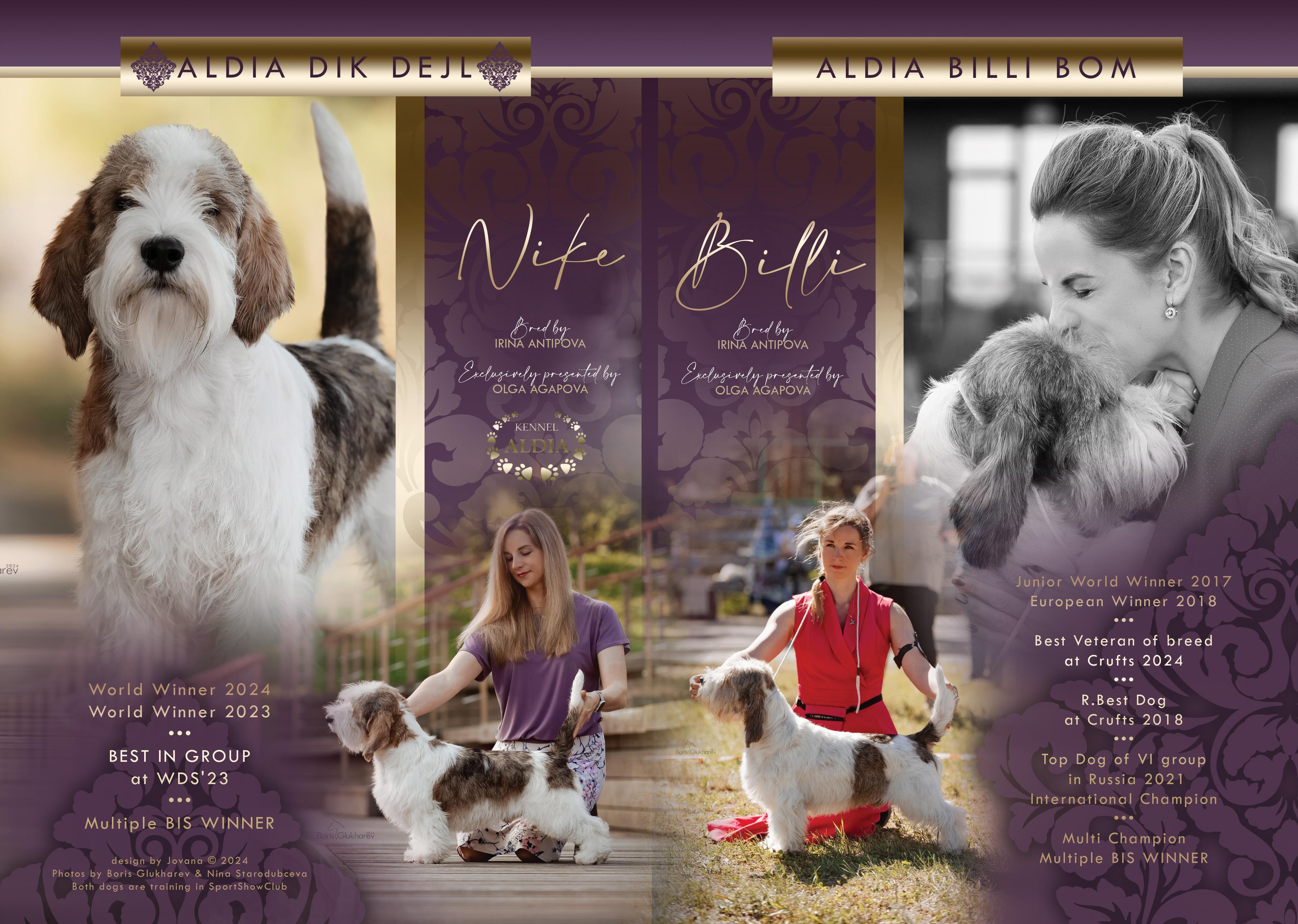


















I’m thrilled to announce that we’re back in print! There’s truly nothing like holding a physical magazine or book in your hands. Despite the advancements in technology, and the fact that we often find ourselves scrolling on our phones while traveling, grooming, and working with our dogs, nothing compares to the experience of reading a tangible publication.
This year, we’re excited to blend our offerings: some months will feature only digital editions, while for major events like the WDS and EDS, we’ll produce both print versions and our beloved Annual magazine. I want to extend my heartfelt thanks for the incredible support you’ve shown us during our return. A big shoutout to our talented writers, designers, advertisers, breeders, owners, handlers, and judges for your enthusiastic contributions.
This edition’s highlight for me is the feature on brachycephalic breeds. It’s unfortunate that many breeders have been facing new restrictions, with little media support. If we don’t unite and advocate for our rights, the future of dog sports may be at risk. In this spirit, we celebrate some remarkable individuals: an insightful interview with Michelle Fraser, a breeder, owner, judge, and founder of Fraser Company; a conversation with Joan Asensio, a successful handler who moved from Argentina to Europe; a spotlight on Junior Handler Alise Semeta, winner of this year’s Split Summer Shows; and insights from Christian Adolini, who recently returned to Italy after his time in the USA. Additionally, we’re showcasing stunning photography by Tereza Subertova from events in Donaueschingen, Split, and the World Cup Sighthound Slovakia. If you’re attending the Euro Dog Show in Celje, best of luck! Be sure to check out our travel tips to make the most of your time in Slovenia.
Wishing you all a wonderful end to the year, and we look forward to bringing you our Annual soon!

JOVANA DANILOVIC Chief Editor
LEE GROGAN Asociate Editor
DJORDE DANILOVIC Social Media BELTRÁN HORTIGÜELA Social Media
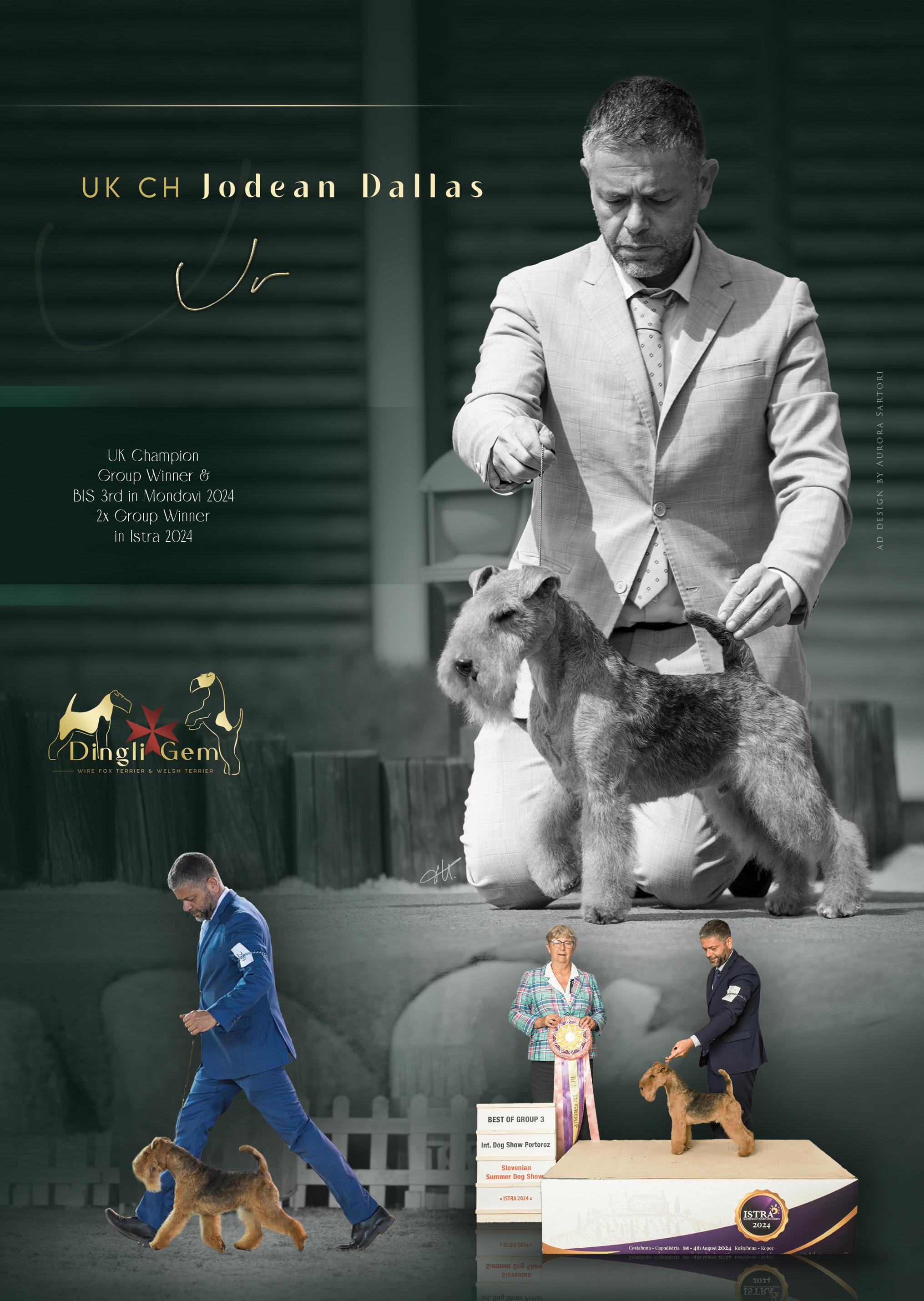

INTERVIEW WITH
INTERVIEW WITH PROFESSIONAL HANDLER


NEXTGEN - INTERVIEW WITH JUNIOR HANDLER



by Tereza Subertova




by Tereza Subertova


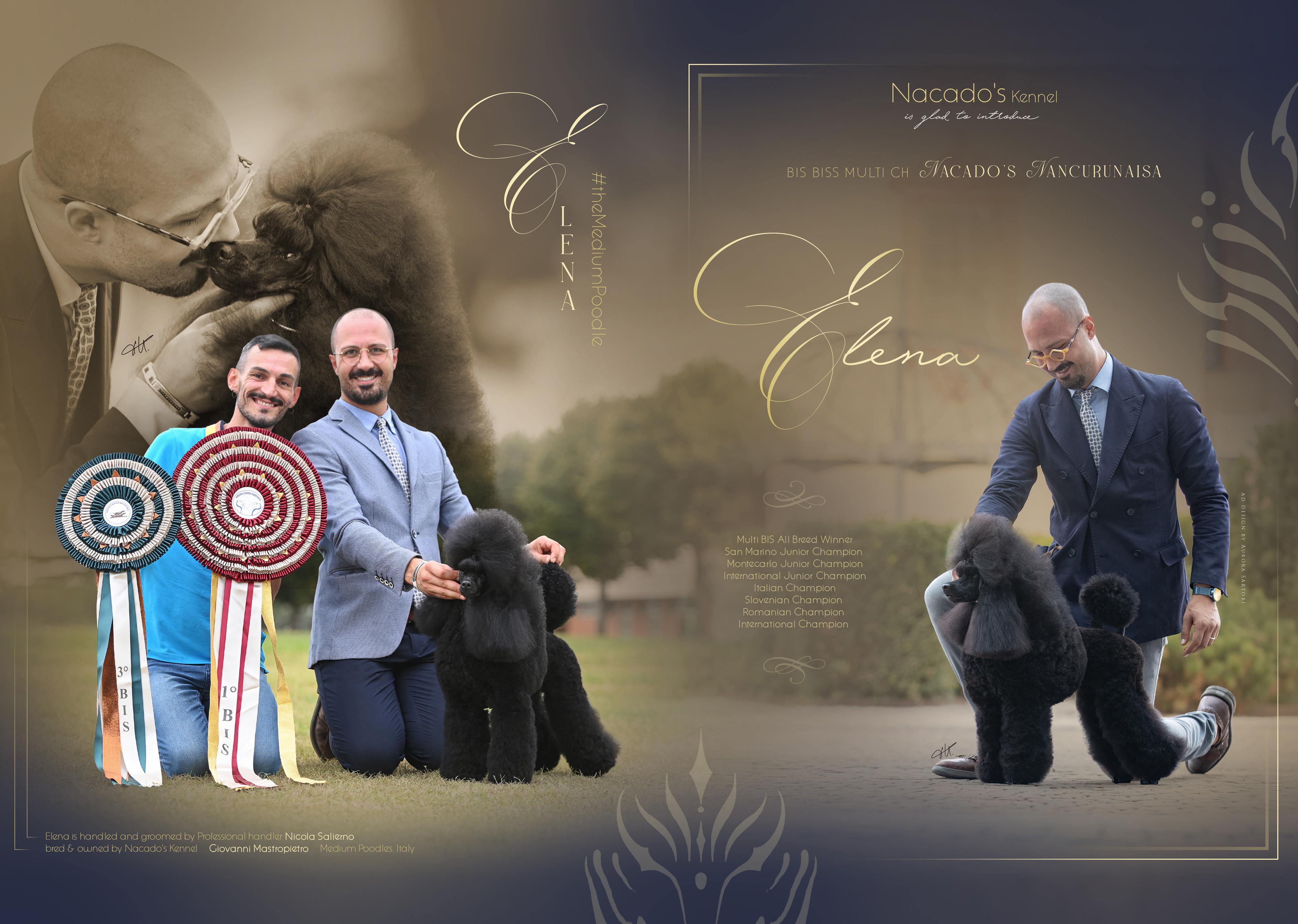




Can you take us through the beginnings of your journey with dogs—how it all started and what initially drew you to this world of canine companionship and competition?
As a child, we always had pets—cats, birds, and Pekingese dogs, although they were purely pets and we didn’t show them. Things changed when we welcomed a German Shepherd into the family when I was in my early teens. It was a dog for my father, Darrell, to take to work; he was a very active dog and he did obedience with him. However, the German Shepherd Club held its first-ever Specialty Show, and my mother, Maureen, decided to enter him. He won first place, and as they say— the rest is history.
We soon realized that his temperament probably wasn’t normal or desirable, and we needed a better dog to show if we were going to continue to exhibit. It was an era when dog shows were gaining popularity and numbers were starting to increase. My mother was the one who really got us into showing, and she has a natural eye for a good dog.

With judging, what has been your most memorable assignment?
Probably one of the most memorable assignments was being invited to judge the Papillon Specialty in Victoria, Australia. It was a lovely quality entry, and it is always a joy to judge your own breed. It also gives you time to fully evaluate each dog. I was thankful that exhibitors had traveled from other states to enter the show, a big undertaking in a country the size of Australia.
What do you feel are some of the biggest differences in breeds shown outside of Australia? This can be general or breed-specific.
I am most thankful that I am able to see dogs exhibited across the world. Many breeds can be completely different depending on where you are traveling. Of course, the English Springer Spaniel immediately springs to mind. In Australia, we have a mix of both European and American types.
In Australia, unfortunately, numbers in my own breeds of dogs are quite small compared to those in Europe and the US, especially the American Cockers. This leads to a significant reduction in the gene pool, especially when it is very difficult to import dogs and even semen into the country due to very strict government regulations and health testing requirements.
The American Cockers that are being exhibited in Europe at the moment I consider to be worldclass. It makes me feel so happy for the breed. The World Dog Show in Croatia showed such a strong entry, with great depth of quality. Being a lover of parti-colored dogs, I find it a shame that so few are being shown in Australia. This really makes it difficult for our local judges when they aren’t used to seeing different colors. The color and markings of a dog can be off-putting if the eye isn’t trained.
While we don’t have the numbers of dogs in Australia, in some breeds they could really hold
their own in the big international shows. Australia has always had a reputation for having really good Afghan Hounds, and I love to see Aussie dogs behind many of the dogs around the world. Best of Breed at Crufts this year was an Australian dog from my home state; it was fabulous to see all the local folks cheering him on via livestream from afar.
The standard of handling and grooming across all breeds in Europe is, I believe, world-class. I always enjoy just sitting ringside and watching. You can always learn so much about the preparation of dogs and how you can improve your own handling. You can always learn, no matter how long you have been in dogs.
What three dogs from the past do you wish you could have judged or owned?
American Cocker Spaniel – Multi CH Very Vigie Freezing in Finland (Finland). “Colin” has just recently passed away. I never got to see him in person, but he was a dog I would have loved to handle. He always had the wow factor, both standing and moving around the ring. Later in his life, I watched a video of him clipped off, running through the forest and swimming in streams, even as a veteran—a true sporting dog.
Afghan Hound – CH Pahlavi Puttin on the Ritz (USA). “Taco” was and still is world-famous. We were fortunate that Australian breeders imported semen from him; they were really pioneers in using reproductive veterinary medicine to further improve the breed. Australian friends had the opportunity to judge him in the US and all praised him as a King of Dogs—just what an Afghan should be!
German Shepherd – Dingo von Haus Gero (Germany). The SV in Germany produced a very good educational video of the GSD featuring Dingo. If anyone has a chance, make sure you try to find it on YouTube. It illustrates the movement of a dog as a skeleton—a must-see that can be used

for all breeds. Dingo himself was a German Sieger, a difficult title in that era. I was very fortunate to import a daughter of Dingo into Australia.
You have worn many ‘hats’ in the world of pedigree dogs—breeder, exhibitor, judge, and successful businesswoman. Which ‘hat’ has been the most fulfilling and most challenging? Please explain to our readers why.
Oh, definitely the most fulfilling has been founding our business, “Fraser Essentials.” I have been so fortunate to have grown up in the dog world and had many longtime breeders generously pass on all types of knowledge and expertise. They didn’t always sugarcoat their critique of your preparation and handling, but you always knew where you stood. Every day, I call on the wisdom that they gave me. It was always part of the foundation of Fraser Essentials to make education part of doing business and to continue passing on their knowledge to the next generation or newcomers. Sometimes, it can be such a simple thing that makes a world of difference.
Probably the most challenging has been being a breeder. The limited gene pool in Australia has meant that I, along with my family, have imported a number of dogs and bitches in both German Shepherds, American Cockers, and now Papillons. Importing into Australia is a long and costly process. I am most thankful to the breeders and others who have been generous in helping us keep dogs and conduct the testing process before their export to Australia. I often think that if it were easier, I would have bred more litters, especially in the past 10 or so years. I have only bred a litter when I felt it would improve the breed, was part of an extended breeding program, and was a litter I was really excited about.
The purpose of dog showing was (and should still be) to evaluate and “show off” breeding stock. Do you think for some breeders and owners it is becoming more about ribbons and rankings?
Unfortunately, I do. I think now there are exhibitors, breeders, and then there is what I like to call a “Breeder’s Breeder.” Breeders breed to win in the ring; a Breeder’s Breeder is looking beyond this generation. There are very few younger breeders who are a Breeder’s Breeder. Thankfully, in my two current breeds, there are younger breeders who give me confidence that our breed is in good hands. I try to support and acknowledge them in any way I can.
You can often tell the two types of breeders apart just by chatting with them. A Breeder’s Breeder is happy to discuss the virtues and faults of their dogs and how they think they can improve. Their minds are already thinking about the next generation.
How do you perceive the current status of Toy breeds, with many being classified as “low entry”? What factors do you believe contribute to this trend?
Many Toy breeds have a long and beautiful history, and I hope that continues for future generations. There is an aging demographic in the dog showing world, which is more apparent in the Toy Group, and this is definitely impacting the numbers at the shows.
I also believe that new regulations on breeding some of our Toy breeds in certain European countries may significantly impact breeders’ ability to continue breeding their chosen breeds.
In Australia, we too are facing more and more restrictions imposed by our State Governments, which will ultimately affect the numbers of purebred dogs being shown and bred.
In your observation, are there specific regions in the world where Toy breeds exhibit exceptional quality and strength?
I find that it can be really dependent upon the breed. For example, the Papillon breed is very strong in Europe and also Japan. The US has

always had some standout examples of the breed. However, within the breed worldwide, type is quite varied.
Pomeranians have been extremely strong in Europe, with good numbers.
I love to watch Yorkshire Terriers at Crufts on their red boxes. There are some standout specimens of the breed.
Cavaliers in the US are lovely and still have good numbers at their National, although probably fewer than in years gone by.
Who are some judges that have significantly influenced your decision to judge and your approach to judging? What qualities do you admire most in their judging style?
Laurent Pichard (Switzerland). I always love watching his judging because I can follow what he is doing. I remember having the privilege of exhibiting my American Cocker under him. I was absolutely mortified that on the day, my beautiful “Charles” just did not want to show, and he did something that he never did—he misbehaved on the table. I was so disappointed. Laurent came to me when placing the dogs and apologized. He said that Charles was the best dog in the breed but he could not award him because he was judging the dog on the day, and his behavior did not fit with the breed. While it was probably my most disappointing show of all time, it was a valuable lesson learned. You can only judge the dog you have in front of you on the day, and it must fit the breed standard.
Louis Donald (Australia), a German Shepherd specialist judge. Louis judged my first and founding German Shepherd bitch, “Rena,” when I was 18 years old. She was from two imported parents and was actually born in quarantine in Australia. She was very different from what was being shown, and politically, it was a time when a different type of GSD was not welcomed,
especially when owned by a newcomer. As a young exhibitor, I was feeling quite disillusioned with the whole “dog world.” Louis came along and rewarded “Rena” highly, praising her good breed type and what the Germans call good “mother type,” essentially a very good brood. Without him, I may not have continued in the dog world. Louis is one of those wonderful breed judges who look at breed stock and how animals, particularly bitches, can impact the breed as a whole. We really need more judges like him today than ever before.
There are many others, but these are two that come to mind. Again, I love nothing better than sitting ringside and watching judging in any breed. You can learn so much.
Your grooming product company is thriving and renowned worldwide. What inspired you to start this business, and how has your journey been so far?
Wow, it has been a bit of a whirlwind. I have always experimented with my grooming products over the years. Eight years ago, I was not happy with the way my dogs’ coats were looking, and at the same time, I was experiencing really itchy skin. I decided to look into producing a range of human body washes to add to an existing business I was running. I then realized that no matter how good body wash and laundry detergents were, they wouldn’t help if I was up to my elbows in harsh dog grooming products on a daily basis.
I started working with a chemist to formulate the products I wanted and offered them for sale at one of our local dog shows. The products sold out, and the following week, I received rave reviews and requests to buy more. People started posting their results on Facebook, and all of a sudden, I was inundated with messages from across the world asking where they could buy the products.
One of the key founding principles when we started Fraser Essentials was to provide highquality products focused on improving both coat

and skin for our customers’ beloved dogs.
Fast forward a few years, and I realized how much I enjoyed the formulating and research side of the business. So, I went back to study to become a fully qualified Formulating Chemist. The study was invaluable, and I believe that combined with the knowledge of breeding, showing, and grooming show dogs, it has made me appreciate really good products and how they can enhance both skin and coat health.
The company really took a leap forward during COVID. My partner Tony joined the company full-time; his strong commercial and accounting background has taken the business to a new level. We have different skill sets, which made it easy to divide the duties between us. We also purchased a new factory and office and fitted it out to provide the best possible manufacturing and storage facility for the products. We really made good use of the time when we couldn’t travel.
I still get a bit of a shock and am absolutely delighted when I walk around ringside at the World Dog Show and see our little blue bottles on grooming tables. You could say you can’t wipe the smile off my face. I think, “Wow, we made that from raw ingredients in our factory, bottled, labeled, and then shipped them from Australia.” It really is something that I still find hard to comprehend about our little Fraser Essentials that started out from our home.
We now have stockists in 27 different countries and customers in many more.
What do you like to do most to relax and unwind?
I really love traveling, so when Tony is with me,
we make the most of our time visiting different countries. Strangely enough, I really enjoy being in the laboratory, so I am always making up different formulations. Some of these even include human products such as body washes, moisturizers, serums, and room sprays.
But above all, nothing beats having one of my beloved dogs on the grooming table, with the television on watching football, and escaping into my own little world.
What is your favorite meal to make, and which one are you always excited to order at a restaurant?
I am not really much of a cook, but my favorite T-shirt for the factory reads, “Chemistry is just like cooking; just don’t lick the spoon.” Fortunately, my grooming formulations are much, much better than my cooking, although my favorite dish to cook lately is Massaman Lamb Shank Curry. I am a connoisseur of lasagna, and the best one I’ve ever had is from a restaurant located in Kortrijk, Belgium. Of course, it’s always followed by ice cream of any flavor!
Lastly, amidst your judging experiences, have there been any humorous or lighthearted moments that stand out and you’d be willing to share?
I don’t know if it’s truly humorous, although it did make me giggle at the time, and it’s something I will never forget. The exhibitor had his dog on the table, and as I was examining the dog, he said to it, “Show like you did last week when you won Best in Show.” The dog then growled at me, and needless to say, he did not win.
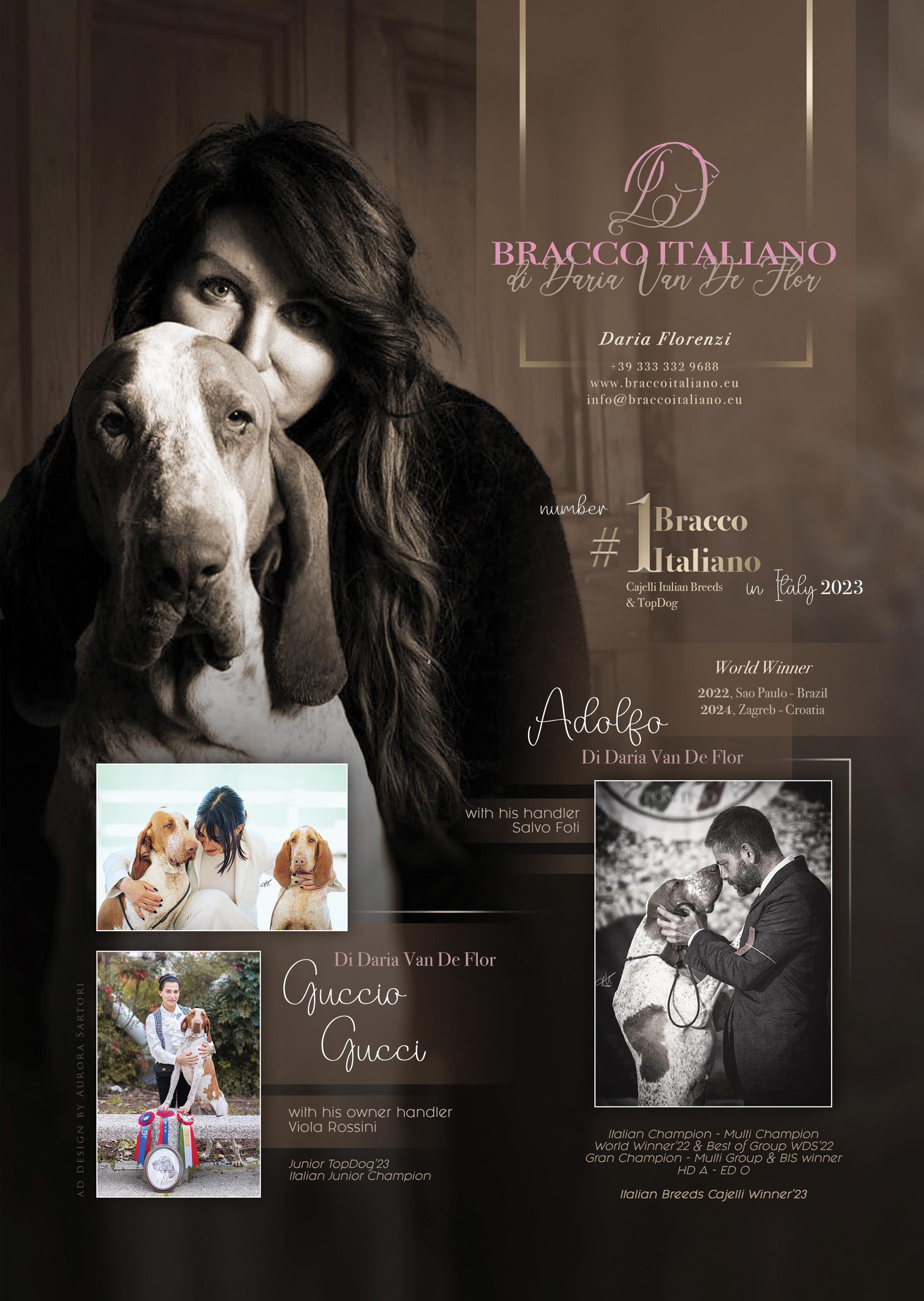


.




Please share with our readers how you got involved in the world of Pedigree Dogs.
I bought my first Rottweiler when I was 17. I saw the breed in a TV commercial and instantly fell in love with it. Later, the breeder introduced me to dog shows, and I immediately knew I wanted to be part of that world. I was amazed by how handlers could show so many different dogs, and I decided I wanted to be involved as well. I began showing dogs and training them in obedience, starting with my Rottweiler and later working with dogs from clients.
Which handlers inspired you in the beginning, and who did you apprentice under?
When I started in the dog world, there were many accomplished handlers in Argentina, such as the Ferrari family, Diego Garcia, and Esteban Farias. Many of them inspired me, and I maintain good relationships with most of them today. However, my first mentor was Alfredo Palacios.
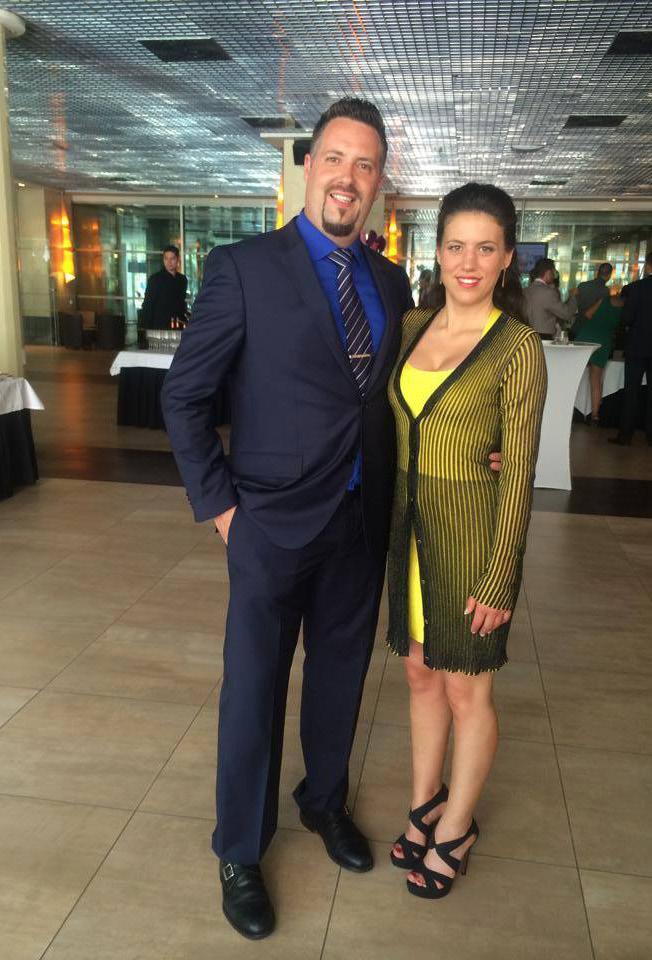
Why did you decide to move from Argentina to Spain? Did you show in Argentina recently, and how would you compare Argentina to Spain?
I began showing dogs in Argentina, but the country’s economic situation was deteriorating. My sister had already moved to Spain, and after a few months, she invited me to join her. Since my father is Spanish and I hold both nationalities, relocating was not a difficult decision.
In terms of handling, Argentina is much more professionalized than Spain. There are far more professional handlers in Argentina, who are often well-trained from a young age, typically starting as assistants to experienced handlers. In Spain, many handlers are amateurs who show their own dogs, and there are few, if any, assistants.
When I was in Argentina, I had the opportunity to learn from many handlers and breeders, gaining valuable knowledge not only about handling but also about various breeds. We frequently attended seminars during show contests, which is something almost impossible to find in Spain. This kind of education is crucial for improvement, especially for new generations.
The purpose of dog showing is to compare breeders’ future breeding stock against one another’s. Do you feel your clients keep this in mind when they place a dog with you to show? Similarly, do you believe this is the general mantra of those who show dogs?
Most of the clients I work with are deeply committed to improving the breed, and I am fortunate to have them on my team. We collaborate closely on decisions about which dogs to show, and they value my input in all significant decisions.
Unfortunately, not everyone shares this purpose. While many breeders and handlers are passionate about dogs and strive for a good cause, there are some who do not prioritize this. However, I believe that the majority of breeders and


handlers are genuinely dedicated to the welfare and advancement of the breed.
Is there a particular breed or group of dogs you prefer to handle? Please give reasons for this choice.
Over the years, I’ve handled dogs from all groups and enjoyed working with almost all of them. One of the aspects I loved about handlers in Argentina when I first attended a dog show was their ability to showcase completely different breeds in unique ways. That variety is one of the things I love most about my job.
However, I have a few favorite breeds, including Dobermanns, Rottweilers, and Pugs. I especially enjoy dogs with strong temperaments—it’s more engaging for me to work with a dog that has a high or challenging temperament than one that requires constant motivation. For me, a difficult dog with a vibrant personality is far preferable to one that lacks enthusiasm, as the latter can become monotonous.
Pugs, in particular, are one of my favorite breeds because of their lively and exuberant nature. The
Pugs I’ve worked with, especially those from a breeder I’ve collaborated with, have an incredibly spirited temperament. The more attention a Pug demands, the more I enjoy the process of working with them.
How are you and Cristina different when it comes to showing and taking care of dogs? How do you decide which dog each of you will show? Do you each have preferences?
When I met Cristina, she was just starting with her first Bichon Frisé. Although she had experience with Dobermanns and dog training in obedience and other disciplines, handling was relatively new to her. We both learned and grew in our roles together, so our approaches to showing dogs are quite similar.
Cristina is primarily responsible for grooming the dogs, while I handle the rest of the tasks. Deciding which dog each of us will show can sometimes be challenging. Typically, we base our decision on the dog’s temperament, size, and specific needs. In some cases, the dog’s own preferences also play a role in choosing the handler.

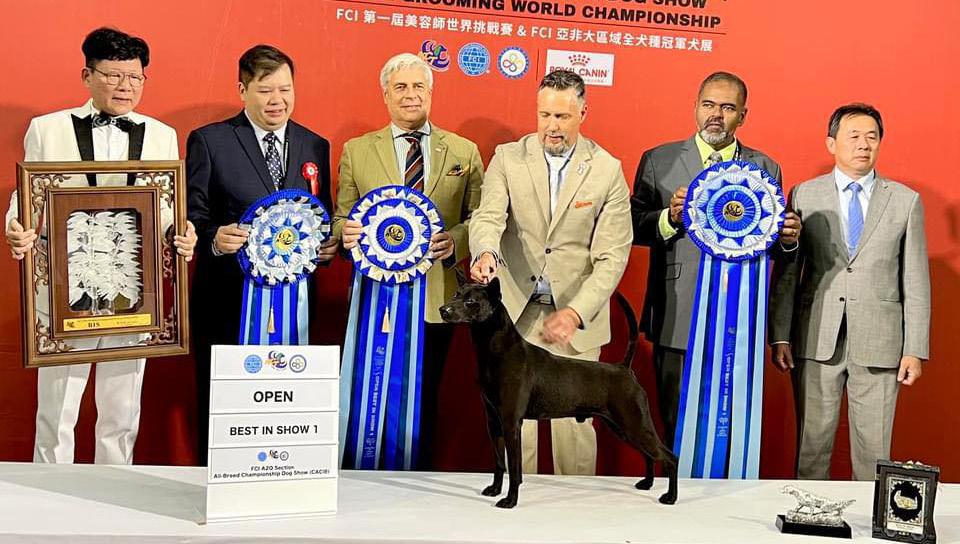
Cristina has a particular sensitivity with certain breeds, such as Bichons and Chihuahuas. As a result, she often handles these breeds more frequently than I do, given her innate understanding and connection with them.
Is there a particular dog throughout history that you wish you had the opportunity to handle?
There are many remarkable dogs throughout history, but one of my favorites is Nello’s Lex Luthor. Despite this, I feel very fortunate to have had the opportunity to show some exceptional dogs over the years. Many of these dogs started with me as puppies, and we grew together, making the experience all the more special.
Do you have time to breed your own dogs? If yes, what breeds do you raise, and if no, is this something you wish you had more time for in the future?
I don’t have a lot of time for breeding, but I recently imported three Golden Retrievers with American bloodlines. My goal isn’t to become a large-scale breeder but to enjoy my dogs and occasionally have a litter of puppies. Most of the breeds I’m interested in breeding are of the American type, so the decision was not an easy one.
Cristina has been breeding Bichon Frisés for quite some time. Although we don’t have many litters due to our busy schedules, we strive to produce high-quality puppies.
What are some of your favorite shows to participate in across Europe?
I enjoy many dog shows in Europe and don’t have a single favorite. However, my top preferences are in the USA and Asia. Asia is rapidly growing in the dog world, and some of the best shows are now held there. That said, Westminster is particularly special to me. I had the honor of showing there many years ago at Madison Square Garden and also at the previous venue where breeds were showcased. I’m excited that the show is returning to Madison Square Garden and will definitely include it in our agenda for next year.
Can you please share some of your most memorable wins?
Without a doubt, the most special win for me was Best of Breed at the National Specialty Pug Dog Club of America under Charlotte Patterson. This was the first time in history that a dog won Best in Specialty Show from the classes. We also achieved

#1 All Breeds with this dog and represented Spain at the Eukanuba World Challenge.
Other memorable wins include Best in Show in Madrid with Coti, the smooth Chihuahua, among 4,000 entries; four Best in Shows at the Asia & Pacific Section ‘23 with Jian Jiang, the Taiwan Dog; my first Best in Show with a Dogo Argentino; and several others.
If you could change one thing to improve dog showing, what would it be?
I would aim to professionalize handling as much as possible and remove the bans that are being introduced in Europe on grooming, leads, and other restrictions. If these trends continue, they could potentially harm our sport and the dog show world.
Do you have any future goals or achievements you’re aiming for in the world of dogs?
I don’t focus on specific goals or achievements at dog shows. Instead, I concentrate on keeping my dogs in the best possible condition and doing my best in the ring. The outcome is beyond my control, so I try not to dwell on it. I love my job, so my primary goal is to continue showing dogs for many years to come.
What is your favorite way to unwind on days off? Do you have hobbies outside of the dog world?
I like to spend my days off with friends at home. When possible, I try to take a holiday outside of Europe to relax and recharge. Although I don’t have much time for hobbies due to the demands of working with dogs 24/7, I do enjoy playing paddle.
What is your favorite holiday destination?
I’ve traveled to many places around the world, but Bali, Indonesia, is my favorite. It offers a unique sense of peace and relaxation that no
other place quite matches. New York and Tokyo are also intriguing to me, but only for a couple of days. I’m not a big fan of large cities.
Beverage of choice?
Cold beer. I don’t usually drink alcohol, but there’s nothing better than a cold beer on a hot summer day.
Do you prefer to cook at home or eat out, and what’s on your ideal dinner menu?
As an Argentine, I enjoy preparing a big barbecue at home. We have a lovely outdoor area with a large barbecue and a wood oven. On weekends, I like to invite friends over for a barbecue or paella. This is my happy place.
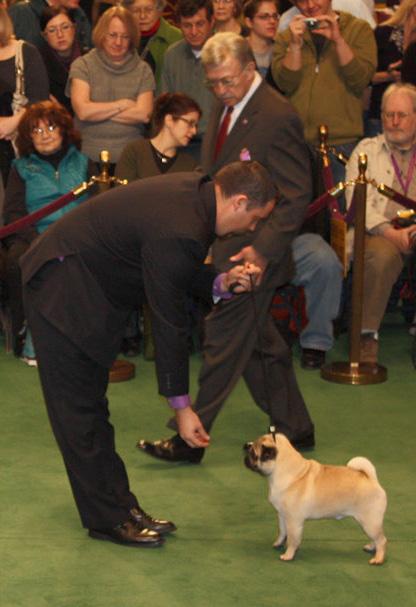
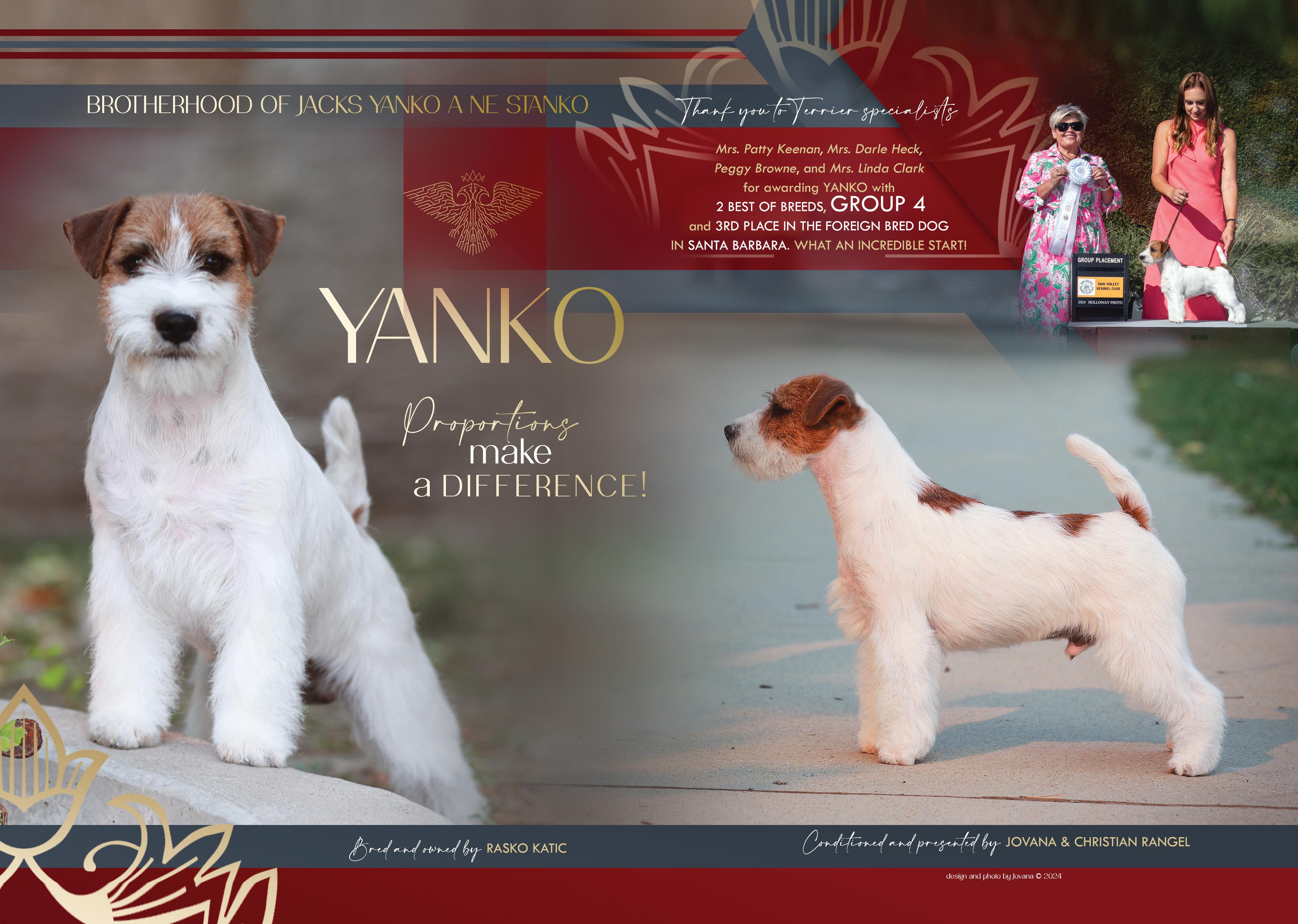



Please tell our readers how you got involved in the world of dogs and dog showing.
Well, I should probably start by saying that I was one of those kids who wanted a dog ever since I was little. Instead of getting me a dog, my parents drove me to dog shows so we could watch other dogs perform. Finally, they promised me a puppy once I showed that I was ready to take on the responsibility that comes with it. Luckily for me, they kept their promise, and my first precious and long-desired puppy—a Basenji girl I named Panda—joined our family as a birthday gift when I turned seven. So, I began training and showing dogs about seven years ago. It came naturally the moment Panda was brought to our house. Eventually, it was my inner passion for dogs and my connection to Panda that made me realize I wanted to start attending handling classes. I started to show Panda in the breed ring when I was eight and she was in her junior age. I must say we did really great. Since then, Panda has proven to be an outstanding show dog. Now, Panda and her puppy, Jenny, both live with our family, and they are both international champions and national champions in many countries.


Who were your mentors from the beginning of your dog journey, and do you currently have the same or any additional mentors?
I don’t think I can name one person who guided me as a mentor throughout my handling career. I would say that I was fortunate enough to build my experience and learn from many different dog trainers whose classes I have attended over the years. When I began my handling classes and Junior Handling (JH) classes, my trainer was Jelena Tokareva, an FCI Judge and Junior Handling Judge, as well as the owner of the German Spitz kennel Aristokrat Plus. I am grateful to her for the strong foundation she gave me in JH and handling in general.
Speaking of JH, I am lucky to have Goda SulcaiteJotaute (Vega Handling team) as my trainer, who saw potential in me and started training me online during COVID-19. She kept me motivated and ensured I continued to thrive professionally as a handler while there were no shows during the pandemic, and she remains by my side, ready to share her experience whenever I need her help.
I continue to work with various trainers— Polina Spasovska, Lina Groma, and Jelizaveta Borodajenko—and attend their handling classes regularly. Polina Spasovska is also a veterinarian and a fitness support trainer for the dogs I train; she is also my friend and a handling partner.
I am also trying to participate in handling seminars or online classes related to dog shows whenever I have time. This year, I attended the Junior Handling Camp in Sárvár (Hungary), where I had a chance to learn from great handlers like Javier Gonzales Mendikote, Olka Tibay, Botond Ambrus, Carla Ivančič, Attila Schlosser, Rita Baranyai, and Beatrix Fabian.
What breed/breeds have you been involved in handling?
I have been handling dogs for seven years now. I train and show dogs of various breeds on a regular basis, but most of the time I focus on dogs from groups five and seven. However, most handlers who know me would say my signature breeds are Basenjis and Shibas.
Do you currently breed, and is this something you see yourself doing in the future?
I am 15 years old now, and I have two Basenjis. I took care of my lovely Panda when she whelped five beautiful puppies. The same day, I won first place at my very first Junior Handling (JH) competition! I still consider it to be the happiest day of my life so far. Indeed, I hope to be a breeder in the future.
What, in your words, is the purpose of dog shows?
A: I believe that the purpose of a dog show, in the narrower sense, is to serve as a platform for evaluating and selecting the best breed dogs according to the stand-ards, ensuring that only worthy representatives are used for breeding. In a broader sense, it is a wonderful hobby and a

place to meet new friends and enjoy sportsmanship.
For me, dog shows are a huge part of my life that I cannot live without. The dog owners and their pets are my friends. Over time, we have become one big family, and we look forward to dog shows as a chance to meet up and spend time together. Unfortunately, I have already missed a few dog shows this season due to a serious ankle injury. I pray to God to help me heal quickly so that I can participate in the Eu-ropean Dog Show in Celje (Slovenia) in October this year.
Do you find it difficult to balance personal life, school, and dog show com-mitments? How do you make time to fit everything in?
When I started handling, I was also ice skating and taking singing and piano clas-ses—all at the same time. My parents promised they would support any of my hob-bies if I did well in school. I felt a bit overwhelmed by the pressure to juggle all those activities at once, so eventually, I chose handling dogs and focusing on my studies. I have to say I have always managed to remain an excellent student. This al-lowed me to receive permission to leave classes early whenever I needed to go to shows such as EDS, WDS, or Crufts. Since last year, I have been enrolled in a distance learning program, which provides a more flexible schedule. Now I have enough time for school, my friends, and my passion.
What profession would you like to have as an adult?
In terms of future professions, I haven’t decided yet. Once during the handling seminar Ante Lucin said to me: “The way you reply to the questions, you definately should be a politician”. I didn’t take it as a compliment I guess. I’d rather see myself as a business owner so I could afford having dogs and travel with them around the world .
Do you prefer handling table dogs or lager dogs?
I’d say I prefer handling happy dogs - dogs with a sparkle, dogs who love to be shown and who are ready to cooperate with the handler. Any way I show them - either on a table or on the floor - is fine with me. Rumor has it that some dog owners choose me as a handler when they have breeds who are known for their speed. Maybe it is just a coincidence but most of the dogs I am showing are quite fast movers.
Is their a certain coat you prefer to prepare for the ring?
The best would be a Mexican hairless dog, wouldn’t it? :)) All in all, the breeds I am showing the most, like basenji, shiba, pharaoh hound, husky, vizla and others, are not that difficult to prepare for the ring. Another thing is that I am not a very good groomer so this is something I would definitely have to ramp up my skills in. For
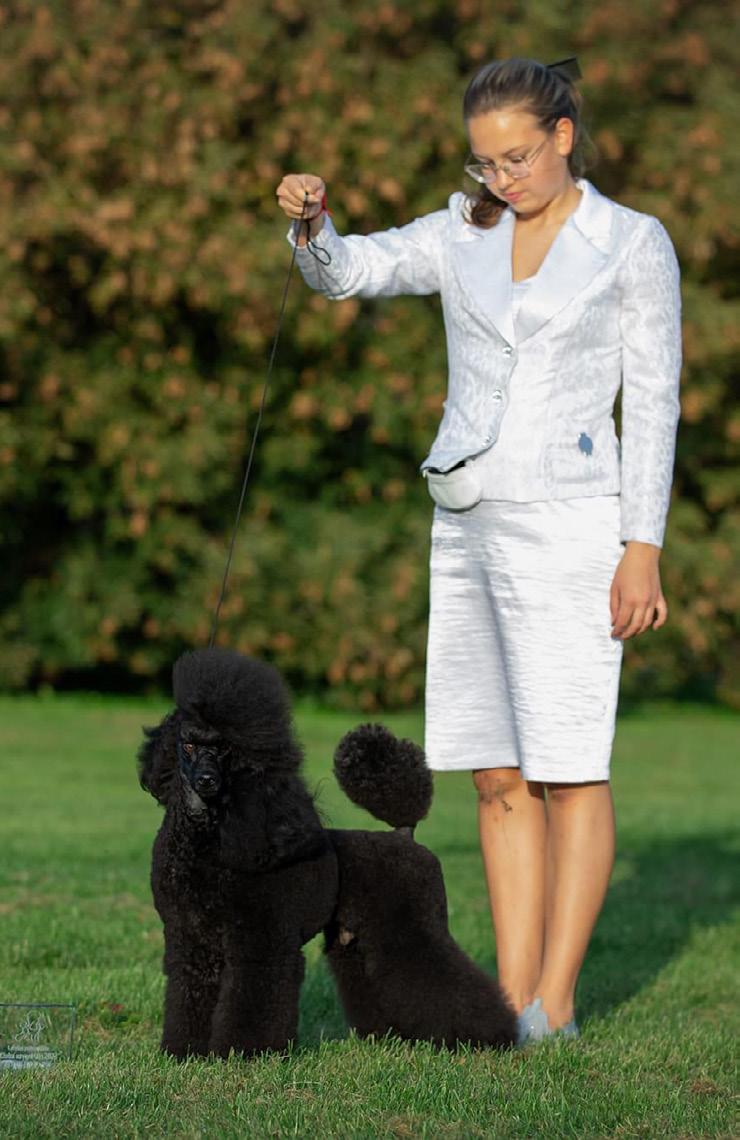

example, it would be fascinating to learn how to prepare a poodle! I love to see a beautiful, smooth and wavy or dense and curly high maintenance coat when it is prepared by a professional, and the poodle looks like a masterpiece. I already got some useful tips from Lidija Prokofjeva - an excellent poodle breeder and a fantastic groomer from Latvia, and I hope I will have a chance to learn more in the future.
What professional handlers or owner handlers inspire you?
I will not try to be original here and will say this: FCI judge and handler Juan Miranda Saucedo absolutely inspires me! I would love to know the secret how to succeed in so many things, including judging dogs all around the world, looking so good, smiling and being full of energy - all at the same time:)
This summer I had a chance to learn from Javier Gonzales Medikonte, and I’ve seen firsthand how he works and why so many dog people value his work so highly . His serious attitude towards the handlers he works with, while paying attention to all details and his readiness to share
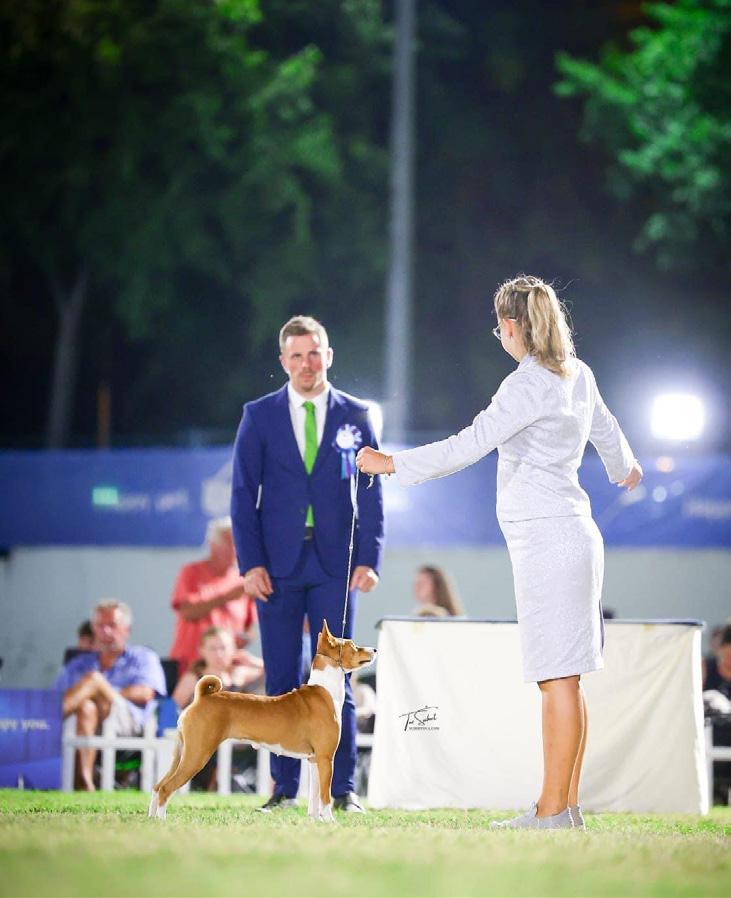
his experience with us, young handlers, is truly admirable.
Another professional who inspires me is Michaella Dunhill - Hall a breeder and a handler of Fantasa Team Vortmund Rottwiler & Shiba Inu Kennel U.K. In my opinion, she is one of the very best shiba breeders and handlers in the world. I can feel how much work, passion and knowledge she and Liz Dunhill invest in their kennel.
If you could be an assistant for any handler, past or present, who would it be and what would you hope to learn from them?
There are many high-level professional handlers from whom I would love to learn. For example, I already mentioned Javier Gonzales Medikonte, who is a professional that many young handlers would like to learn from—not only in terms of showing and preparing a dog but also regarding the ability to focus. I also prefer to learn about handling and grooming from certain breed specialists. Michaella Dunhill is someone I would like to learn from about preparing and handling a Shiba, and I would be thrilled to learn from FCI judge and poodle breeder Tom Isherwood about how to show a poodle.
What have been some of your greatest achievements in the breed ring?
A: I have achieved many best of breed and group placements in both national and international dog shows with the dogs I handle. It was heartwarming to see my dar-ling Basenji, Panda (Touch the Wind Anubys Dream), win Best of Breed Veteran at Crufts this year in strong competition among beautiful veterans under the legendary judge Frank Kane (UK). Panda’s puppy, Jenny (Joyful Jenny Marimba Dancer), placed third in the Open Class at Crufts this year, facing very strong rivals. Last year, my darling Panda was awarded the RCACIB (the unofficial title of Vice European Win-ner) at the European Dog Show in Denmark under very experienced breed specialist Christian

Jouanchicot (FR). Other dogs I showed at the EDS and WDS were also named class winners and selected among the best in their class.
What is your favorite show of the year to attend, and why?
Last year, I represented Latvia at the Junior Handling competition at Crufts. It was my first time there, but it immediately became my favorite show of the year. I was amazed by the level of organization, calmness, kindness, and responsiveness that reigned there. At first, I was extremely nervous to participate and enter the ring at Crufts, but the relaxed atmosphere took the pressure off, which was so unlike other big shows. I am not sure if I will attend Crufts next year, but I would definitely like to go again.
Is there anything you wish judges understood more when it comes to judging Junior Showmanship?
This is an excellent question. Sometimes I wish the judges would treat Junior Han-dlers more like breed specialists, since the handler is showing a particular dog ac-cording to the dog’s breed and anatomy. Also, I am not in favor of changing dogs on the spot if the dogs have not been previously assessed by a judge or staff before-hand. I have seen situations where dogs become confused, try to bite, or even run away from the handler. I would like to give credit to FCI judge Paul Lawless (IE). A couple of years ago, when I was participating in the Supreme Junior Handling with a Basenji, he asked me whether I was safe to change the dog with another handler. My dog was prepared for Junior Handling and had worked with other Junior Handlers, so at that time it was not a problem. I think the judge showed professionalism by asking this question and ensuring that the dog would be handled safely by another handler.
Crufts is different in that sense. All dogs are tested before they are given to Junior Handlers. The handler receives a breed they are used to working
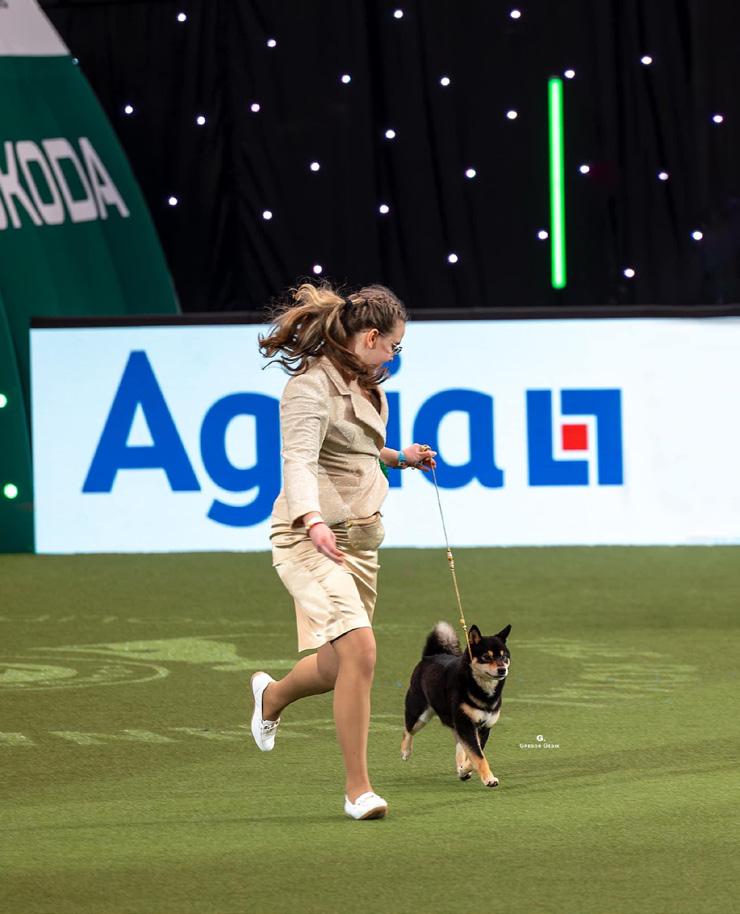
with (and there is almost no risk of getting a breed they have never worked with), with enough time to evaluate and establish contact with the particular dog. If the dog is not appropriate, the Junior Handler receives a different one.
Do you have any pastimes outside of the world of dogs?
Along with being a passionate traveler, I love doing sports such as ice skating, ski-ing, snowboarding, and swimming. I am also keen on cooking for my family and friends. Recently, I restarted my singing classes because I missed singing a lot.
What are your personal future goals in the world of dogs?
First of all, I hope that the “purebred dog world” will survive and remain resilient during the tough times we are experiencing, both globally and internally. For now, I will continue handling dogs. In the future, if everything goes well, I may have several dogs and possibly become a breeder. Maybe even an FCI judge one day.
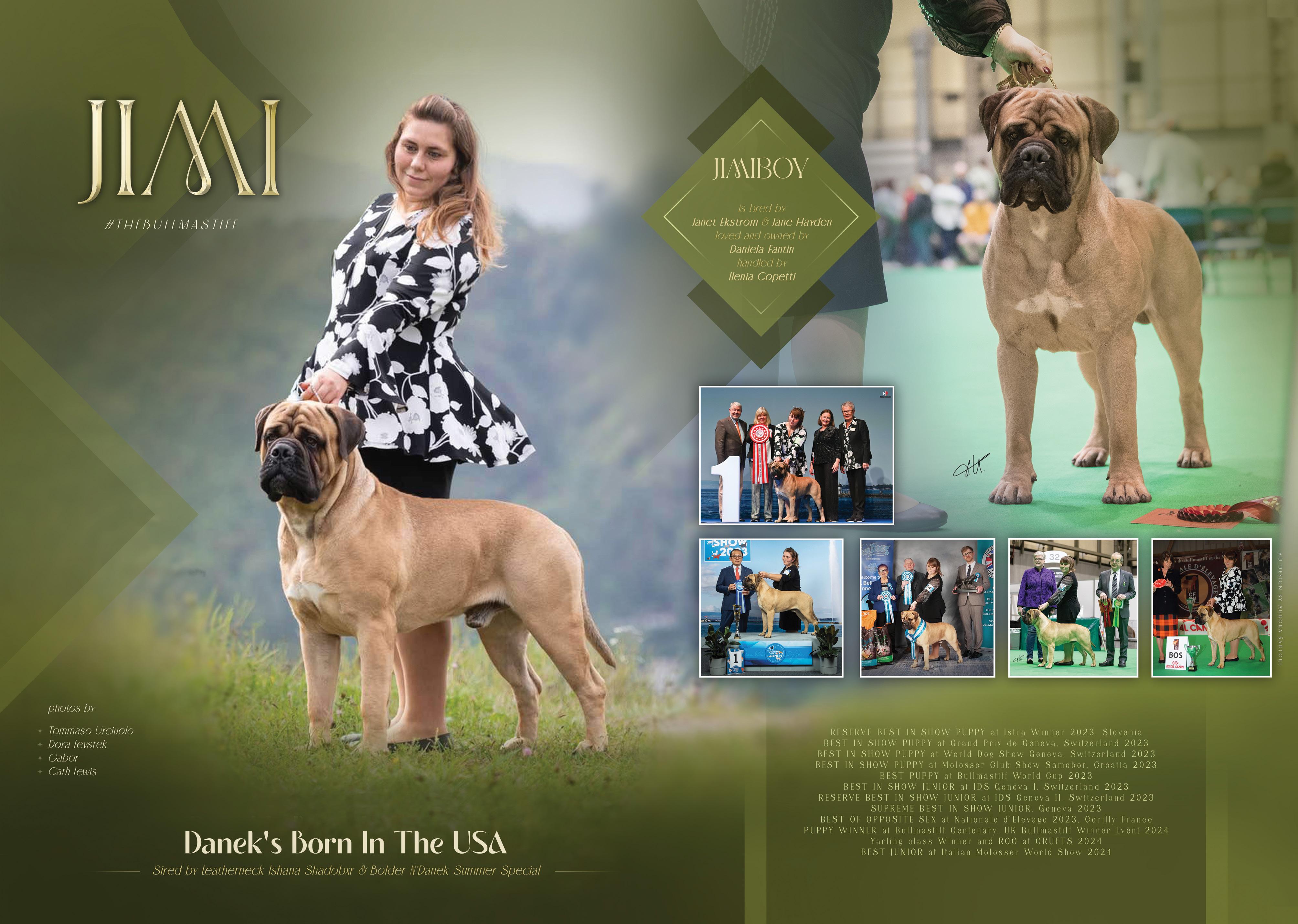

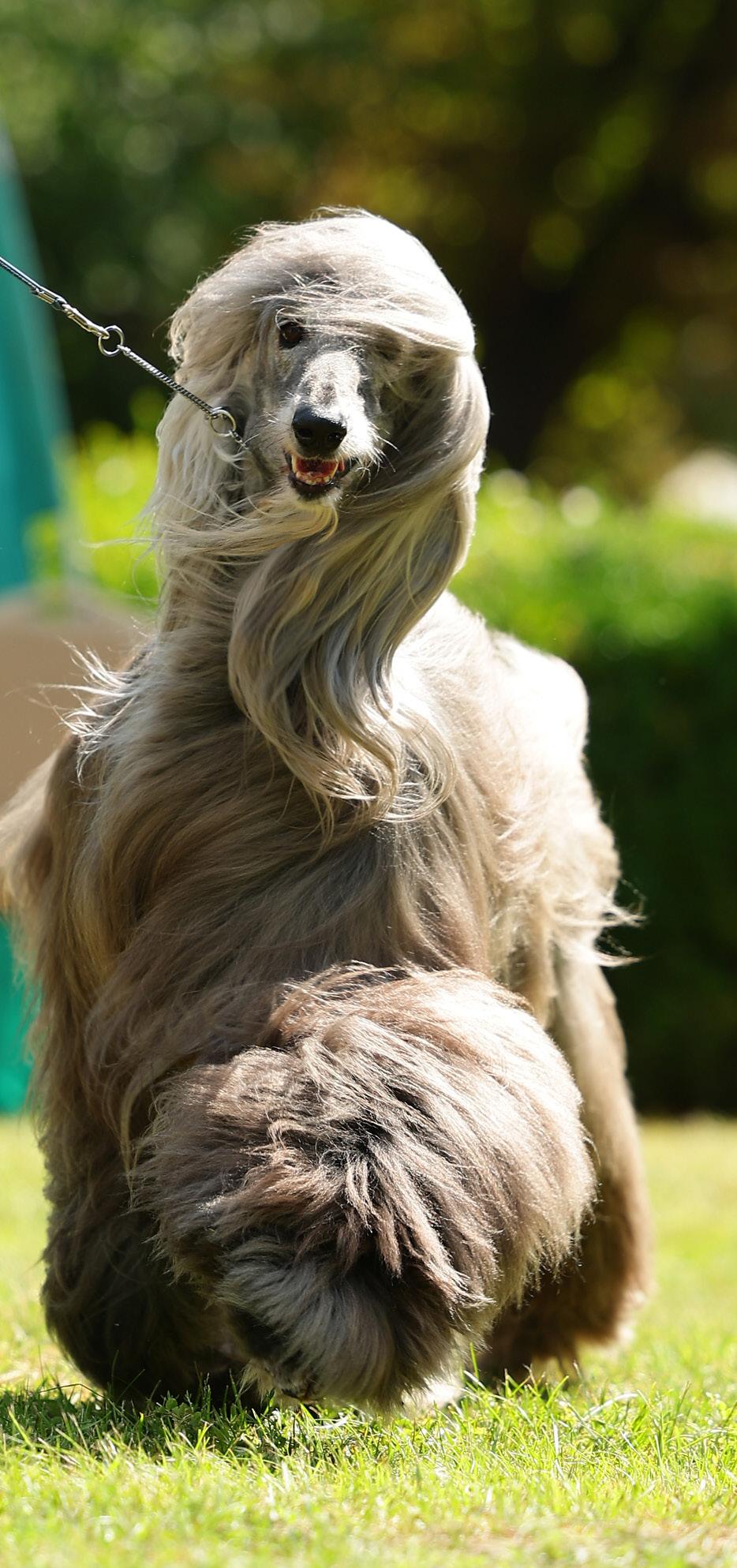
August 3rd, 2024
Mojmírovce, Slovakia
By Patricia Hausnerova
280 sighthounds from 8 countries gathered the first weekend of August in Slovakia to attend the World Cup Sighthound 2024. The show’s history is fairly recent; in 2019, Belgium took the initiative to create an event emphasizing sighthounds, which will be organized in a different country each time.
The Slovak Sighthound Club held the show on the premises of an 18th-century baroque-neoclassical mansion surrounded by a magnificent old park, combining history and modern times. The judging panel consisted of Arnaldo Cotugno from Italy, Lena Persson from Sweden, Paulo Coelho from Portugal, and Jose Miguel Doval Sanchez from Spain.
Photo courtesy of Tereza Šubertová
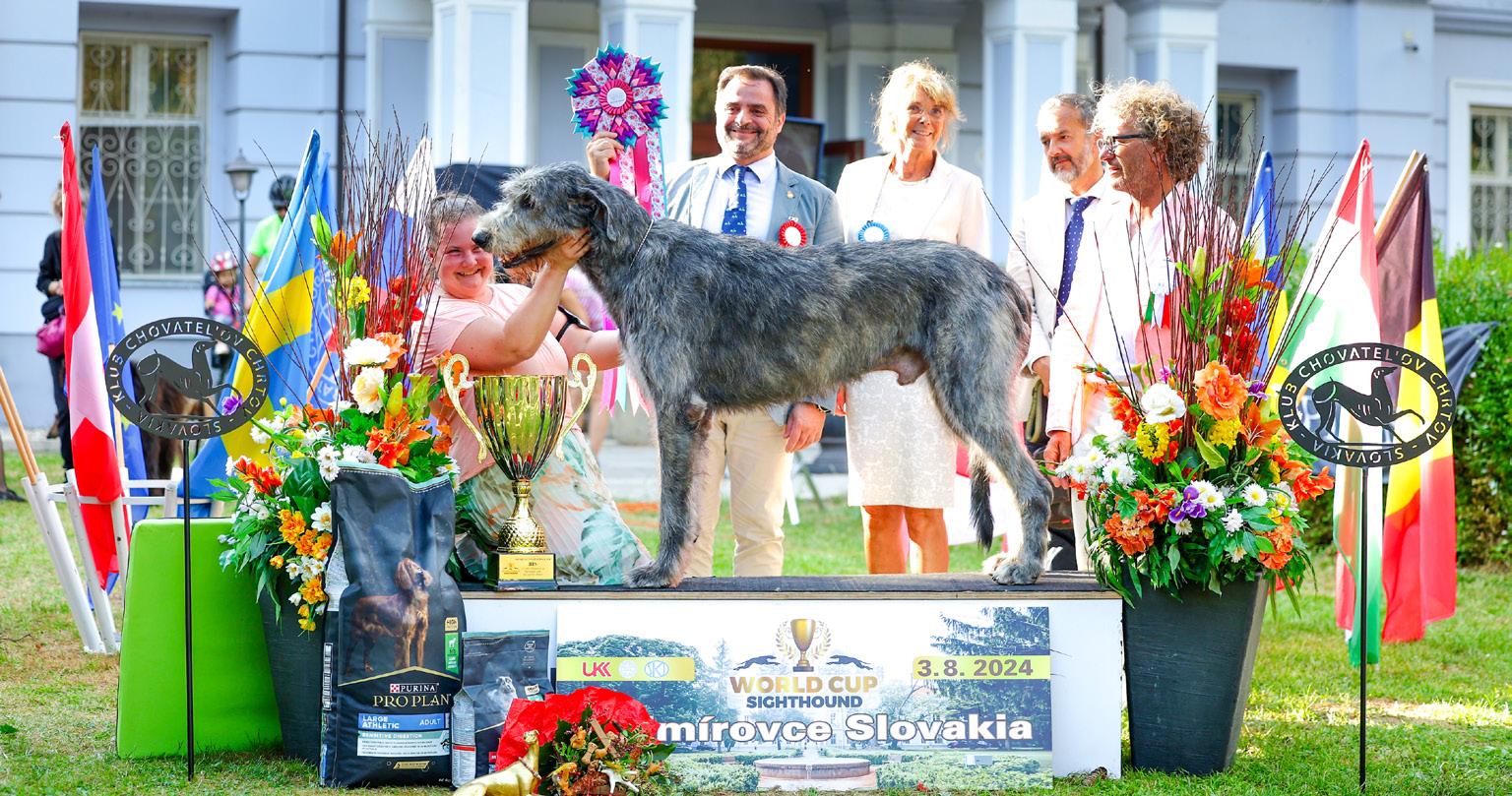
Irish Wolfhound · BRAVE BRUCE OF CUBADEL
Breeder: Adela Šinková. Owner: Martina Mariščáková

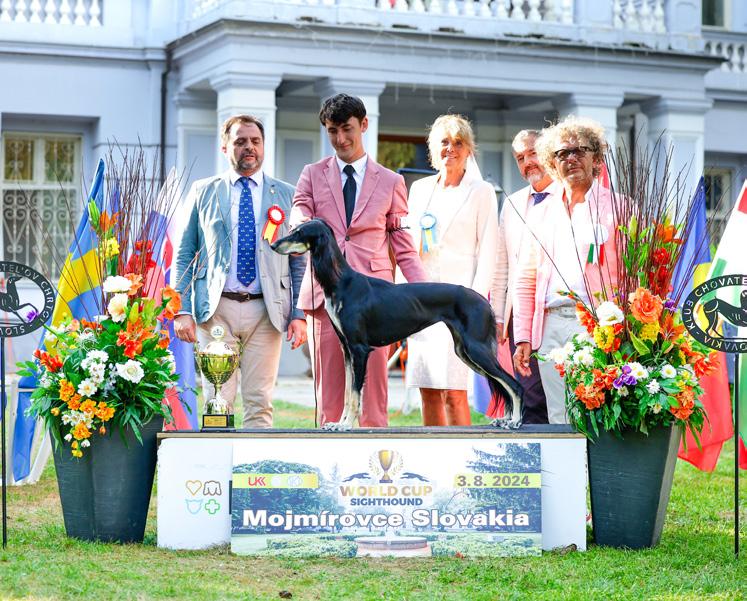
Best In Show II
Greyhound
SOUTHPOINT QUARRIE
Breeder: Luis Filipe Silva Graca
Owner: Halina Weron
Best In Show III
Saluki
AZIZ CHANA
Breeder: Stina + Janette Jalkanen
Owner: Leonard Laskowski
How did you first become involved in dogs, and what sparked your interest in the sport of dog shows?
I was born into the purebred industry. My mother, being a professional dog groomer and Bichon breeder, instilled in me from my earliest recollection a profound passion for hard work and exquisite attention to detail. During my late teens, I developed a yearning to expand my knowledge base of purebred dogs. At this point in time, I began accompanying my mother to dog shows and was totally captivated by the dog show scene. From the very first moment I stepped into a breed ring, I knew my direction in life was forever changed. The excitement
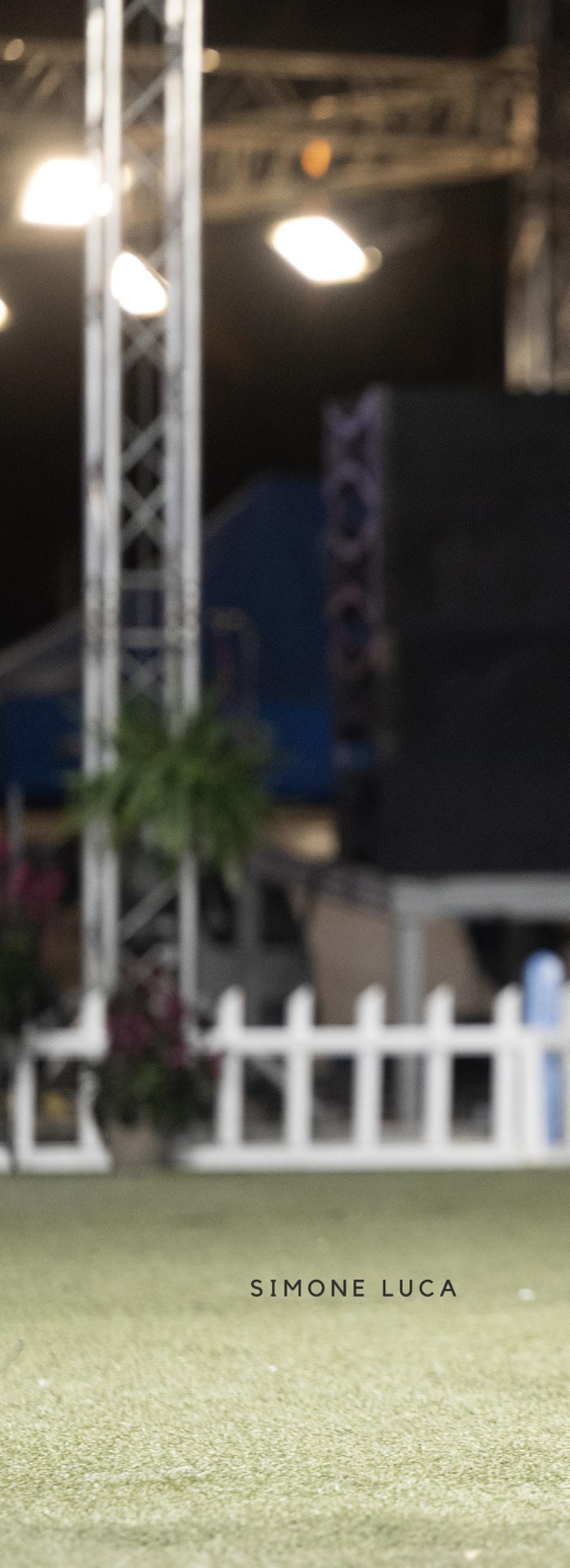
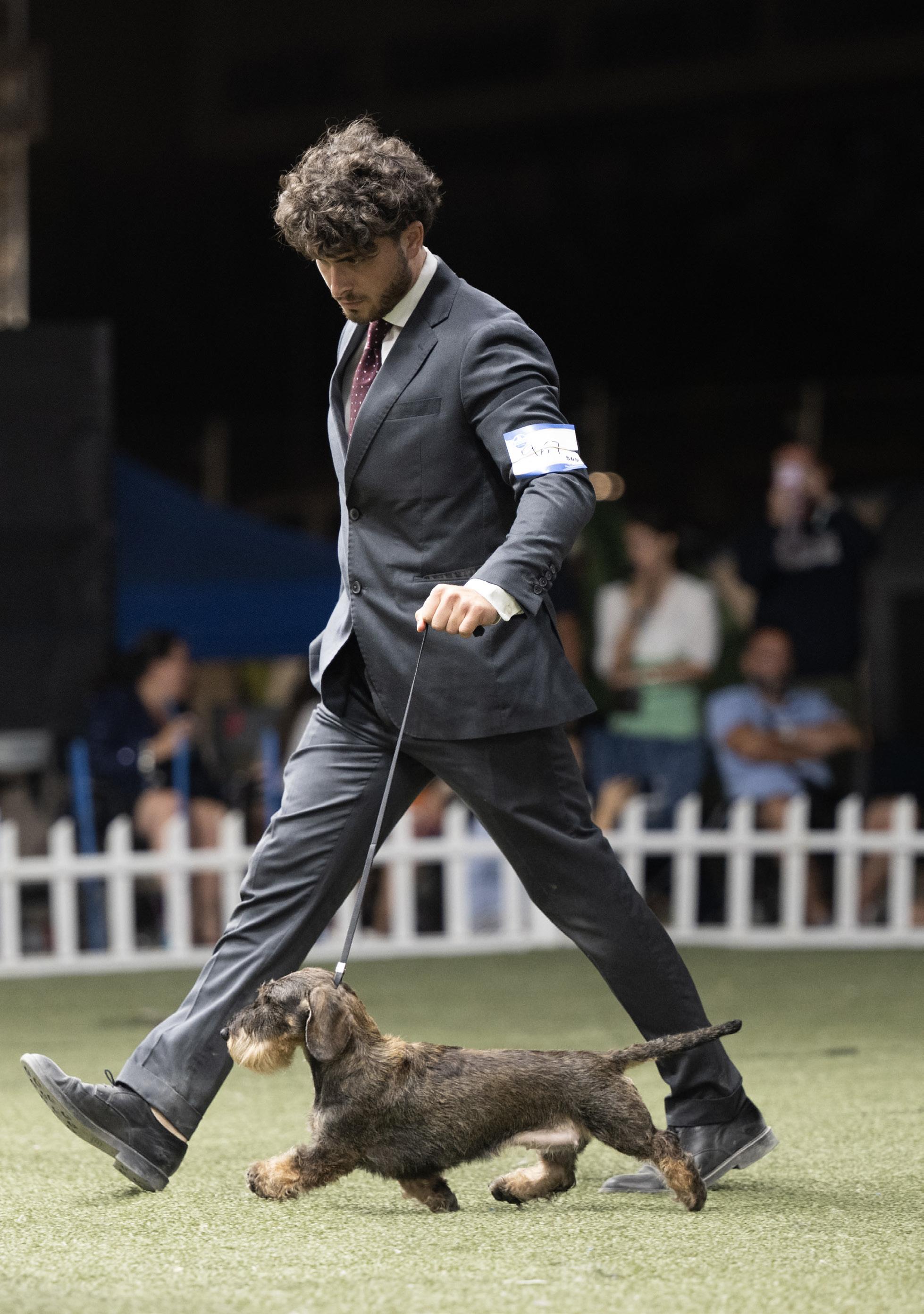

Can you tell us about your experience working with some of the best handlers in Europe? What were the key takeaways from that experience?
Undoubtedly, the most influential figure in the scope of my professional handling career has been Javier Gonzalez-Mendikote. From the very beginning, Javier instilled in me a profound passion for excellence in the care, conditioning, and presentation of purebred dogs. I am very glad to have had the opportunity to work alongside him. Javier is always willing to share his knowledge of purebred dogs with me.
What is your favorite group of dogs to work with?
I have an intense passion for hand-stripped and hand-scissored breeds, particularly Bichon Frise and Wire-Haired Dachshunds. I have been very fortunate to present several beautiful representatives of the Wire-Haired Dachshund breed throughout Europe.
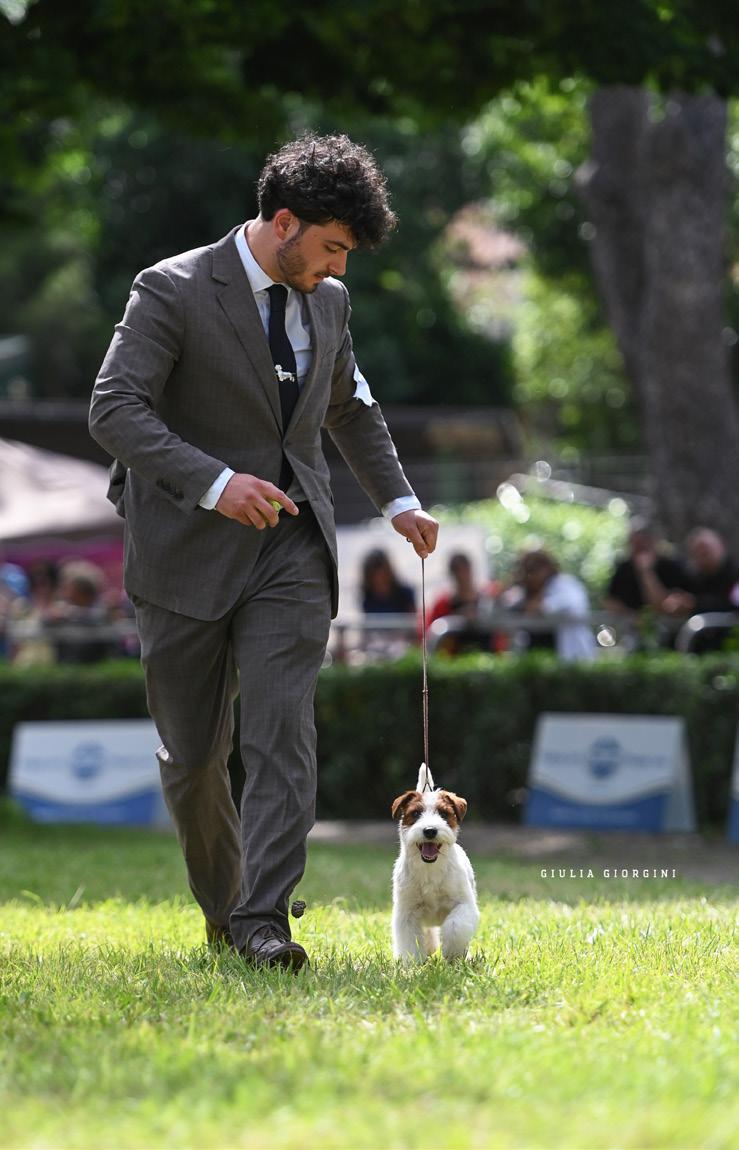
Can you share a memorable moment or accomplishment from your career so far?
The fondest and most memorable moment in my handling career thus far was placing in the group at the European Dog Show in Denmark with my Standard Wire-Haired Dachshund bitch, Margot. I was ecstatic just to have the opportunity to handle a dog in the group ring, and then to go on to place in the group was unbelievable.
Please name a few handlers, breeders, or judges that you particularly admire and why.
I was incredibly fortunate to have worked for worldrenowned American professional handlers Bill and Taffe McFadden in California. I admire Bill and Taffe so much for their lifelong dedication to the sport of purebred dogs. Bill is a very gifted breeder of Wire Fox Terriers; the Random Kennel has produced some of the most beautiful wires throughout the world.
What are your favorite shows to attend? They can be in both Europe and the USA.
My favorite European dog show is Split, Croatia, in July. It is always an enjoyable experience and offers a tremendous venue for our sport. My favorite American dog show is the Kennel Club of Palm Springs; this is a beautiful show set in a picturesque location. I would very much enjoy attending the Westminster Kennel Club Dog Show, which is a show I have not yet been able to attend. Hopefully, I will visit in the near future, as I know it will be an amazing experience.
Please mention three dogs that are not owned, bred, or shown by yourself that you particularly admire, and tell us what you admired about each.
Three dogs I have always admired, though I was not involved with them, are the Standard Wire-Haired Dachshund dog, Multiple-Champion World-Winner Dolce Fontana Di Trevi, bred by Annaluce Saletti (Lux Del Palatino Kennel); the Lagotto Romagnolo bitch, Multi-CH Crufts BIS 2023 AKC GCH Kan Trace Very Cheeky Chic (Orca); and the Kerry Blue Terrier dog,
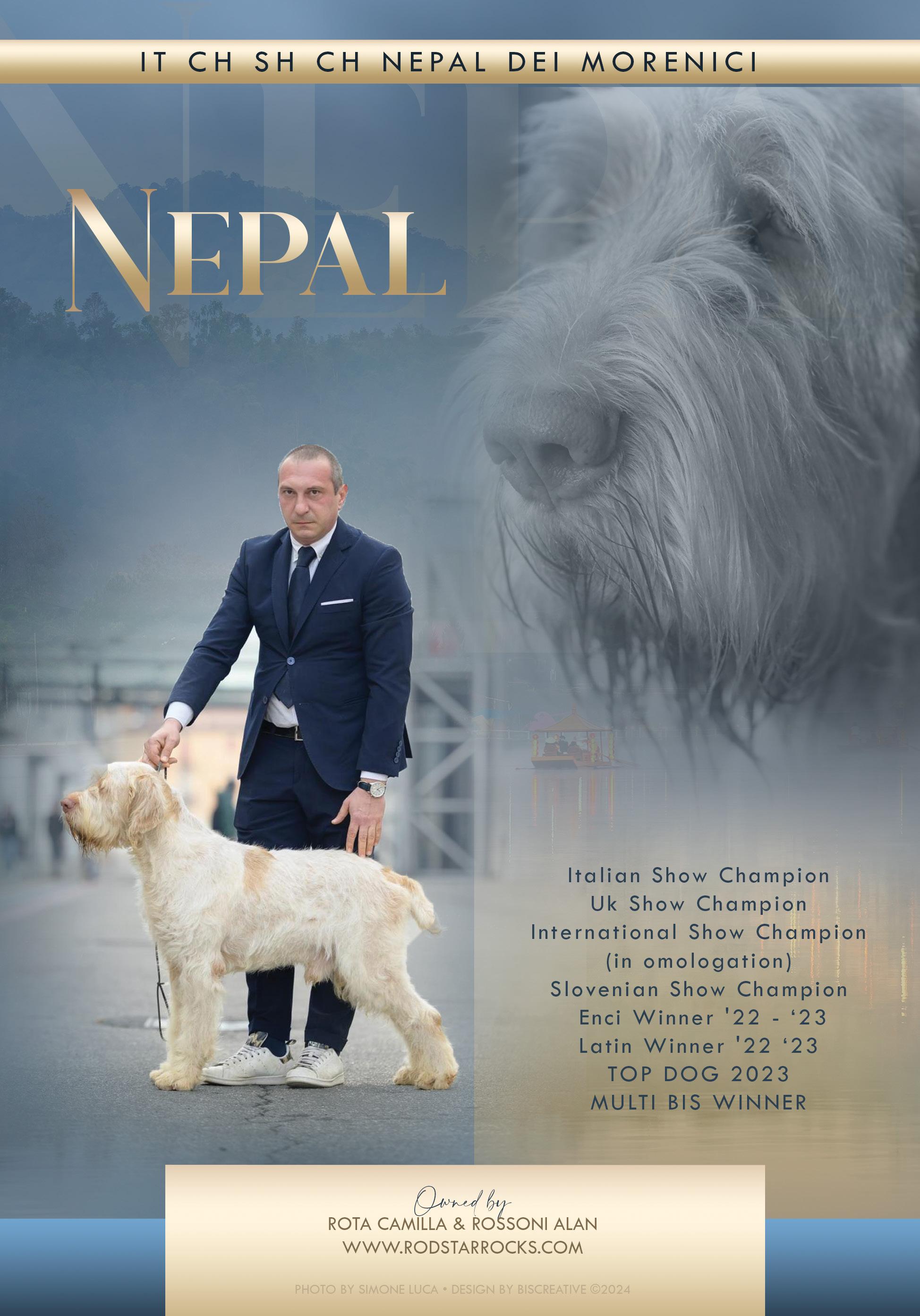
American & UK Champion Torum’s Scarf Michael. The commonality among these three dogs is that they were transformative representations of their breeds.
What motivated your short-term move from Europe to the USA, and how has this transition been so far?
A9: I have always been passionate about fine-tuning my presentation skills of purebred dogs and refining my craft. Bill and Taffe are amazing teachers. I am very grateful for their continued mentorship, guidance, and support.
Have you noticed any significant differences in dog handling practices between Europe and the USA?
I would say that, in general, the key differences between American and European dog shows are that the level of professionalism regarding grooming, presentation, and business management of American professional dog handlers is higher compared to their European counterparts. This is a generalization, and there are certainly exceptions.
What, in your opinion, could be improved at shows in the USA and in Europe from your own perspective?
I believe that in Europe, it would be wise to offer an owner-handler competition. I truly believe this would be beneficial for increasing entries at dog shows and encouraging newcomers to become involved in our sport. Additionally, offering an owner-handler BIS competition would encourage novices to continue their involvement in our sport and provide an opportunity for development.
How do you see the difference between the dog handling business in the USA and Europe?
I strongly believe that professional dog show handlers in America are committed to world-class business practices. In the United States, there is a strong emphasis on running a profitable,


efficient, and competent dog show handling business. Moreover, clients in America often seem to appreciate the high level of service offered by professional dog handlers.
What would be the most important single piece of advice you would give to all serious young judges?
I firmly believe that young dog show judges must understand the intricacies and nuances of the breeds they are approved to judge. Judges should focus solely on evaluating the dogs, and social politics should never influence a judge’s placements. Judges must also be aware that their placements have consequences for the future of the breeds they are judging. It is also very important for people to be respectful of the exhibitors who give them an entry.

August 10 & 11th 2024
Written by Jovana Danilovic
by Tereza Subertova
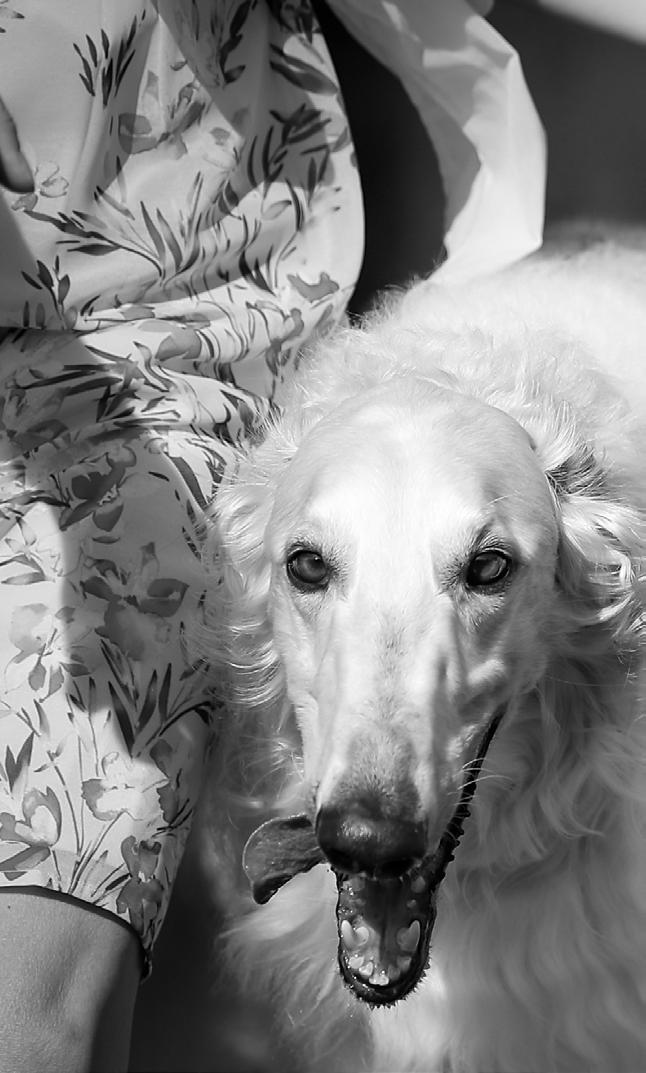
The Sighthound Festival in Donaueschingen took place over the weekend of August 10-11, 2024, drawing enthusiasts and breeders from around the world to celebrate the elegance and agility of sighthounds. Nestled in the picturesque region of southern Germany, near the stunning Black Forest and the serene Lake Constance, the festival provided a perfect backdrop for this prestigious event.

The Sighthound Festival attracted breeders, owners, and fans who share a deep admiration for these elegant dogs. Attendees had the opportunity to engage with fellow sighthound aficionados, sharing stories and experiences while enjoying the vibrant atmosphere.
In addition to the competitions, the festival featured various activities, including seminars, breed presentations, and opportunities for networking. It was an excellent chance for participants to learn from each other and deepen their appreciation for these remarkable breeds.
The festival was not only a celebration but also a competition showcasing the finest sighthounds. In the following pages of this magazine, you will find a comprehensive report detailing the results and standout performances from the weekend.
This year, the festival showcased a distinguished panel of judges, each bringing their expertise and passion for sighthounds. The lineup included:
Gabriel Valdez (Brazil)
Elisabet Janzon (Sweden)
Christian Magre (France)
Per Lundstrom (Sweden)
Alain Dumortier (France)
Gabriel Veiga (Portugal)
Susanne Oschinski (Germany)
David Allan-Gibson (Spain)
Francisco Ruiz Rodriguez (Spain)

Gabriel Valdez Brazilia - “Da Vinci”s” Italienische Windspiele
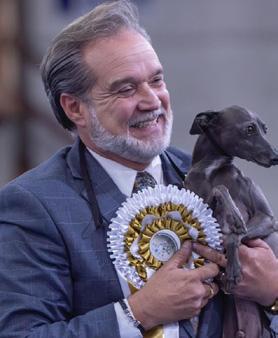
Gabriel Valdez is an FCI All Breed Judge from the Brazilian Kennel Club, licensed to judge FCI, AKC, CKC, and Japanese Kennel Club conformation shows. He has been involved with dogs and dog shows for most of his life, starting with Rough Collies, which he bred and championed as a child in the 1970s. He later established Da Vinci’s Kennels, known for Toys and Sighthounds, producing many Best in Show winners, including Whippets, Greyhounds, and Italian Greyhounds. With over seventy Championship Titles to his name, Gabriel has campaigned various breeds, including Basset Hounds and Australian Shepherds, and worked as a professional handler for over thirty years. Invited to judge on five continents, he values the honor and responsibility of his role and appreciates the trust placed in him by kennel clubs. Outside of dogs, he enjoys collecting antiques, classic ballet, and exotic birds.
David Allan-Gibson Spain- “Shikarah” Afghan Hounds, Salukis, Whippets
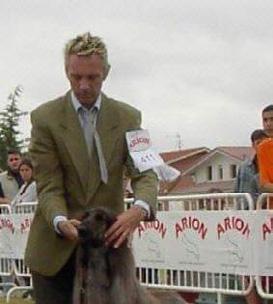
David began his dog journey as a teenager with a Border Collie in obedience, but his passion for showing and breeding ignited in 1974 with his first Afghan Hound, Ch. Zanavars Kochis at Shikarah. He later bred Salukis, Whippets, and Poodles, producing many champions who achieved Best of Breed and Best in Show titles. Now a judge for Groups 4, 9, and 10, as well as Best in Show FCI, he has been fortunate to judge at prestigious shows across Europe and the UK. While he finds breeding a gratifying challenge, he breeds very little nowadays and has been a member of the Spanish RSCE since 1977. David emphasizes overall balance and smooth movement in Afghans and appreciates the Whippet’s unique gait and strong drive.
Alain Dumortier France “Graal Quest” Greyhounds

Alain began his journey with greyhounds in 1988, acquiring his first from Mr. André Renard’s kennel, ‘des Saintes Croisades.’ This lovely black bitch, D’Lutèce des Saints Croisades, became the foundation of his breeding program, earning several CACIBs, including one at Longchamps in 1992. She was bred to Ch. A’ICare des Saintes Croisades, producing two puppies: Isis and Ipsos, both well-remembered. His first litter with Isis and Solstrand Cold Standard produced fourteen black puppies, several of whom became champions, notably Graal Quest Now and Ever, who won five champion titles and went BOB at Crufts 2002. Since becoming a judge in 2001, Alain has enjoyed judging Group X and other groups, appreciating well-balanced dogs with strong type in the breed he loves.


Elisabet has been involved with sighthounds since 1971 when she and her husband bought their first Irish Wolfhound. They started their breeding program with dogs from the Eaglescrag lineage, and their first litter was born in 1975. Scottish Deerhounds entered their lives in 1973, starting with a male puppy from Mrs. Karin Lindhé, Mountebanks Duncan, primarily from Ardkinglas bloodlines. He was soon joined by a full sister and later their foundation bitch, Airescot Miranda; their first Deerhound litter was born in 1976. Since 1993, Whippets have become her main breed, with her first litter born in 1997, and she currently has five Whippet bitches as beloved companions. Elisabet received her judging license in 1996 and has judged all sighthound breeds in about 20 countries, feeling honored to be invited to judge at the prestigious Donaueschingen Sighthound Festival. She looks forward to the show and the opportunity to meet you and your dogs!
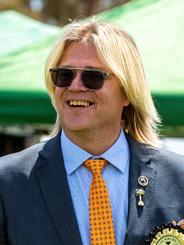
Per was born into a home with dogs, as his father had Great Danes, sparking his fascination for Irish Wolfhounds and other large breeds. He also grew up with Kleine Münsterländer but initially became involved with Miniature Wire Haired Dachshunds. His first Irish Wolfhound litter was born in 1989 under the jointly owned prefix Pre-Eminence’s, and he has since bred Afghan Hounds as well. Since 1997, he has exclusively bred Irish Wolfhounds under his prefix Greirish, producing over 75 Champions and topwinning lure coursing hounds, with dogs he bred earning titles in multiple countries including the USA, Canada, and several European nations. Per has judged Open Shows since 1994 and has awarded CC since 2002, licensed by The Swedish Kennel Club and FCI, and he looks forward to all judging assignments as they offer opportunities to learn, instruct, and connect with fellow dog enthusiasts.

Christian Magré lives in Herbignac, France, and has been involved with Borzoi since 1976, founding his kennel, ‘Belouyeva,’ in 1977. He has bred 24 litters with great care, starting in 1979. In the same year, an Afghan Hound bitch joined the family, achieving significant success on the racetrack, which led Christian to add a Greyhound to his household; he has had a Greyhound in the house almost continuously since 1978. In 1977, he co-founded the Sighthound Club of Brittany, followed by the Sighthound Racing Club of Brittany in 1978, and he currently serves as president of the Greyhound Amateur Club of France and the Coursing Club de la Côte d’Amour. As an FCI judge and instructor for FCI Group 10 and the sighthounds of Group 5, he has judged in many European countries, emphasizing that the structure of the dog aligns with the standard while maintaining the breed’s functionality.

Susanne Oschinski - Germany - “Whipcat” Whippets

Susanne got her first Whippet in 1991, a small but sweet dog that led her to catch the show fever. A year later, she welcomed a second Whippet, FlicFlac Flying Flame, and in 1993, she added Courthill Crystal Ring after visiting England. Since 1995, she and her husband have bred Whippets under their kennel name “Whipcat,” a breed that has truly captured her heart. In 2014, she received the ‘Baron von Gingins Medaille’ from the VDH for her contributions to purebred dog breeding. Judging Whippets since 2005, she has had the opportunity to judge in several countries, including the World Show in Leipzig in 2017, and looks forward to the special show in Donaueschingen.
Francisco Ruiz Rodriguez - Spain - “El Gallinero” Podenco Ibicencos
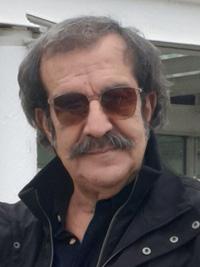
Francisco has lived in Palma de Mallorca since 1967, after studying in Valencia, and has worked across all the Balearic Islands, gaining exposure to their native breeds. A member of the Sociedad Canina of Mallorca and Ibiza since 1979 and the Real Sociedad Canina de España since 1981, he began hunting with the Ibizan Hound and Mallorquin Perdigeros at age 17. He founded several clubs, including the Sociedad Canina of the Balearic Islands and the Spanish Club for the Podenco Ibicenco, and has bred Ibizan Hounds under the kennel name ‘El Gallinero’ since 1979, achieving numerous championships. An RSCE judge since 1981, he specializes in Spanish breeds and has authored standards for several, including the Podenco Ibicenco and Dogo Mallorquin. Francisco has judged at national and international shows across all continents, organized conferences on Spanish breeds, and contributed to animal protection laws in the Balearic Islands, earning several prestigious awards for his efforts.
Gabriela Veiga - Portugal - “Pizon’s” Whippets & Podengo Portugues
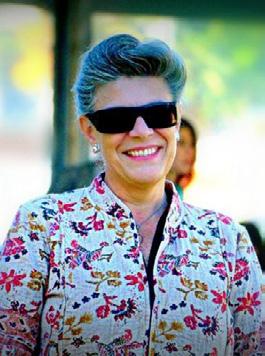
Gabriela began her judge training with sighthounds in 1999. After many years of breeding Podengo Portugues with her husband, Victor, she fell in love with the shorthaired variety of these original Mediterranean hunting dogs. In 2005, she welcomed her first litter of smooth-haired Podengo Portugues in her own kennel. Over the years, Gabriela has held various positions in the Portuguese Kennel Club and served on the Show Committee and as a board member of the Sighthound Association for nearly 15 years. As an internationally recognized judge for sighthounds and small dogs, she regularly participates in major events and club shows worldwide, with a particular passion for sighthounds and the Mediterranean breeds of FCI Group 5.



SATURDAY, 10th,
Canarian Warren Hound Judge: Ruiz Rodriguez Francisco (Spain)
Yurena De Canera De Mouclem, owned by Andrea Hoff
Cirneco Dell’etna / Judge Ruiz Rodriguez Francisco (Spain)
Edda Degli Antichi Malarazza, owned by Matteo Lombardo
Ibizan Podenco, Smooth Judge: Ruiz Rodriguez Francisco (Spain)
Darwins Legacy Carism, owned by Anne Nystrom
Pharaoh Hound Judge: Ruiz Rodriguez Francisco (Spain)
Reedly Road Showstopper, owned by David Rodriguez
Portuguese Podengo, Small, Smooth Judge: Ruiz Rodriguez Francisco (Spain)
Akswell King Of My Heart, owned by Olga Guskova
Afghan Hound Judge: Gabriel Valdez (Brazil)
Gillian Jacobs Gandamak Slovakia, owned by Blanka Molnarova
Azawakh Judge: Elisabet Janzon (Sweden)
Velvet Voodoo Azalee, owned by Sarina Keller
Borzoi Judge: Christian Magre (France)
Dom As Goscha Vic Vuncan, owned by Greta Schalenbourg
Deerhound Judge: Elisabet Janzon (Sweden)
Eala Frya Maleficent, owned by Gabriela Remmert-Kamp
Greyhound Judge: Alain Dumortier (France)
Sobers Geraldine, owned by Bitte Ahrens and Pierluigi Primavera
Hungarian Greyhound Judge: Alain Dumortier (France)
Callisia Perphenazinum, owned by Weronika Mladozeniec
Irish Wolfhound Judge: Elisabet Janzon (Sweden)
Brida Della Bassa Pavese, owned by Stefano Piva
Italian Sighthound Judge : Per Lundstrom (Sweden)
Fiefoerniek’s Falderie, owned by Graaf Sahulenka and Lucien and Sandra Van de Graaf

Polish Greyhound Judge: Per Lundstrom (Sweden)
Visenna Arcturus, owned by Aleksandra Walas
Saluki Judge: Veiga Maria Gabriela (Portugal)
Qirmizi Ucentinne, owned by Nicklas Eriksson
Sloughi Judge: Elisabet Janzon (Sweden)
Alwaahid Calim, owned by Sandra Wagner-Schernick
Spanish Greyhound Judge: Alain Dumortier (Spain)
Esperanza Arcturus, owned by Blanka Horbatowska
Whippet Judge: Alain Dumortier (Spain) and Susanne Oschinski (Germany)
Majestrian Euphoria, owned by Majestrian kennel
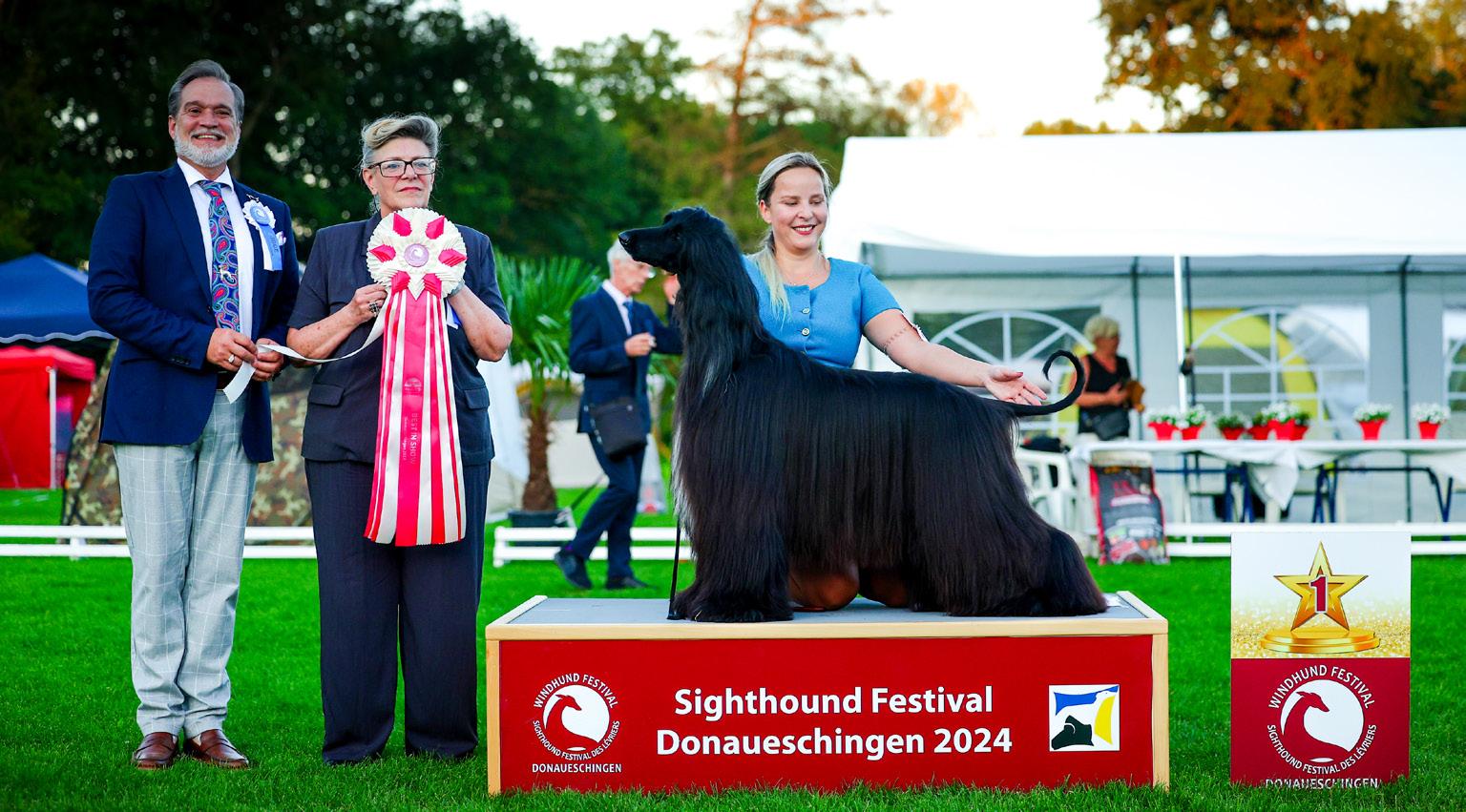
Whippet - Kennel, Majestrian 1 2 3 4
Gillian Jacobs Gandamak Slovakia
Afghan Hound - Molnárová, Blanka
Sobers Geraldine
Greyhound Ahrens - Primavera, Bitte - Pierluigi
Qirmizi Ucentinne
Saluki - Eriksson, Nicklas
Majestrian Euphoria

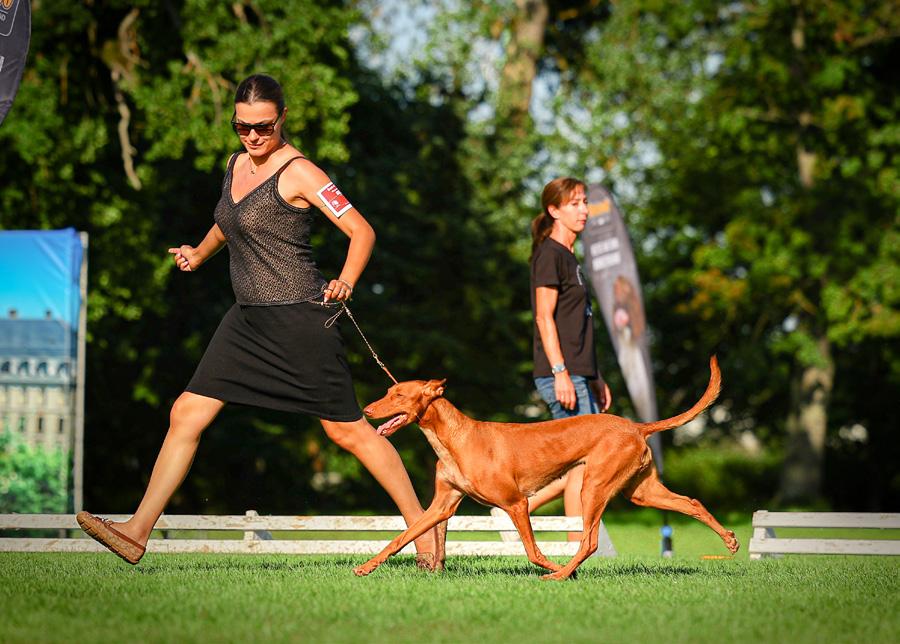





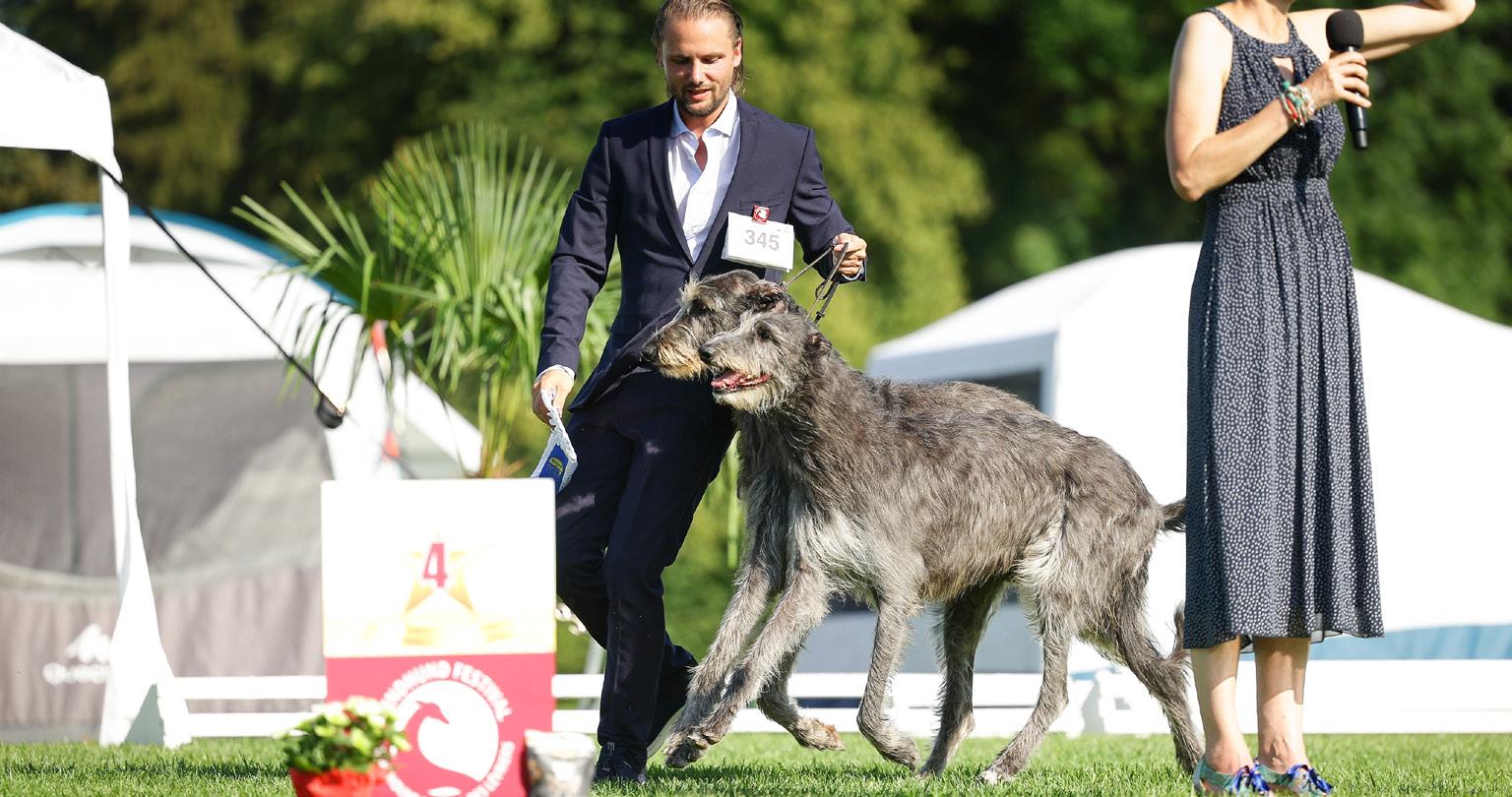
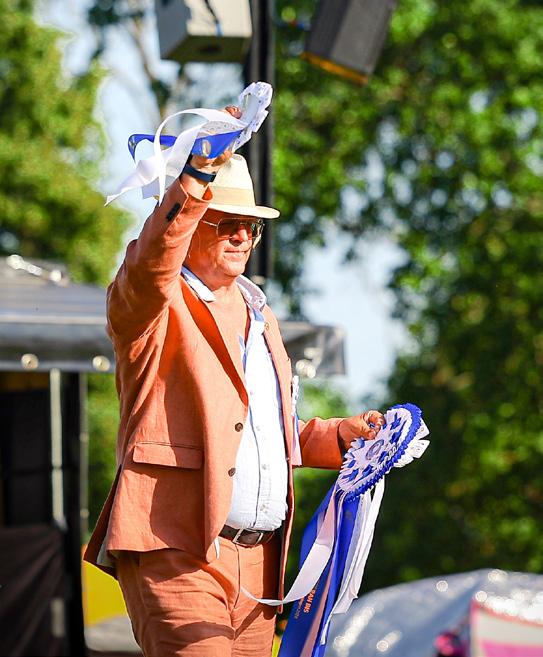





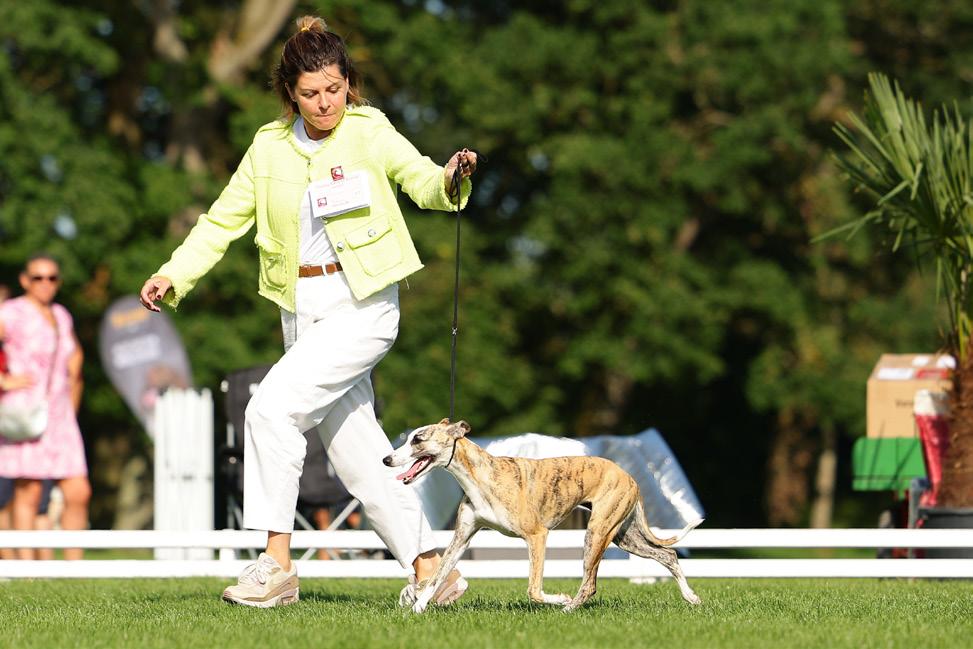
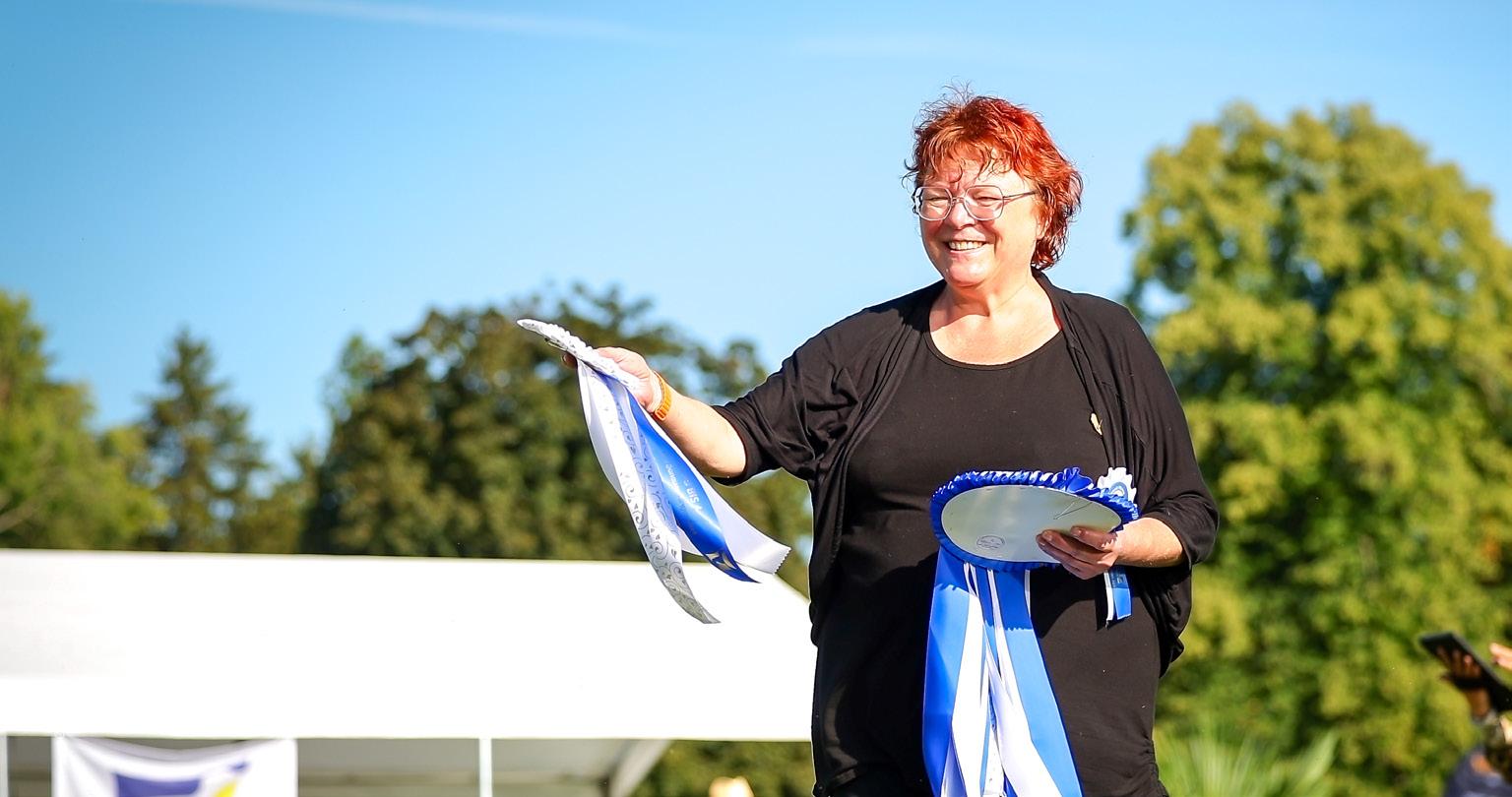
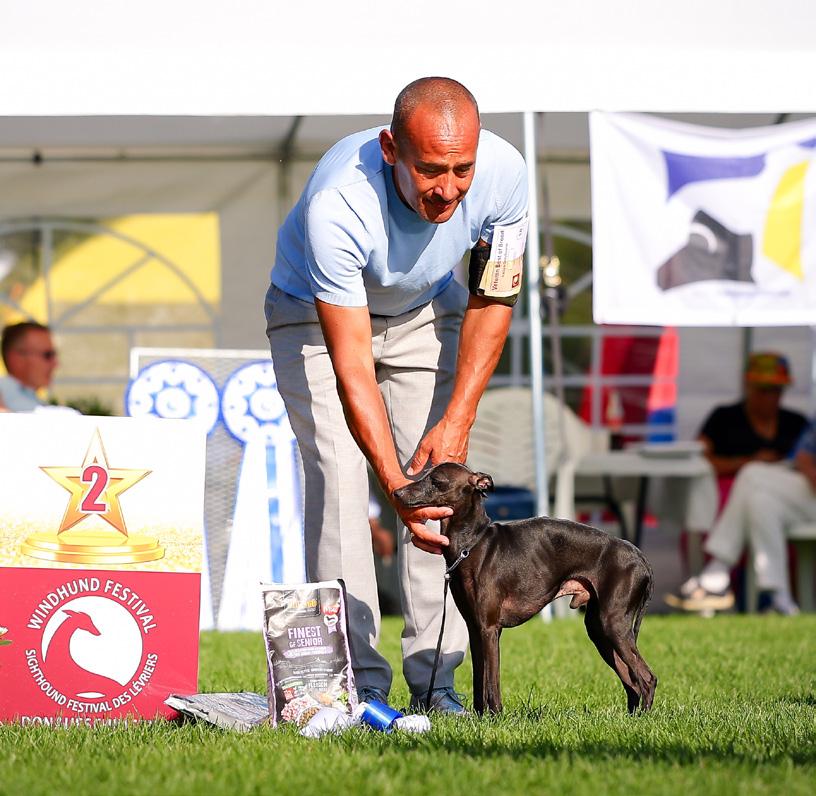
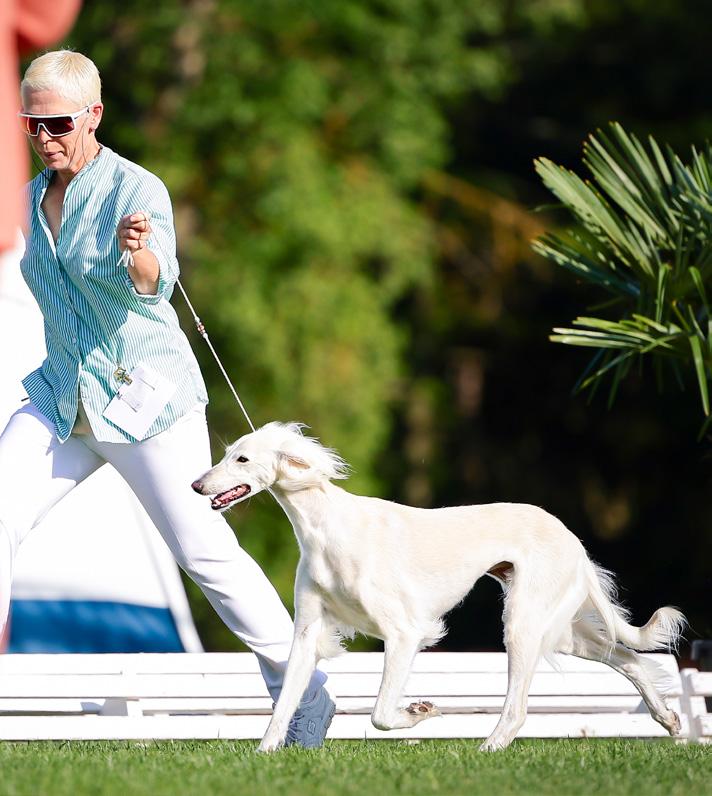


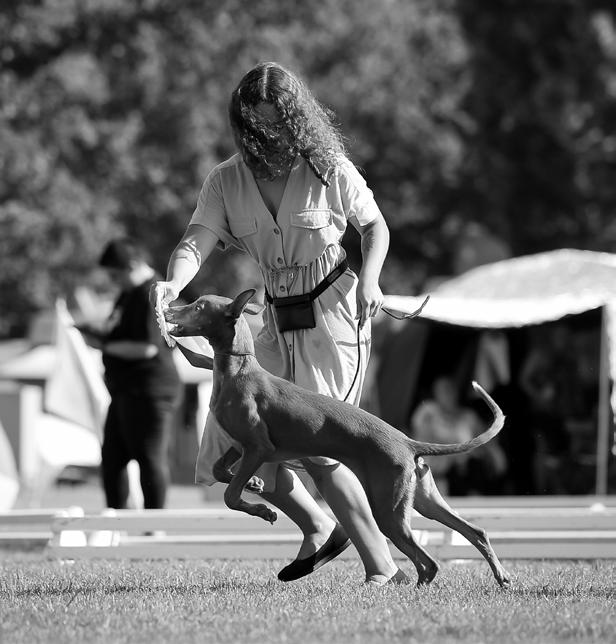




SUNDAY, 11h,
Canarian Warren Hound Judge: Veiga Maria Gabriela (Portugal)
Atteneri del Fuego Canario, owned by Jessica von Falkenhayn
Cirneco Dell’etna / Judge Veiga Maria Gabriela (Portugal)
Edda Degli Antichi Malarazza, owned by Matteo Lombardo
Ibizan Podenco, Smooth Judge : Veiga Maria Gabriela (Portugal)
Darwins Legacy Carism, owned by Anne Nystrom
Pharaoh Hound Judge : Veiga Maria Gabriela (Portugal)
Reedly Road Showstopper, owned by David Rodriguez
Portuguese Podengo, Small, Smooth Judge : Veiga Maria Gabriela (Portugal)
Akswell King Of My Heart, owned by Olga Guskova
Afghan Hound Judge : Allan David (Spain)
Xenos Sandor, owned by Roberto Bongiovanni
Azawakh Judge : Ruiz Rodriguez Francisco (Spain)
Cherubics Kapi, owned by Ernestas Balsiukas
Borzoi Judge : Alain Dumortier (France)
Dom As Goscha Vic Vuncan, owned by Greta Schalenbourg
Deerhound Judge : Per Lundström (Sweden)
Fritzen´s Sting Ray, owned by Cristina Wueger
Greyhound Judge : Christian Magre (France)
Sobers Geraldine, owned by Bitte Ahrens and Pierluigi Primavera
Hungarian Greyhound Judge : : Per Lundström (Sweden)
Callisia Perphenazinum, owned by Weronika Mladozeniec
Irish Wolfhound Judge : Per Lundström (Sweden)
Brida Della Bassa Pavese, owned by Stefano Piva
Italian Sighthound Judge : Christian Magre (France)
Eclair Veloce Come Il Vento, owned by Sigurd Rolfes

Polish Greyhound Judge : Francisco Ruiz Rodriguez (Spain)
Fee Zaba Niwika Sibin, owned by Wilma Marijnissen Boonen
Saluki Judge : Gabriel Valdez (Brazil)
Qirmizi Ucentinne, owned by Nicklas Eriksson
Sloughi Judge : Francisco Ruiz Rodriguez (Spain)
Chayim Schuru-esch-schams, owned by Sandra Baumann
Spanish Greyhound Judge : Francisco Ruiz Rodriguez (Spain)
Saga`s Gentle Giants Fausto Mistra, owned by Marianne Samso
Whippet Judge : Elisabet Janzon (Sweden) and Susanne Oschinski (Germany)
Windborn Jaja Ding Dong At Texano, owned by Orlando Cano

Azawakh - Balsiukas, Ernestas 1 2 3 4
Windborn Jaja Ding Dong At Texano
Whippet - Cano, Orlando
Qirmizi Ucentinne
Saluki - SE Eriksson, Nicklas
Darwins Legacy Carisma
Ibizan Podenco, Smooth-Haired - Nystrøm, Anne
Cherubics Kapi
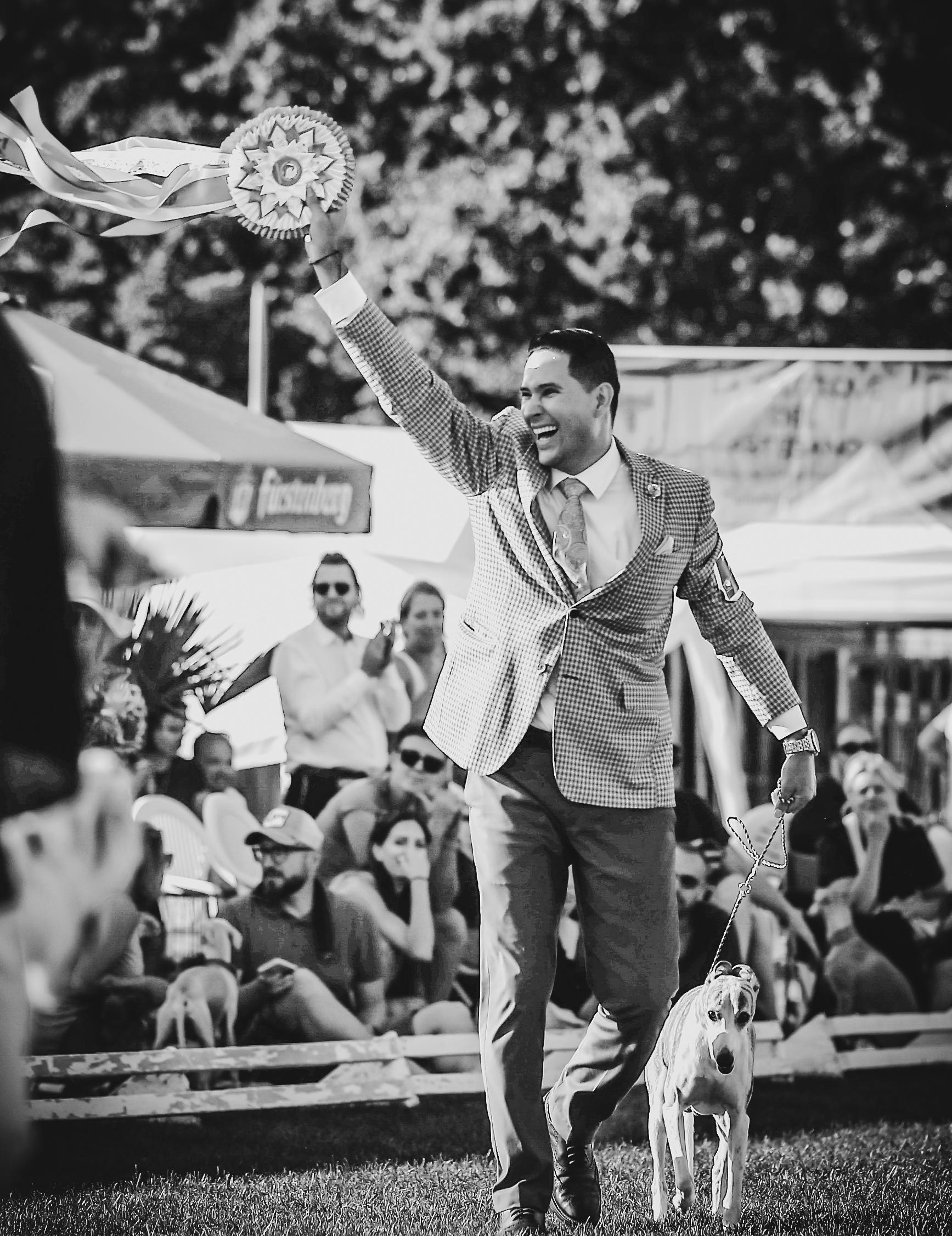
Windborn Jaja Ding Dong At Texano
Whippet - Cano, Orlando



BY LEE GROGAN
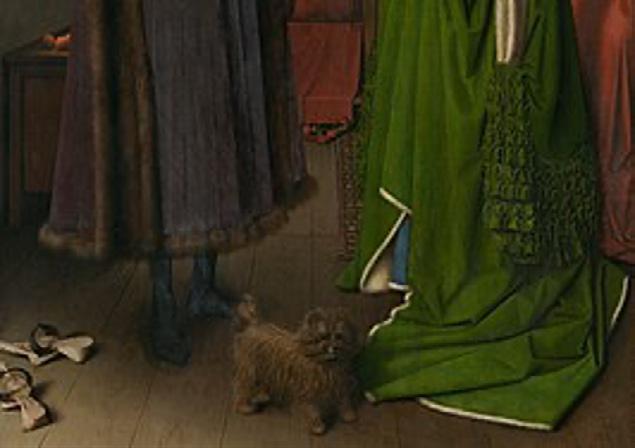

by Edwin Meyer Viol
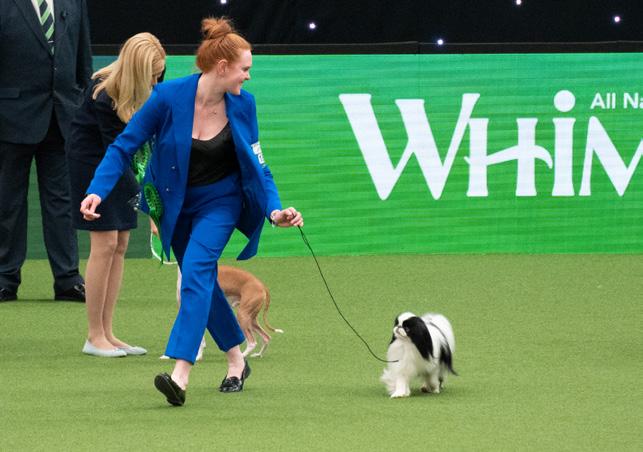
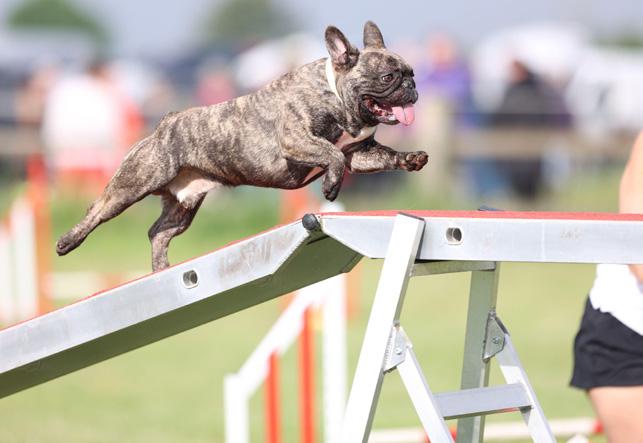

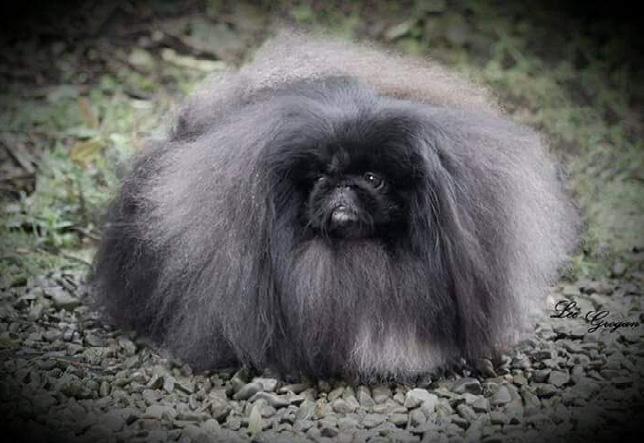


By Ir. Edwin Meyer Viol (Foundation for Pedigree Dogs)
As early as 1434, Jan van Eyck, a painter from the Belgian town of Maaseik, painted a dog with a short muzzle (see picture below), presumably a predecessor of the Brussels Griffon and/or Affenpinscher. The short muzzle was considered necessary to keep buildings free of small vermin such as rats and mice. Short-muzzled predecessors of the Shih Tzu were also present in emperors’ palaces centuries ago in the Far East.
The British evolution scientist Darwin observed in the mid-19th century that the domestication of animals is accompanied by the continual shortening of the skull. This phenomenon occurs not only in dogs but also in mice, cats, cows, pigs, and numerous other domesticated animals. We can conclude that brachycephalic dogs are not a recent development; rather, it is a process that has been ongoing for centuries. However, we can distinguish

between breeds that have had short skulls for centuries and those that have been deliberately bred with shorter and shorter muzzles in recent decades, such as the most famous trio: the English bulldog, the French bulldog, and the pug. These breeds are known to have a higher incidence of serious health problems.
It should therefore not surprise us that in the encyclopedic work of O’Neil and Packer (lit. 4, 2022), this trio is each mentioned between 300 and 400 times, while the Affenpinscher, for example, appears only four times—primarily because they are in much better condition than the trio. There are globally about 30 recognized brachycephalic breeds, of which only 15 are included in this scientific encyclopedia. This clearly indicates that knowledge about brachycephalic dogs is concentrated around these three breeds, revealing significant gaps in the evidence regarding general defects in brachycephalic breeds.
There are also clear gradations in the severity of disorders, particularly respiratory issues summarized under the name BOAS (Brachycephalic Obstructive Airway Syndrome). Obviously, there are brachycephalic breeds in which a majority suffer from this condition, but there are also breeds that experience this as infrequently as those with medium and long muzzles. Therefore, it seems to be breeddependent.
It remains a significant scientific question whether the various disorders now linked to the short muzzle are actually caused by it. It could well be that these issues are more related to genetic or environmental factors. We hear about causes such as stenotic nostrils, soft palate, thick neck, and obesity. Perhaps it also relates to poorquality breeding or a lack of genetic diversity within breeds? Most scientific works have not yet provided definitive evidence; instead, they present hypotheses or assumptions, or at best, demonstrate a correlation that warrants further research.
It becomes particularly interesting when it is stated that the degree of disorders is related to the length of the muzzle, as Marjan AE van Hagen of the University of Utrecht (NL) notes in her work “Breeding with Short-Muzzled Dogs” (lit. 1). This work, commissioned by the Minister, establishes criteria that will legally determine that dogs with a CFR (muzzle length/skull length) of less than 0.3 (now) or 0.5 (in combination with showing eye white) will be banned from breeding. This report creates a general selection criterion based on muzzle length. By the way, van Hagen’s work is a literature review; she has conducted no original research.
When van Hagen proposed per-breed breeding criteria during the discussion of the assignment at the ministry, she was sent back home with the remark that this was much too cumbersome (read: too expensive) (*5). She was instructed to come up with something simpler—specifically, an external and, above all, inexpensive characteristic like muzzle length to maintain. For this, it was necessary to “produce science.”
This seems to have been achieved using primarily two scientific works by Packer (Hartfield/ London, lit. 2 / 2015) and Liu/Ladlow (University of Cambridge, lit. 3 / 2019). In Packer’s work, based on a study using a limited number of dogs from a restricted number of breeds, a hypothesis (assumption) was made that there was a relationship between muzzle length, expressed as the muzzle length divided by skull length (the Cranio-Facial Ratio, or CFR), and the degree and severity of BOAS. This presented a breedindependent criterion to trace BOAS!
However, this hypothesis was later rejected with overwhelming evidence in a study regarding BOAS in the three breeds—the English bulldog, the French bulldog, and the pug—conducted in Cambridge (lit. 3 / 2017). This study stated that each breed has different risk factors for the occurrence of BOAS and that muzzle length was not one of them. In short, the causes of this

condition varied among the breeds. For example, an important risk factor for the pug was obesity, which, by the way, cannot be classified as a genetic cause in itself. In general, obesity is a risk factor for many disorders in both humans and animals.
This information was known in Utrecht because both works were on her reading list. Nevertheless, she deliberately introduced the muzzle length criterion, fully aware that it was not a risk factor.
Professor Richard Gill, a mathematical statistician at Leiden University (NL), studied the three aforementioned works for their scientific basis and came to the following conclusion:
“The conclusion to be drawn from the works I have discussed is that it is unreasonable to suppose that a single simple criterion, the same for all breeds, can be a sound basis for legislation on breeding. Packer et al. clearly hoped to find support for this but failed; Liu et al. (Cambridge) scuppered that dream. Reanalysis of their data with more sophisticated statistical tools shows that they should have recognized they were betting on the wrong horse.”
Surprisingly, the nose length criterion, the CFR, was justified in the Utrecht report with a “modified” version of the Cambridge conclusion:
“The main risk factors for BOAS are a flat muzzle, thick neck, and excess weight” (ix).
This statement is included in the Utrecht report as justification for the CFR criterion. The note “ix” refers to the Cambridge study. However, the Cambridge study states something entirely different. The conclusion of the summary in that study reads:
“In conclusion, stenotic nostrils, BCS, and NGR were found to be valid, easily applicable predictors for BOAS (+).”
Cambridge’s term “stenotic nostrils” was replaced by “flat muzzle” in the Utrecht report.
It appears that the Utrecht report chose to use muzzle length as a criterion for a breeding ban solely to easily identify dogs based on appearance. This practice has been common in Dutch politics, often aimed at saving government money through profiling. It has also been employed in tax audits and surcharges over the past decade.
The main conclusion from the Cambridge study is that the degree of disorders and BOAS is clearly breed-dependent. A notable example is the Affenpinscher, one of 30 brachycephalic breeds with a short muzzle, in which BOAS does not occur at all.
Another remarkable scientific oversight? Had the data set behind the study from London been examined in Utrecht, researchers would have found many dogs from 16 mesocephalic breeds (medium-long muzzles), such as the Labrador and Jack Russell, that also have a CFR below 0.5. Many of these dogs also show eye whites, which should lead to a breeding ban according to Utrecht’s rules. However, these breeds are not classified as brachycephalic.
So are mesocephalic breeds now also banned from breeding if their CFR < 0.5 based on a refuted hypothesis for brachycephalic breeds? This is a consequence of the fact that, in the Utrecht report, the criteria are explicitly breedindependent. It seems necessary to keep politics and science strictly separate. It is undesirable for the minister, pressed by animal activists, to pressure scientists to come up with cheap solutions. It has been sufficiently demonstrated that hereditary disorders are breed-dependent. This is something even a first-year student can understand. After all, the definition of a breed is a group of individuals or animals with similar hereditary characteristics.



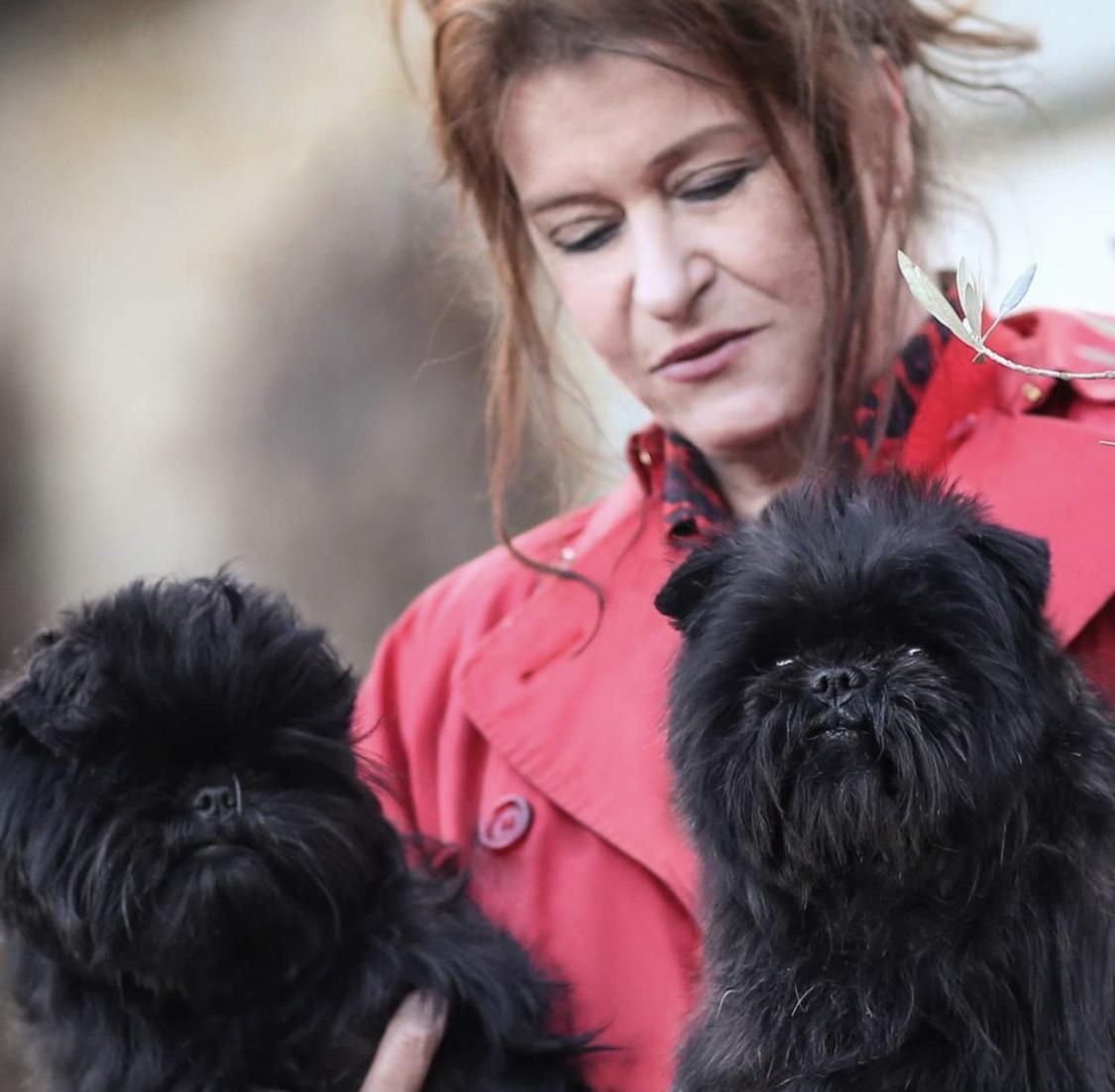
BRACHYCEPHALY BREEDS SPECIAL
Please tell our readers how you got involved with the world of pedigree dogs and dog showing/breeding. (Please mention your kennel name, its meaning, and the breeds you are involved with.)
We have always had pedigree dogs for as long as I can remember. My mom had Maltese and Poodles. I started 40 years ago with Bostons, and a few years later, I included the Japanese Chin. About 25 years ago, I got my first Affen, Kealykin Space Cowboy, aka Kicker. He was the foundation of our kennel, and to this day, there isn’t one single dog that doesn’t have him in his or her pedigree. So, after years, the Affens took over, and I used the name Tani Kazari for them. It means “Valley of the Jewels” in Japanese (from the time I had Chins).
Where did you get your foundation dogs, and what breeders (if any) do you work with today?
Our foundation came from the USA; it was Kealykin Space Cowboy, bred by Letisha Beth and Doris Talone in the USA. We now mostly work with people who started with our dogs. I am very grateful for what they produce and the work they do.
What breed hallmarks/key characteristics do you aspire to produce in each new generation of puppies?
We carefully watch for character, and of course, type and movement.
How have your breed/breeds changed since you first started showing/breeding? This can be in quality and/or presentation.
Affens haven’t changed much, and I think quality has gone up. So has grooming and presentation. After all, it’s a show. Twenty years ago, no one even looked at an Affen in shows, as here in Europe they were considered poor in type; the only thing they looked for was whether all the teeth were in place.
What health tests do you carry out before breeding a litter?
We do eye tests and patella tests.
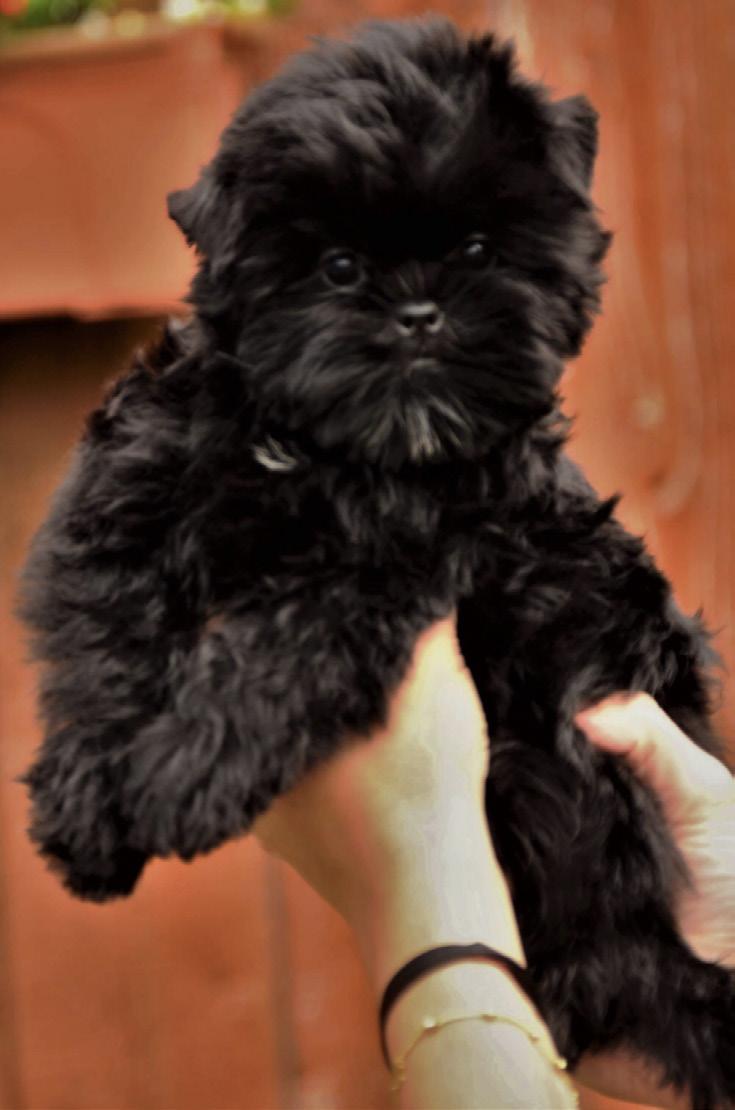

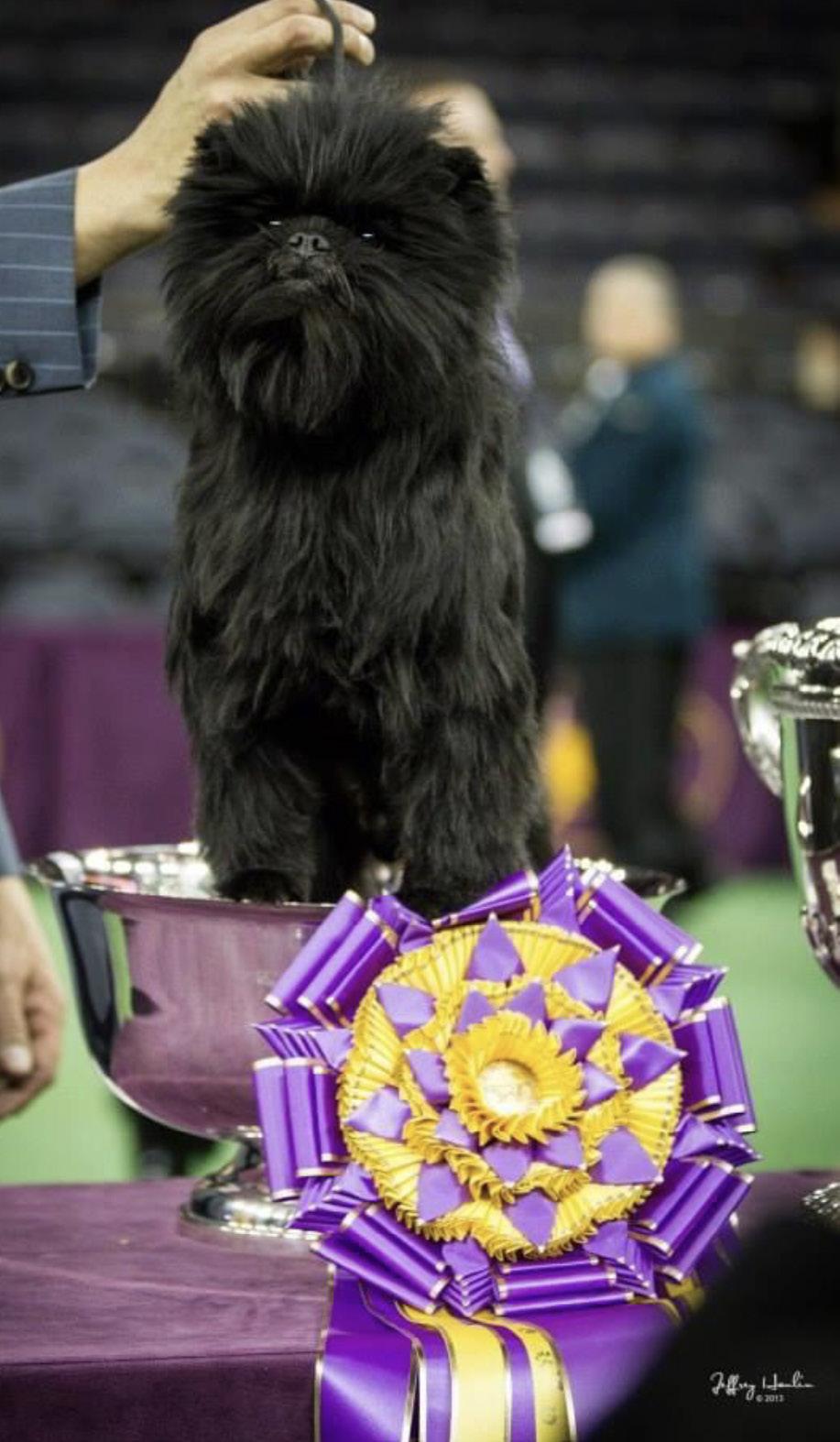
What steps do you take to prevent or address issues like Brachycephalic Obstructive Airway Syndrome (BOAS) in your breeding program?
We take no steps at all regarding BOAS, as it isn’t really present in our breed. I can honestly say that in 25 years, we have never had any problems with BOAS. The breeders who did test came to the same conclusion: there were zero issues. But nowadays, it seems that it doesn’t matter; if they say you have a brachy breed, everyone—even before research—thinks, “Yep, BOAS!” which is not true!
How do you ensure that your brachycephalic dogs are comfortable and safe during extreme weather conditions, given their difficulties with temperature regulation?
For judges, look at the total Affen, the total pack. Face/monkey, body/short, movement/ light and easy. A young Affen can sometimes be a bit shy, but it should recover quickly.
What dog from the past do you admire the most?
I think Yarrow Mighty Joe, the brother of my foundation male, was an Affen I really liked a lot!
Is there a country where you believe the breed is particularly strong at the moment?
I don’t really think one country is stronger than another; everywhere there are good and bad breeders. I can’t name a standout country.
What are your future goals/wishes in the sport of pedigree dogs?
The future of pedigree dogs scares me a bit more each time. Just when you think things are going insane with rules, another issue pops up. So when it comes to goals and wishes, let’s hope we can continue. I know it’s not getting easier, but until then, I still aim to enjoy it—enjoy the shows and the newborns all over the world. But sometimes I feel we are in a battle without a gun or an army to help us survive. People who are against pedigree dogs are getting stronger every day. So I will enjoy it as long as I can.
Do you have any other hobbies outside of dog showing?
My hobbies, besides dogs, are visiting horse shows (Arabs), shopping, and having dinner with my friends and family.

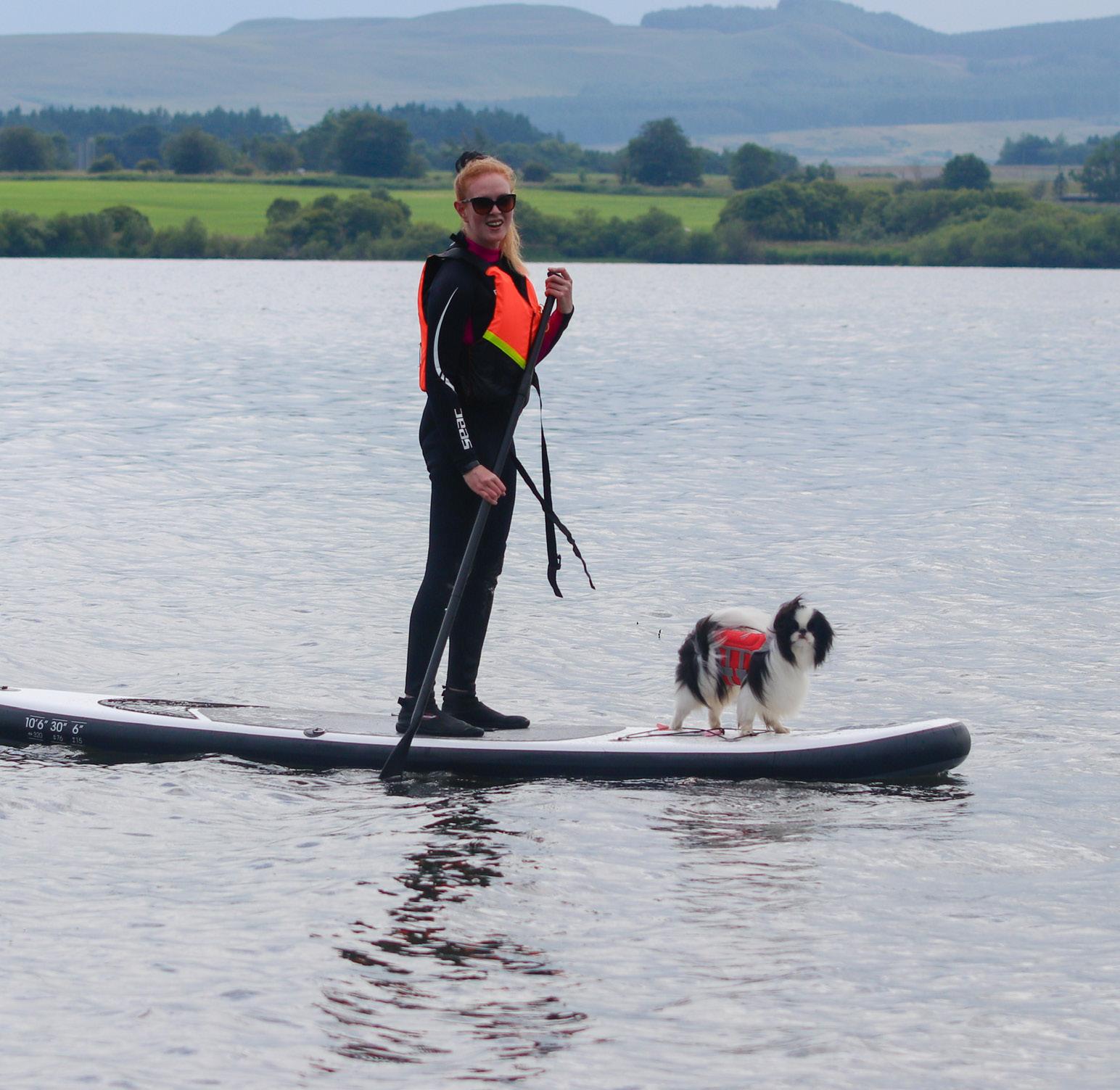
BRACHYCEPHALY BREEDS SPECIAL
LEANNE LINDSAY
Please tell our readers how you got involved with the world of pedigree dogs and dog showing/ breeding.
I have been involved in showing dogs my whole life. My gran showed, bred, and judged Irish Red and White Setters. I would handle her dogs in junior handling classes and went on to get an Irish Setter as my first show dog. My gran bred under the kennel name Anjuli. I would love to say it had some meaning to her, but the story goes that it was her third-choice name; the first two choices were rejected, and she just plucked it from a book. Moving forward, in 2009, my gran decided that she needed to downsize and came across the Japanese Chin. I fell in love with her first one, started showing her, and now I have a house full. I also have a Pug now, but I have no plans to breed them.
Where did you get your foundation dog, and what breeders (if any) do you work with today?
My first Japanese Chin was from Tony Allcock— “CH Sleepyhollow Maria Callas at Anjuli ShCM.” I was very lucky to have mentorship and support from Tony, and I still look to him for advice. Unfortunately, we could never get her in pup. My second dog from Tony, “CH Sleepyhollow Sapphire Diva at Anjuli ShCM VW,” came to me in partnership with Tony, not only proving herself in the ring but also as the top toy brood bitch in the UK in 2016, producing three champions in her first litter. All of my dogs now have Saffy in their pedigree.
What breed hallmarks/key characteristics do you aspire to produce in each new generation of puppies?
Health and soundness come first, without losing breed type. I want a square puppy with an outgoing temperament.
How has your breed/breeds changed since you
first started showing/breeding? This can be in quality and/or presentation.
In the UK, I feel the quality is not as strong as it used to be. There is less consistency in what we see in the ring. I call it “any variety Japanese Chin” sometimes—some are big, some small, some long with no leg, and poor movement. This is a generalization, as we do have some lovely dogs as well, and maybe as the numbers are lower, it is more noticeable.
What health tests do you carry out before breeding a litter?
In the UK, there are actually no health tests outlined by the Kennel Club for Japanese Chins, but many of us are doing more and more testing. I do patella scoring, heart testing (auscultation), BOAS grading, and I am now carrying out genetic testing for PRA-PRCD and GM2 going forward.
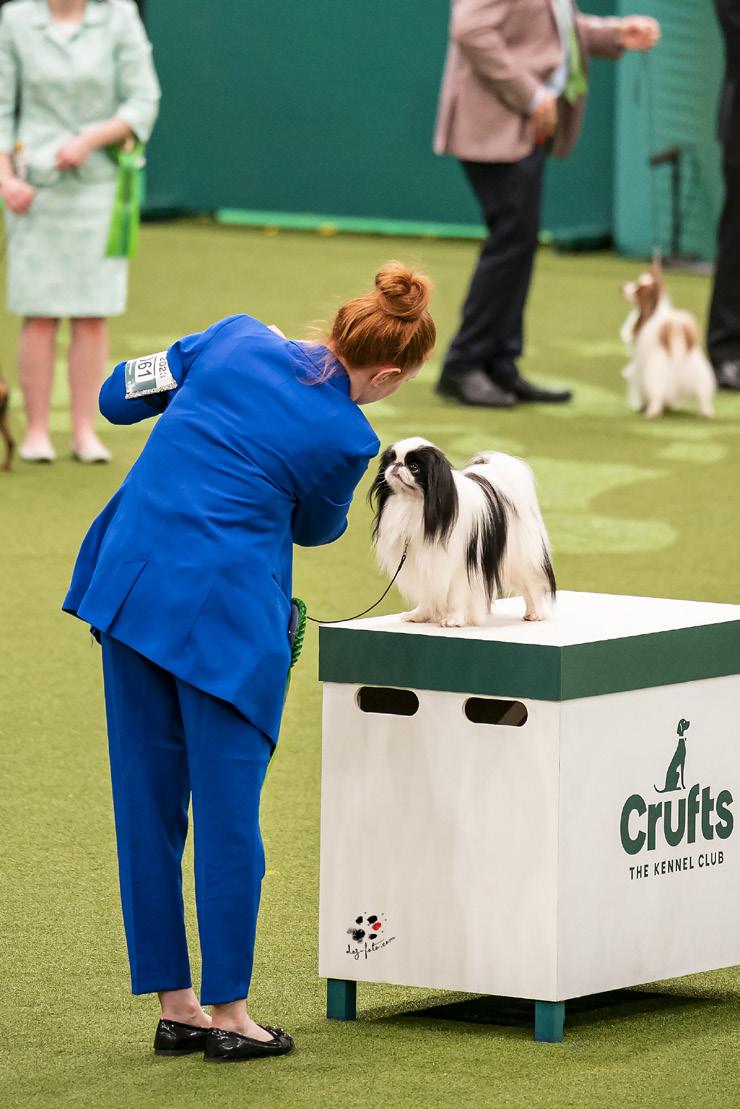

What steps do you take to prevent or address issues like Brachycephalic Obstructive Airway Syndrome (BOAS) in your breeding program?
I have been lucky that all my dogs that have been graded have been at zero. Being a brachycephalic breed, I believe all of them will have a degree of BOAS, but those affected more severely should not be bred from.
How do you ensure that your brachycephalic dogs are comfortable and safe during extreme weather conditions, given their difficulties with temperature regulation?
We are in Scotland, so we don’t really see any extreme weather! When it is very warm (we get the odd day), I make sure there is plenty of water available, along with cool mats and shade. I do not walk the dogs during the day, but this applies to any breed. If they are walked in warm weather, I carry cool coats with me and usually walk next to water, such as the beach, so they can cool off.
What are some of your proudest achievements to date in the world of dogs?
Winning Best of Breed at Crufts 2023 and being shortlisted in the group with CH Anjuli Trevor ShCHEX will always be a highlight. I am also super proud that his son, CH Cranvarl Roger at Anjuli JW, is the youngest-ever red and white champion in the UK.
What do you wish all judges knew about your breed/breeds before judging them?
My current annoyance is regarding color. So many do not understand that clear red and white dogs will have self-colored pigment, whereas sable will be darker. Both are correct.
Please name three dogs within your breed that you wish you had owned/bred. These can be any
dogs from any point in history.
CH Sternroc Dikki—I think for obvious reasons. He is the breed record holder and holds the UK breed record. CH Fralee Mask of Miko. Although I never saw this dog in person, from photos he looks very much like my type. CH Vanstica Kazuki Sleepyhollow. He is the sire of my foundation bitch and a fabulous show dog.
Do you judge? Please could you share some special judging appointments with our readers.
I have judged most toy breeds at the open level. I am qualified to award CCs in Japanese Chin, and I was lucky enough to be invited to judge at the United Kingdom Toy Dog Society for my first appointment in 2023. I also award CCs in both coats of Chihuahuas.
Is there a country where you believe the breed is particularly strong at the moment?
Having only seen photos online, there seem to be some nice dogs in the USA right now.
What are your future goals/wishes in the sport of pedigree dogs?
To continue to breed occasionally, enjoy showing, and spend time with my dogs. I would love to continue to the next generation and produce more champions. I am also hoping to judge more breeds.
Do you have any other hobbies outside of dog showing?
Most of them involve the dogs coming with me! I enjoy walking and paddleboarding—Trevor has climbed mountains here in Scotland and also comes out on the paddleboard with me. I also take them up to the local pub for extra socializing.


BRACHYCEPHALY BREEDS SPECIAL
Please tell our readers how you got involved with the world of pedigree dogs and dog showing/breeding.
The Olijah Kennel is made up of Josh Henderson and Olivia Timms. Olijah is clearly a combination of our two names, but the word “Olijah” also means “someone with a passion for something and dedicated to achieving their goal,” which, when you get to know us, is extremely fitting.
Josh was born into dogs in Ireland and quickly became an integral part of his dad, Billy Henderson’s, famous Dobermann kennel, “Tuwos,” for whom Josh handled many of their dogs and even won his first CC at age 14! Billy and Josh campaigned the previous UK female breed record holder in Dobermanns, Ch Aritaur Hipnotique “Zena”—no mean feat when living in Ireland and having to travel over to the UK for every show! Josh then owned and campaigned a number of Jojavik Dobermanns, winning over 100 CCs for the kennel and infamously taking the UK female breed record from his dad with Ch Jojavik Poison Ivy “Viva.”
Olivia grew up in the world of eventing with her horses, representing GB as a junior. While always an avid dog owner, she only found pedigree dog showing later in life. Unsurprisingly, it was through pedigree dogs that we met when our mutual friend Linda Cox recommended to Olivia that she get handling lessons from Josh… and the Olijah partnership was formed.
Where did you get your foundation dogs, and what breeders (if any) do you work with today?
We are huge believers that the success of any kennel truly lies with the quality of its foundations, identifying great “producers,” studying their pedigrees, and learning how to combine different kennels in order to create your own. The importance of these foundations is even greater for our brachycephalic kennels, where breeding for health is so critical for each breed’s survival.
Our foundations are made up of two kennels— both with such quality that you can spot one of their dogs in the ring without even looking in the catalog, and the founders of which both played such a huge part as mentors for us getting started in Frenchies.
Amanda Ellis of Eastonite Kennels sold Olivia two very special puppies to get started: Ch Eastonite Maui “Maui,” a fawn male, and Eastonite Moana “Banana,” a brindle female. At the time, Abbie and Dean Cund were campaigning Ch Chelmbull The Aviator “Morgan,” an eye-catching dark brindle dog with a big white chest and movement that even bigger breeds would envy. He was sired by their older male, Ch Chelmbull Moon Pilot “Bentley,” who, in our opinion, remains the breed’s greatest producer in recent times. We approached Abbie and Dean and asked if we could use Bentley on Banana— to our delight, they agreed, and the first Olijah litter was born with five puppies, from which we kept two males and one female: Togo, Chase, and Raya.


Abbie and Dean then sold us a fawn puppy, “Flicka,” Ch Chelmbull Stary Seas for Olijah, who became our first Olijah Champion. Shortly after, we made up our second Champion and first homebred Olijah Champion, “Togo,” Ch Olijah Total Knockout.
These two kennels form the backbone of the Olijah Kennel, and we are so grateful to both for trusting us with their lines and for all their guidance, both inside and outside the ring. We continue to work closely with both of these kennels and are excited to see the next chapter of all three kennels unfold.
Our most recent addition to Olijah is our import female, Ch Budbulls Maximum Impact for Olijah “Sushi,” from Serbian breeder Aleksej Budinski. While we were in Split on our last trip, we met Aleksej (whose dogs all go back to the Russian kennel A’vigdors—we have long admired this kennel; however, in the UK, we are currently unable to import from Russia). So when Aleksej decided to put his female to Patrick Tout Emes’s WW Ch A’vigdors Messius, we were delighted to be able to pick Sushi from the litter, and she made her journey home to the UK. Sushi recently received her fourth CC at just over two years old,
making her our newest Champion. She is also currently the joint top female French Bulldog in the UK so far this year, alongside our good friends Abbie and Dean’s “Pearl,” Ch Chelmbull Eternal Flame.
What breed hallmarks/key characteristics do you aspire to produce in each new generation of puppies?
The most important characteristic for any brachycephalic kennel should be improving health in each new generation; this goes hand in hand with breeding for construction, with balanced and sound movement. This has to come first and foremost and be non-negotiable.
Thereafter, we look for a balanced, cobby body with that gorgeous Frenchie expression created from a broad muzzle and a cheeky twinkle in their eye. Funnily enough, we do differ slightly on our preferences within the breed specifics, but we feel this keeps our kennel balanced—even if it does lead to a few disagreements!
How have your breed/breeds changed since you first started showing/breeding? This can be in quality and/or presentation.
We are increasingly seeing more variety in type in Frenchies, with some being long, some short, different toplines, lacking bone, too much or too little leg, etc. We strongly believe this comes from the decline in line breeding within Frenchies and numerous imports with little understanding of the dogs behind those that are being imported. This is also risky from a health perspective, as it means that there is less consistency in the puppies’ health too—when you put a healthy dog to a healthy female, they may not produce healthy puppies because the grandparents or greatgrandparents were not healthy (unbeknownst to the breeder), and unfortunately, this could pass down to the puppies when those two individuals are combined.

What health tests do you carry out before breeding a litter?
We always participate in the KC BOAS and French Bulldog Club of England Health Testing Scheme, where a qualified vet grades the dog’s BOAS on a scale of 0-3 (0 being unaffected) after a two-minute brisk trot.
However, more importantly, we like to assess our dogs free-running and road walking at home for extended periods of time, alongside our other non-brachi dogs, which is where you get a real picture of the dog’s health. As breeders, we have to be honest about what needs improvement, and Frenchies as a breed have some way to go; it is only by acknowledging this fact that we can truly make improvements in each generation.
We are extremely proud of the health of our Frenchies and feel this is a hallmark of our kennel. We have put a lot of work into not only making smart breeding decisions but also trying to show the world how cool healthy Frenchies can be by getting involved in agility. While this interview focuses on pedigree dogs, it would feel like a missed opportunity not to mention our kennel’s achievements with Frenchies in agility as well.
What steps do you take to prevent or address issues like Brachycephalic Obstructive Airway Syndrome (BOAS) in your breeding program?
We are very honest with ourselves when we assess our dogs, both at home and through the KC BOAS Scheme, and we are extremely mindful of the pairings we put together. We consider both the dogs we are pairing and the dogs in the pedigree behind those potential parents to try to keep the chances of any puppies being affected as low as possible.
We strongly believe that as breeders, the only way to save our breed is to be honest with ourselves and to prioritize health as the first requirement when planning different breeding combinations.
How do you ensure that your brachycephalic dogs are comfortable and safe during extreme weather conditions, given their difficulties with temperature regulation?
We don’t really struggle with our Frenchies in extreme weather conditions any more than with our non-brachi dogs. With that in mind, we take all the same precautions for our dogs in extreme weather—ensuring they are kept cool and out of the sun on hot days, and kept warm and dry on cold days. For lines that have more health issues, this may be something they have to keep a closer eye on, but it isn’t something our dogs have found to be an issue.
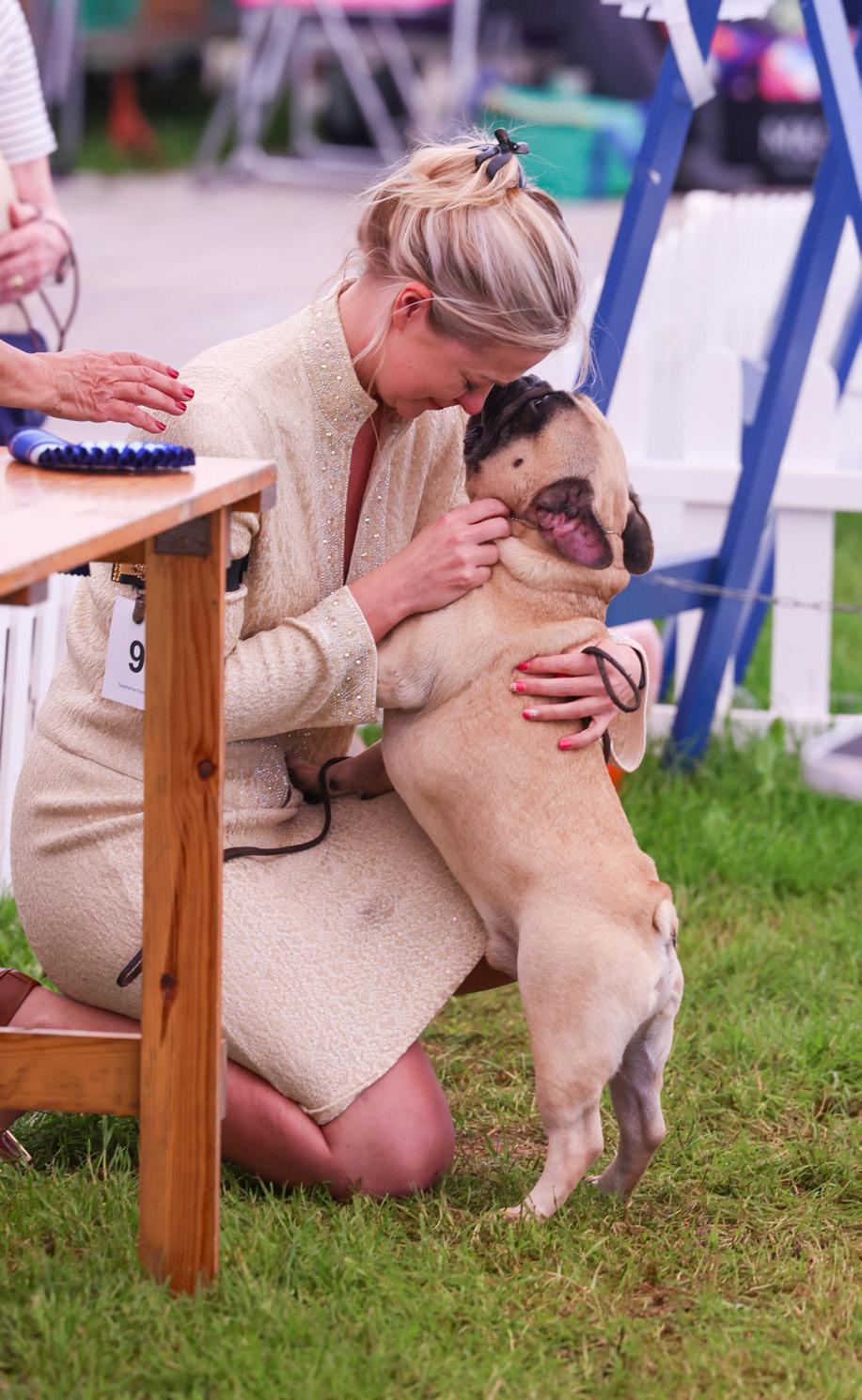

What are some of your proudest achievements to date in the world of dogs?
In the show ring, we have been lucky enough to make up five Champions now as a partnership. While Josh has won over 200 CCs with numerous champions, as a relatively new kennel, this is a very exciting milestone for us!
This year has been particularly exciting, making up two new Champions and winning seven CCs and five RCCs with our team of four dogs so far!
Away from pedigree dog showing, a year ago, Olivia ventured into the world of agility with “Chase,” Olijah Cut to the Chase, in a bid to prove how fun healthy French Bulldogs can be! Defying all the odds, in just over a year, Chase has flown through the levels, becoming the first Frenchie to ever reach Grade 7 (the highest grade in agility), and is now competing in Championship Agility against the fastest dogs in the country—not bad for a brachy breed! We are extremely proud of what he has achieved, raising awareness of healthy French Bulldogs and demonstrating that when bred and conditioned correctly, Frenchies

can be just as healthy as any other breed or crossbreed. Going one step further, after a break from the show ring while we were campaigning Chase’s brother, Ch Olijah Total Knockout “Togo,” Chase has just returned to showing and won his first CC and second RCC!
What do you wish all judges knew about your breed/ breeds before judging them?
We urge judges to first look at balance and movement—both are absolutely key for our breed. Frenchies are a difficult breed to judge because there is so much variety, and it’s easy to get hung up on one aspect. However, please take a step back when the dogs first enter your ring and assess their balance and movement. The standard asks for “free and flowing” movement—a dog that moves correctly is more than likely built correctly (and if it moves well, that surely ticks the first health box as well)! Afterward, you can assess the breed characteristics: their expression, cobby type, angles, topline, etc., but please prioritize balance.
Please also look at the dog’s breathing. As a judge, we should all be able to see whether a dog is panting normally because of the heat (take a look at the other rings—are the Dalmatians, Rottweilers, or Border Collies panting as well?) or if the Frenchie in your ring is panting because its airways are not open enough and it is struggling to cope. It goes without saying that any dog (Frenchie or otherwise) that is struggling to cope in a ring should not be awarded anything, and it might be worth having a kind word with the handler after the class.
We also think the word “cobby” in our standard is often misinterpreted by judges as short. “Cobby” comes from horses, and you would never describe a Cob as short. If you look carefully, the standard asks for a “cobby” body with a “relatively short, thick, strong, muscular loin.” The trend toward dogs that are too short is a huge health risk

for our breed—when judging, please ensure the dogs have enough room for their organs, noting that not all organs sit inside the ribcage and that there is enough room for females to carry a litter. Particularly for females that are “short,” this is highly undesirable; it can lead to major whelping issues and carries huge risks to the dog’s everyday life in both sexes. The key is in the wording: “cobby” with “relatively short” loin. To reiterate, balance must come first.
Please name three dogs within your breed that you wish you had owned/bred. These can be any dogs from any point in history.
We touched earlier on Ch Chelmbull Moon Pilot “Bentley,” not only a worthy champion in his own right but, in our opinion, this dog was easily the best producer in recent times—somehow always improving on the females he was put to and consistently producing tidy movers. When people reference a stud dog and say, “He doesn’t have a magic wand,” I couldn’t think of anything more untrue for this dog.
It would be hard not to also select Ch Chelmbull Rocket Man “Elton”—the UK’s record-breaking French Bulldog. Elton is our current breed record holder, taking the title from his father. He was also the first Frenchie to win BIS at an All Breeds Ch Show (at only eight months old!) and recently won the group at Crufts earlier this year. We are always honored to stand alongside this male in Open Dog; he is truly the dog of any breeder’s lifetime.
The third dog we have not actually been lucky enough to see in person, but from the videos and photos we have seen, this dog is more than worthy of being in our top three: Ch Fabelhaft Robobull Xcalibur “Arthur.” Owned by Patricia Hearst Shaw and James Dalton, handled by Jodi Longmire, and based in the US, this is a super little showman who is eye-catching from the moment he enters the ring—a true performer who could undoubtedly win anywhere in the world.

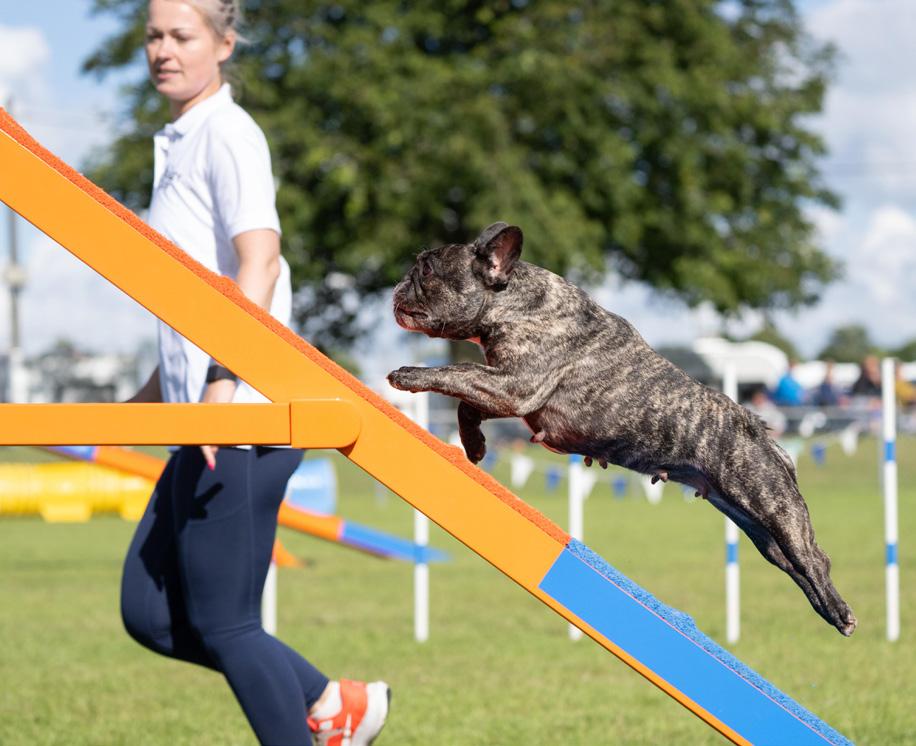


Do you judge? Please could you share some special judging appointments with our readers?
Josh gives CCs in a number of breeds and is currently working towards his first Championship Show Working Group. Olivia is relatively new to judging but has her first club show appointment next year for the Midland & Northern Counties French Bulldog Club, which is very exciting!
Is there a country where you believe the breed is particularly strong at the moment?
We are lucky enough to have traveled extensively to see French Bulldogs all over the world. We feel there is a significant amount of quality in the show ring in the UK, particularly in terms of health, where the UK is paving the way. We have a number of consistent and strong kennels here, with some smart breeders and quality youngsters coming up through the classes.
Outside the UK, we love the dogs we see being shown in the US and Russia. Compared to the UK,
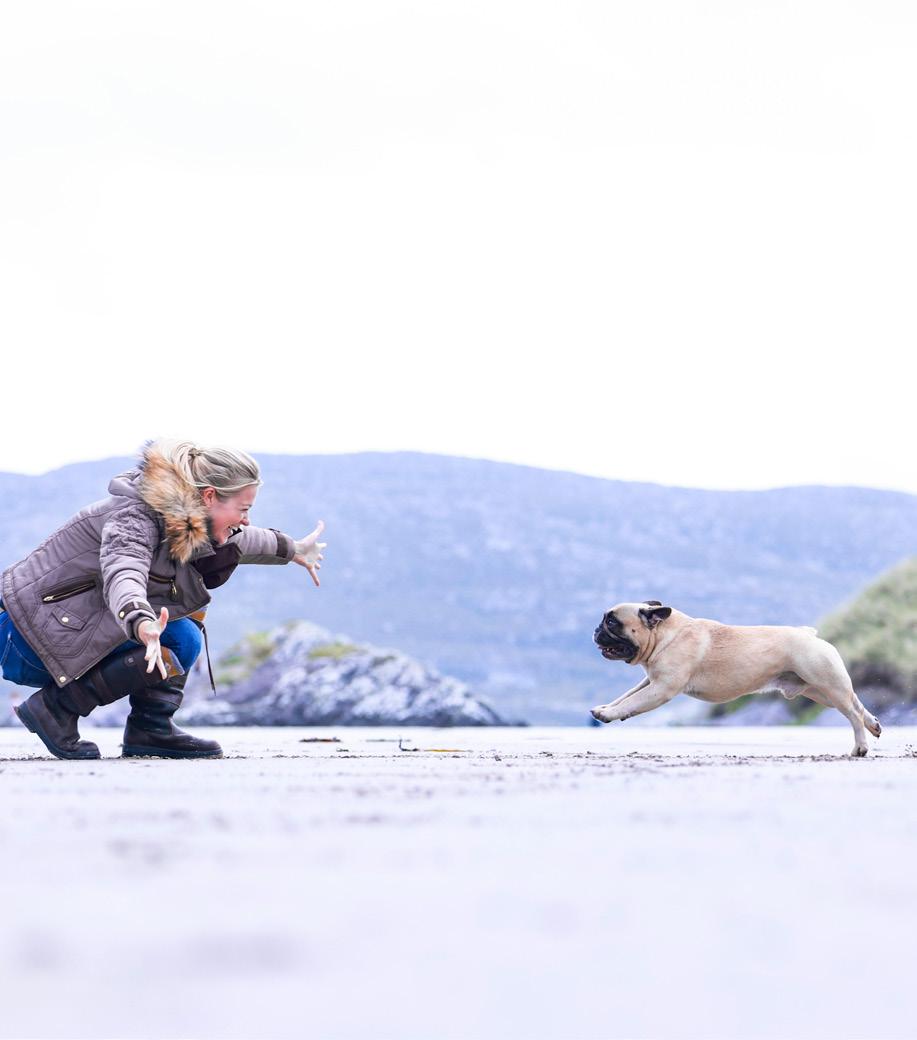
there appears to be a more consistent type being shown in these countries. In particular, James Dalton’s Fabelhaft Robobull kennel in the US and the late Revaz Khomazuridze’s and now Ekaterina Komissarova’s A’vigdors kennel in Russia are definitely two kennels that stand out.
What are your future goals/wishes in the sport of pedigree dogs?
First and foremost, we would love to see Frenchies viewed in a more favorable light, with puppy buyers going to kennels that are breeding for health and type, not just for money and/or color. For this to happen, we as brachy breeders must do everything we can to ensure we are selecting for health in our breeding combinations and leaving dogs that are not up to the grade out of our breeding programs.
From a personal perspective, we plan on continuing to breed in this manner and letting the dogs’ health and results speak for themselves. We are extremely excited about some of the combinations we have planned and the puppies that are coming soon—there is nothing better than the anticipation of bringing out a new puppy; 2025 will be a very exciting year!
Do you have any other hobbies outside of dog showing?
Is there time for anything else outside of dog showing?! All jokes aside, while showing dogs has taken over both our lives, we love to travel to new places and have amazing adventures. We normally use a new show abroad as the opportunity to do this! We have been to Split a few times, and what an epic road trip that was—one of our favorite shows in the world, and I’m sure it won’t be long before we are back again. We also love traveling to the US to watch dog shows, and of course, with Josh’s roots in Ireland, we can’t go long without a trip back to the Emerald Isle to chase a few Green Stars!

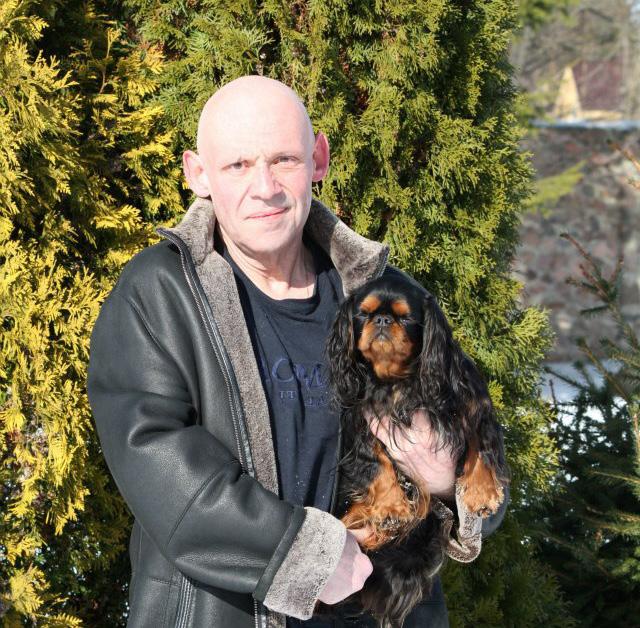
BRACHYCEPHALY BREEDS SPECIAL
Please tell our readers how you got involved with the world of pedigree dogs and dog showing/breeding.
Dog showing and breeding have been part of my life since childhood. I have been exhibiting dogs at various shows for more than thirty years. In Saint Petersburg, in 1997, I opened a specialized training gym where I prepared dogs for shows using my own methods. It was the first fitness room for dogs in Europe. Since 2000, I have been engaged in breeding Griffons under the guidance of my mentor, Natalia Sedikh. During those years, we achieved particularly significant results with Petite Brabançons.
In 2012, at the European Dog Show in Bucharest, I saw a King Charles Spaniel from Canada named Denim Storm Warning. With this dog, my love for that breed was born. The following year, I began breeding King Charles Spaniels.
“Ot Nevskogo Hobbita” is the name of the kennel in Saint Petersburg where I worked for twenty years. For the last two years, I have lived in Israel. Here, I registered another kennel, “Ot Nevskogo Hobbita Zion,” and I continue my King Charles breeding.
Where did you get your foundation dogs, and what breeders (if any) do you work with today?
A: I really admire King Charles Spaniels that were born in Great Britain at the kennel “Maibee.” In my view, the type of dog bred by Shealagh Waters is the closest to the standard. That’s why I began my breeding program with dogs that retain bloodlines from that kennel. Unfortunately, Mrs. Waters passed away in 2013, so I have to use nonfirst-generation dogs. I found them in Germany and England.
I also appreciate the old American kennel “Royalist.” I discovered a blood combination from “Maibee” and “Royalist” in the kennel “Clussexx.”
Today, I collaborate with remarkable breeders from the United Kingdom, such as Rita Lloyd (“Cwmhaf”), Sandra Boyl (“Ellinghurst”), and Caroline Robinson (“Baldragon”), as well as renowned judges and breeders from the USA, Douglas Johnson and Jamie Hubbard (“Clussexx”). Some of my dogs live with them, and their dogs live with me. I am very proud of this friendship.
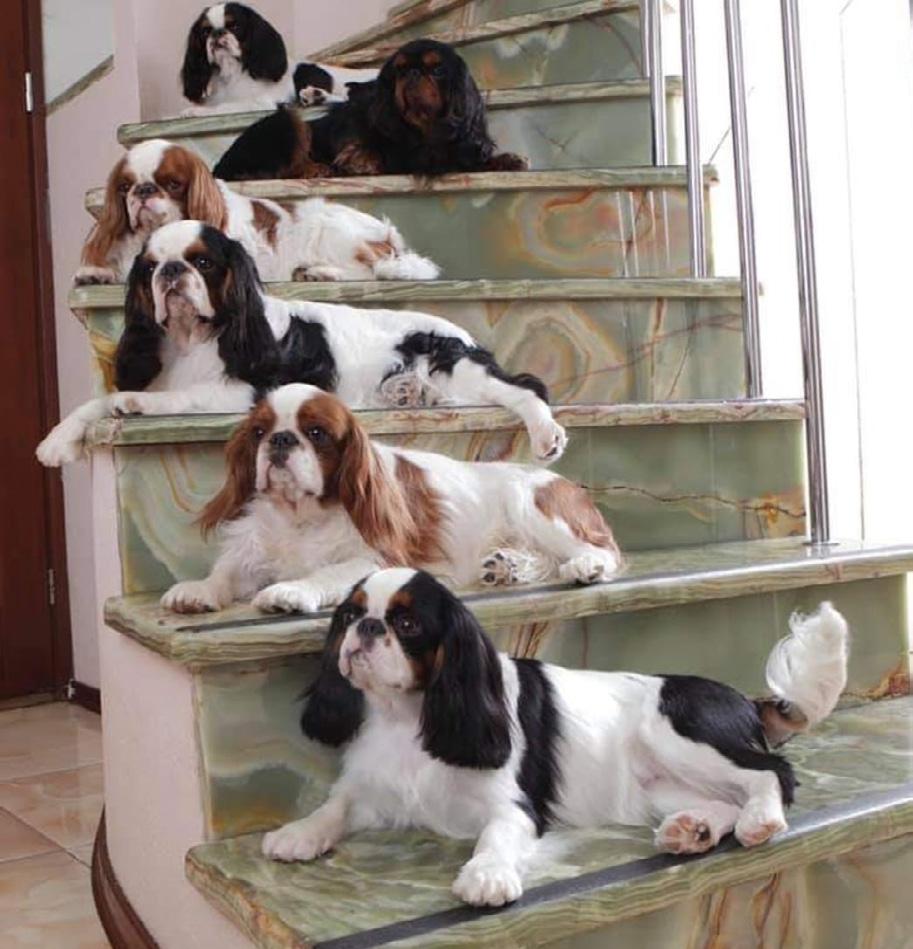


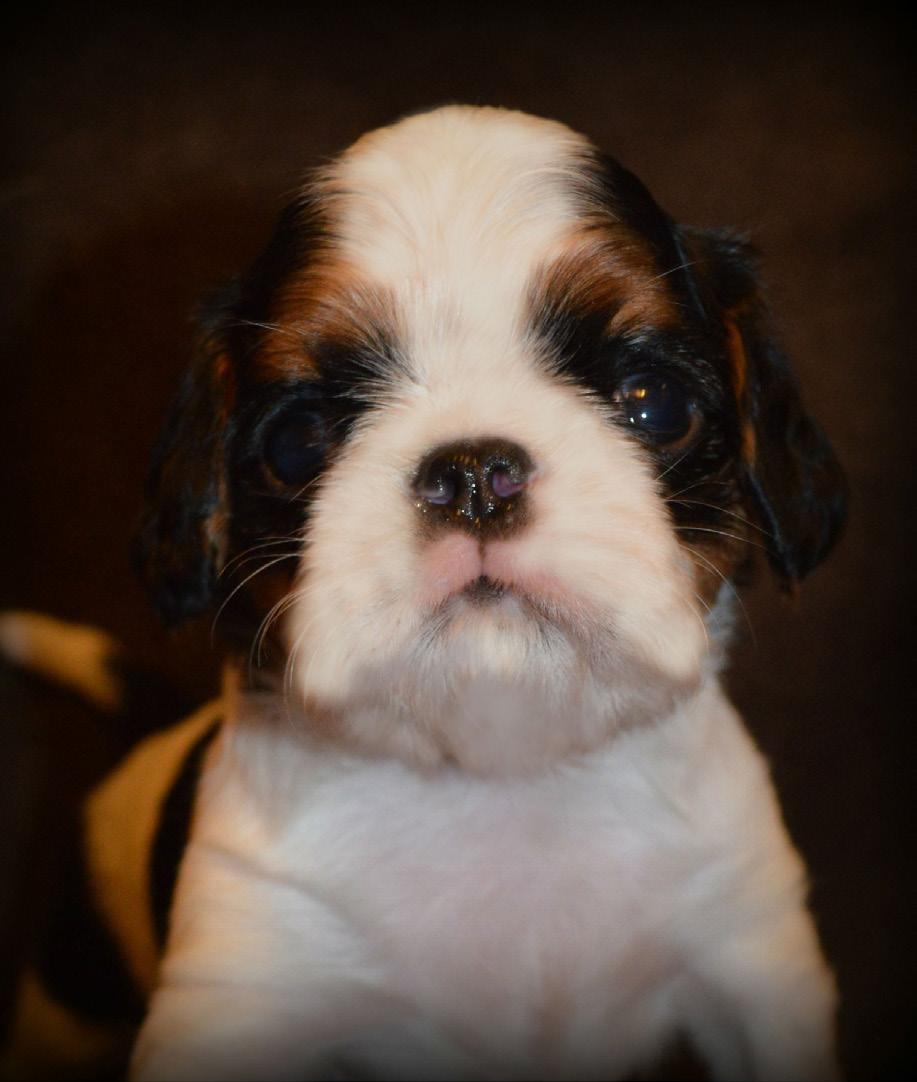
What breed hallmarks/key characteristics do you aspire to produce in each new generation of puppies?
The King Charles Spaniel is a breed with a very specific head shape, as described in the standard. Thus, my main focus has been on producing beautiful, thoroughbred heads. The body is also important—a well-built dog always stands out in the ring. And, of course, temperament is crucial, as it allows the dog to showcase itself and win.
How have your breed/breeds changed since you first started showing/breeding? This can be in quality and/or presentation.
During my time working with the breed, the quality of my dogs has improved significantly. We successfully exhibit at major European and World Shows. The fact that I am a professional handler certainly helps in preparing dogs for the show.
What health tests do you carry out before breeding a litter?
I conduct heart checks, eye checks, and patellar luxation tests.
What are some of your proudest achievements to date in the world of dogs?
There are eighteen champions of Europe and the World, including juniors, in my kennel. Dogs of my breeding have been twice champions at Westminster and are recognized as top toy dogs in America. Moreover, my dogs have received the title of “Dog of the Year” in Russia, Lithuania, Israel, Poland, France, the USA, Thailand, and “Top Producer of the Year” in the UK.
What do you wish all judges knew about your breed/ breeds before judging them?
The King Charles Spaniel is a well-known breed in England and the United States but is less recognized in Europe. I wish more judges would

learn everything about it, avoid confusing it with other breeds, and evaluate the dogs fairly.
Please name three dogs within your breed that you wish you had owned/bred. These can be any dogs from any point in history.
First, Loujon Backroad Adventure. He was born in America and was a legendary show champion. Second, Maibee Orlando. This dog had a wonderful journey—he was born in England, had a fabulous career in America, and then returned to England. Lastly, Clussexx Paddington of Flivverway. This American dog from the kennel “Clussexx” lived at my home for two years, thanks to my good friends Douglas Johnson and Jamie Hubbard, and inspired me to breed black and tan spaniels.
Do you judge? Could you please share some special judging appointments with our readers?
Everyone who brings a dog into the ring and everyone who watches the show from the sidelines sees it differently than the judge. It is important to understand that distinction.
Is there a country where you believe the breed is particularly strong at the moment?
In my opinion, it is traditionally strong in England, as the homeland of the breed, and in America.
What are your future goals/wishes in the sport of pedigree dogs?
I would like to have as many dogs as possible that can bring happiness to their owners and demonstrate through their victories that we are on the right path in breeding.
Do you have any other hobbies outside of dog showing?
The dog proudly bearing the name of the British King is inseparably linked to more than four hundred years of history of the royal houses of England. This is fascinating to me; I enjoy studying the history of England and researching and collecting everything connected with King Charles Spaniels.
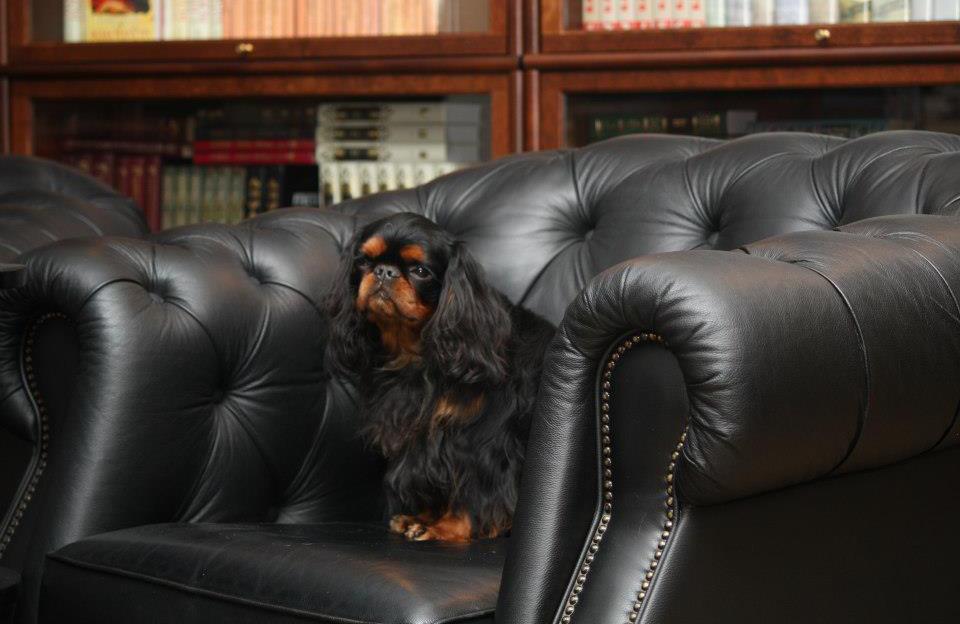

BRACHYCEPHALY BREEDS SPECIAL
Please tell our readers how you got involved with the world of pedigree dogs and dog showing/ breeding. (Please mention your kennel name, its meaning, and the breeds you are involved with.)
Our family has always had German Shepherds and Jack Russell Terriers as pets. At 18, while attending college and completing an HND in Animal Management, I bought my first Pekingese and began showing him at open shows, followed by Championship shows. Our kennel name is Moonwhispers, due to my partner (Henry Stanley)’s interest in stargazing. We have Pekingese and Miniature Poodles, but the latter have recently taken a back seat and remain purely as pets.
Where did you get your foundation dog, and what breeders (if any) do you work with today?
My first Pekingese came from a local paper and was bred by the Secretary of the North of Ireland Pekingese Club at the time, John Campbell –Druckendult Fu Manchu “Jack,” who later became the first Irish Champion of the kennel. We never bred with him, but through the recommendation
of a dear friend, we were put in touch with Winnie Mee of the world-famous Pekehuis Pekingese. For almost 20 years, we have bred continually with Winnie’s, John Shaw’s, and Jordan Ransome’s (the latter two being Winnie’s partners in the kennel) Pekehuis lines, along with the Cisfran (John Shaw & Maria Francis) and Akarana (Michael Hill) kennels.
What breed hallmarks/key characteristics do you aspire to produce in each new generation of puppies?
I love to have a small, pretty type with refined open features. For me, the large eyes really make the expression a finished picture. I prefer the head to be broad and shallow, which unfortunately seems to be changing to square or even appear round in some cases now. My pet hate is a weak chin, as it totally changes the expression.
How have your breed/breeds changed since you first started showing/breeding? This can be in quality and/or presentation.
A: I think with the Poodles, it is mostly presentation that has evolved due to advancements in products aiding coat condition, and the equipment used to sculpt the coat has improved with advancements in scissor types, such as the introduction of chunkers and blenders, allowing for an immaculate finish.
In Pekingese, looking at older photos, it is quite clear that the coat has increased considerably due to trends, which resulted in the dogs losing body shape and hindering movement in many cases. They also seem to have extremely short legs, leading to unsoundness. Thankfully, in recent years, both breeds have been worked on, resulting in a more moderate coat and the dogs being able to move more freely. I do feel that now it appears to be a lot harder to establish a distinct type compared to the many kennels of years gone by, perhaps due to a smaller gene pool with which to work.


What health tests do you carry out before breeding a litter?
At present, there are no specific tests allocated to Pekingese; however, we have decided, for our peace of mind, to test all breeding dogs for BOAS to aim to produce the best possible type while still maintaining health.
What are some of your proudest achievements to date in the world of dogs?
In showing, our proudest achievement was campaigning English and Irish Champion Pekehuis Morgana “Megan” to her titles. She is that one-ina-lifetime dog who is exactly what we want in the breed, and she is also a sweetheart to live with. The English title is the one everyone wants, and it is even more special because, before her, we had
a homebred boy, Irish International Champion Moonwhispers Intrigue Fate “Brad,” who came so close, winning 2 CCs and 1 RCC but never got that elusive third. We are also proud of winning multiple championship groups with Irish and International Champions Pekehuis Intrigue, Moonwhispers Intrigue Fate, and Pekehuis Midnight Magic. The latter, “Scooby,” also qualified for the Champion of Champions contest and made the final 16 of the Show Dog of the Year.
In terms of judging for myself, it would be judging the breed next year for CCs for the first time, as well as judging the Group 9 breeds across Europe and breed specialties in Texas and St. Petersburg. I am also excited to be invited to judge at next year’s European Dog Show in the Czech Republic. Henry’s highlights would be awarding CCs in Pekingese in 2021, awarding Best in Show at championship shows under FCI, judging in St. Petersburg, and Helsinki Winners, and aiming for all-round status.
What do you wish all judges knew about your breed/breeds before judging them?
I would like judges to look beyond the huge coats that some appear attracted to. I feel some are putting coat before construction, which has led the breed to become overdone in many features it once wasn’t. They should be small; size is also increasing. I would also like judges to avoid saying, “just do a small circle,” which sometimes involves people barely moving the dog. In today’s climate regarding animal activists, this only gives those already against the breed more ammunition to claim they can’t walk.
Please name three dogs within your breed that you wished you had owned/bred. These can be any dogs in any point of history.
For obvious reasons, I have not mentioned Pekehuis dogs, because it’s clear that we love the type since we have based our whole kennel on the line.

It’s no secret for anyone who knows me that my favourite dog I have seen in person was English and American Champion Akarana Aspirations ‘’Faith’’, bred by Michael Hill and owned in partnership with John Shaw, Winnie Mee and Maria Francis. She to me, was gorgeous, and everything I love. A lovely size, totally solid to go over and pick up, a beautiful light red with just the right amount of coat and fringing, a stunning broad head and expression with lustrous large eyes. She was also part of the reason why I loved English Irish Champion Pekehuis Morgana before she came to us.
From photos, I loved the look of the dogs produced by Antonia Horn, Belknap Pekingese. She appeared to be able to breed a type which carried through, regardless of colour, which in my opinion is some feat considering it can be difficult to produce the quality of the fawns, reds etc in rare colours like white, black and tan, particolour etc. I particularly love the overall look and type of English Champion Belknap Blush, a half-masked girl whose eyes immediately stand out against her glamourous fawn coat. She looked to be similar in type to Irish Champion Moonwhispers Steel Magnolia ‘’Dolly’’.
Another I love the look of from old photographs is Eng Champion Shiarita Hello Dolly, a beautifulheaded fawn with large lustrous eyes who had just the right amount of coat and fringing and had the overall look of quality. Again, from a famous kennel that quite clearly produced a distinctive type.
Other kennels that have produced some beautiful dogs and very distinctive of their kennels include Jidoran, Yakee, Morningstar (USA), Déjà vu (USA) and ShihTsin (NZ).
Do you judge? Please could you share some special judging appointments with our readers.
I am qualified to judge all group 9 (Toy and companion dogs) under FCI rules, as well as
Pomeranian. Some of the special judging appointments I have loved include judging the UK club show specialities, The Pekingese Club of Texas speciality in Dallas in 2022, and the breeds and Group this year at Tampere International and Nordic shows which was so well run, with a great panel of judges. Judging the toy breed specialities are always very special and you can judge some amazing examples of the breeds.
Is there a country where you believe the breed is particularly strong at the moment?
I think England still holds the place for the best quality dogs that appeal the most to me. Through their exports, it has been obvious who some of the international kennels I have judged have imported dogs from. Unfortunately, a lot of the kennels have either wound up showing, or retired from breeding for other reasons, but there are still kennels there that are producing a distinctive type for their kennels.
What are your future goals/wishes in the sport of pedigree dogs?
My goal is to continue to produce dogs that people know the lines of and would love to create a type that people see and automatically think, ‘’that’s a Moonwhispers’’. With current undertakings across Europe concerning the banning of breeds, including a drive to prevent breeding brachycephalic dogs, I am concerned my goal may not be possible, but we live in hope!
Do you have any other hobbies outside of dog showing?
Apart from showing, I love gardening and trekking through forest parks. I also love to paint using acrylic and occasionally when I get time, will paint dog portraits based on dogs I have seen I liked but not on a professional level (I haven’t the patience!).


This year, Slovenia is proudly hosting the European Dog Show in Celje, one of the country’s largest and most vibrant cities. Alongside the European Dog Show, Celje will also be featuring numerous specialties and all-breed shows. If you find yourself with some spare time amidst the busy event schedules, this guide will help you explore the city’s best attractions, indulge in local cuisine, and make the most of your visit. Whether you’re here for the dog shows or simply looking to enjoy the charm of Celje, read on to discover the perfect spots to visit, see, and savor in October 2024.

1. Weather Preparation: October in Celje is characterized by cool, crisp air with temperatures ranging between 10°C and 18°C (50°F to 64°F). Pack layers, including a warm jacket for the evenings, and comfortable walking shoes for exploring the city’s cobblestone streets.
2. Currency and Language: Slovenia uses the Euro (€), and Slovenian is the official language. English is commonly spoken in tourist areas, but learning a few basic Slovenian phrases can enhance your experience.
3. Local Transportation: Celje is well-connected by public transport, including buses and trains. For exploring the city and nearby attractions, consider renting a bike or using local taxis.
4. Accommodation: Book your stay in advance, as October can be a busy month with various events and festivals. Options range from charming boutique hotels to comfortable guesthouses.
5. Health and Safety: Slovenia is generally safe for travelers. However, it’s always wise to have travel insurance and keep an eye on local health guidelines.



1. Celje Old Town and Castle
• Celje Castle: Dominating the skyline, Celje Castle offers breathtaking views of the surrounding area. Explore its well-preserved medieval walls, towers, and exhibitions detailing the castle’s history. October’s cooler temperatures and autumnal colors make it an ideal time for a picturesque walk around the castle grounds.
• Old Town: Wander through the charming old town, with its narrow streets, historic buildings, and quaint shops. Don’t miss the Celje Regional Museum, which provides fascinating insights into the city’s rich history.
A lovely spot for a leisurely stroll, Celje City Park is perfect for enjoying the fall foliage. The park features beautifully landscaped gardens, walking paths, and a serene atmosphere ideal for a relaxing afternoon.
3. Laško Brewery
Located just a short drive from Celje, Laško Brewery is a must-visit for beer enthusiasts. Take a tour of the brewery, learn about the brewing process, and enjoy tastings of Laško’s renowned beers. October often features special seasonal brews, making it an excellent time for a visit.
4. Savinja River
The Savinja River runs through Celje, providing picturesque views and recreational opportunities. Consider taking a riverbank walk or renting a canoe to enjoy the scenic beauty of the river and its surroundings.

1. Oktoberfest Celebrations
In October, Celje hosts its own Oktoberfest celebrations, embracing Bavarian culture with local twists. Enjoy traditional German beer, hearty food, and live music. The festival creates a festive atmosphere, perfect for immersing yourself in local traditions and enjoying the vibrant community spirit.
2. Celje Theatre
Check out the schedule at the Celje Theatre, which often features a variety of performances, including drama, music, and dance. Attending a local performance provides a wonderful glimpse into Slovenian culture and arts.
3. Local Markets
Visit the Celje Farmers’ Market to experience local Slovenian produce and crafts. October markets often feature seasonal fruits, vegetables, and traditional foods. It’s a great opportunity to sample local delicacies and purchase unique souvenirs.

1. Prekmurska Gibanica
A delicious Slovenian dessert, Prekmurska Gibanica is a layered pastry made with poppy seeds, apples, walnuts, and cheese. This sweet treat is a local specialty and perfect for enjoying with a cup of coffee or tea.
2. Potica
Potica is a traditional Slovenian nut roll, typically filled with walnuts, honey, and spices. It’s a popular dish during festive seasons and a great way to indulge in Slovenian flavors.
3. Kranjska Klobasa
This traditional Slovenian sausage, known for its distinctive flavor and quality, is often served with mustard and bread. It’s a staple of Slovenian cuisine and a must-try for meat lovers.
4. Local Wines
Slovenia is known for its excellent wines, particularly those from the nearby wine regions. October is harvest season, making it an ideal time to sample local varieties. Visit local wine bars or restaurants to explore Slovenian wines and perhaps even take part in a wine tasting session.
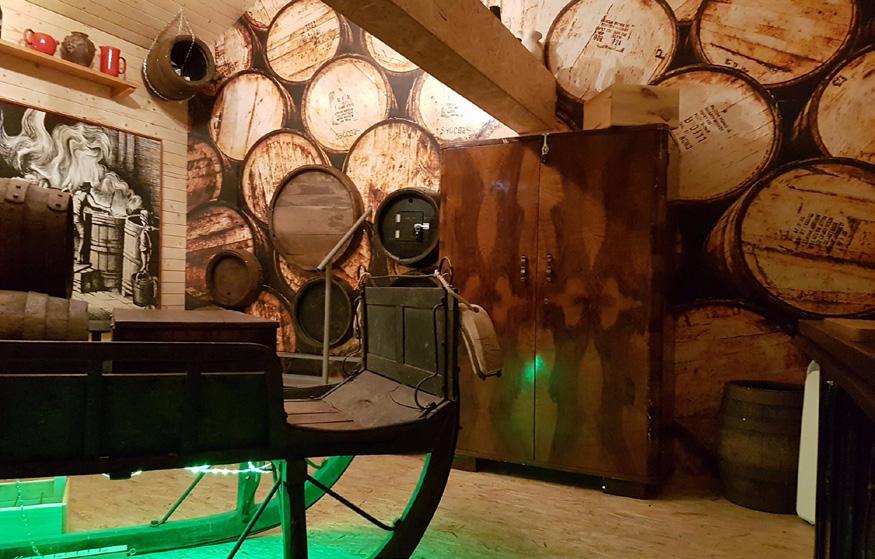

1. Ljubljana
Slovenia’s capital, Ljubljana, is just a short drive from Celje. Explore its picturesque old town, visit Ljubljana Castle, and enjoy the vibrant café culture. October is a wonderful time to experience Ljubljana’s charm, with fewer tourists and pleasant weather.
2. Lake Bled
A day trip to Lake Bled is highly recommended. Known for its stunning scenery and picturesque island, Lake Bled offers opportunities for boating, hiking, and exploring Bled Castle. The autumn colors add a magical touch to this already beautiful destination.
3. Logar Valley
For nature enthusiasts, Logar Valley is a must-visit. This stunning alpine valley is perfect for hiking, with trails offering spectacular views of waterfalls, meadows, and rugged peaks. October’s crisp air and fall foliage enhance the natural beauty of the valley.
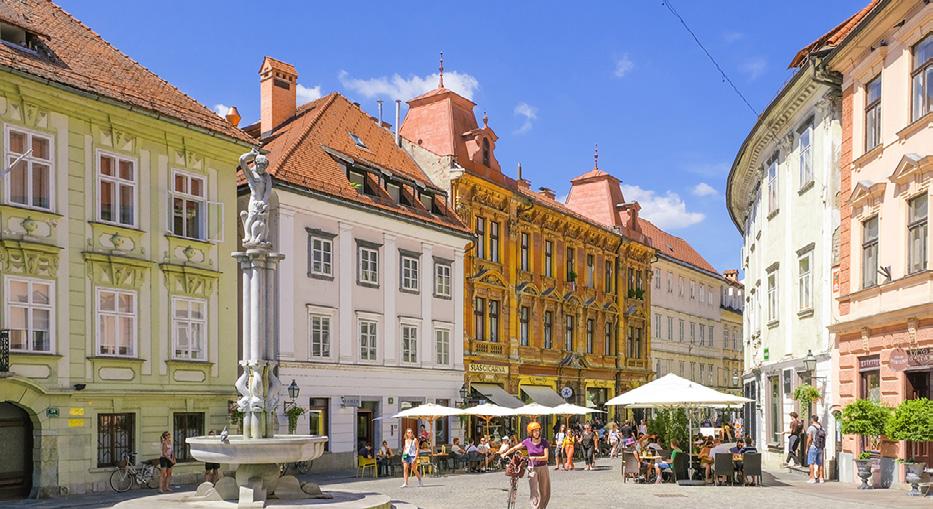

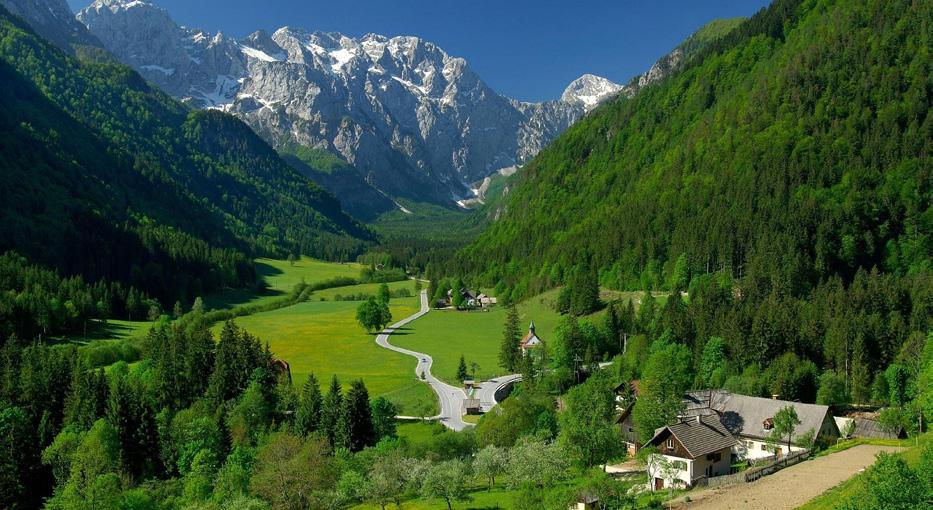
Conclusion
October is a fantastic time to visit Celje, Slovenia. With its rich history, vibrant cultural events, and delicious local cuisine, the city offers a memorable travel experience. Whether you’re attending the European Dog Show or simply exploring the charm of Celje, this guide ensures you’ll have an unforgettable autumn getaway. So pack your bags, prepare for a charming adventure, and immerse yourself in the wonders of Celje this October.

by Jovana Danilovic Rangel
At the end of July, Split welcomed a stunning array of dogs from across Europe, marking another successful year for the city’s beloved dog shows. Over four days, from July 25th to 28th, the event featured four all-breed shows, each attracting more than 800 entries per day.
This year’s festivities included a variety of specialized competitions, such as the Specialty for Dalmatians, a Club Show for English Bulldogs, INTERRA—the largest Terrier show in Europe, as well as Specialties for Schnauzers and Group IX breeds. The shows were held at the new and beautiful Dalmatinec showground, located on a football field that provided a perfect backdrop for the events.
A panel of 16 esteemed judges from around the world enjoyed the renowned night shows, adding an international flair to the competition.
As the dust settled on an exhilarating week, the results from the shows will be featured in the following pages. The Split dog shows continue to be a highlight of the canine calendar, drawing competitors and enthusiasts alike to share in the joy of purebred dogs.
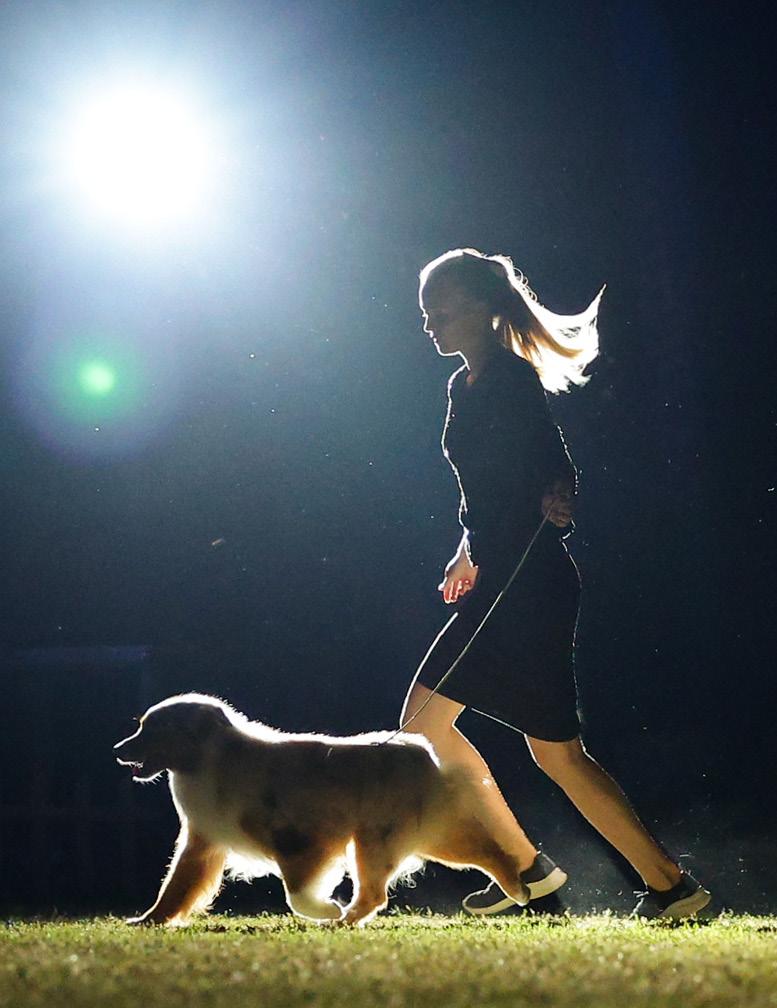




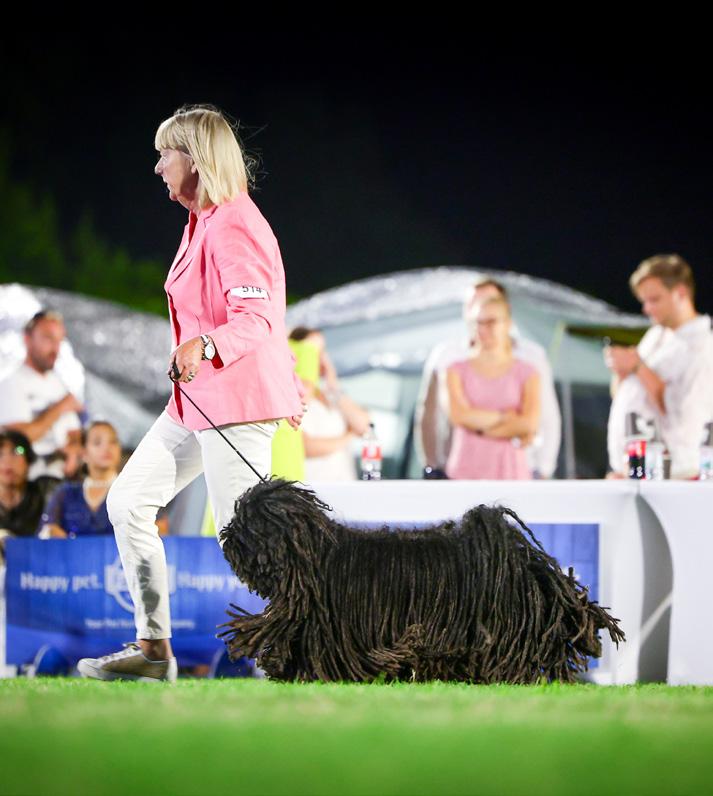


GROUP 1 WINNER
LEGACY’S BOOM BOOM BOOM
MINIATURE AMERICAN SHEPHERD
JUDGE: NIKOLA SMOLIĆ (HR)
GROUP 2 WINNER
ST. HONORE SKIP TO MY LOU TANI KAZARI
AFFENPINSCHER
JUDGE: HANS VAN DEN BERG (NL)
GROUP 3 WINNER
NORDLICHT VON DEN SCHÖNEN BERGEN
LAKELAND TERRIER
JUDGE: PAUL LAWLESS (IE)
GROUP 4 WINNER
MEGLINE CANDY QUEEN
DACHSHUND STANDARD WIRE-HAIRED
JUDGE: BRUNO NODALLI (IT)
GROUP 5 WINNER
LILONGWE LIGHTS KITTEN JAZZ
BASENJI
JUDGE: IGOR SELIMOVIĆ (HR)

GROUP 6 WINNER
FANTA’S BRAND MAKES PEOPLE TALK
BEAGLE
JUDGE: CHIE YAMAKADO (JP)
GROUP 7 WINNER
RAISTAR AFFAIR TO REMEMBER
IRISH RED SETTER
JUDGE: ALBERTO CUCCILLATO (IT)
GROUP 8 WINNER
ADVENTURER’S DORIAN GRAY BY ALEX
CAO DE AGUA PORTUGUES
JUDGE: JEAN LAWLESS (IE)
GROUP 9 WINNER
TI LA SHU PS I LOVE YOU
TIBETAN TERRIER
JUDGE: HELEN TONKSON (EE)
GROUP 10 WINNER
TOUTÊMES COSMOPOLITAN
PICCOLO LEVRIERO ITALIANO
JUDGE: SAIJA JUUTILAINEN (FI)
LEGACY’S BOOM BOOM BOOM
MINIATURE AMERICAN SHEPHERD
ADVENTURER’S DORIAN GRAY BY ALEX
CAO DE AGUA PORTUGUES
MEGLINE CANDY QUEEN
DACHSHUND STANDARD WIRE-HAIRED


6: FANTA’S BRAND MAKES PEOPLE TALK (BEAGLE)
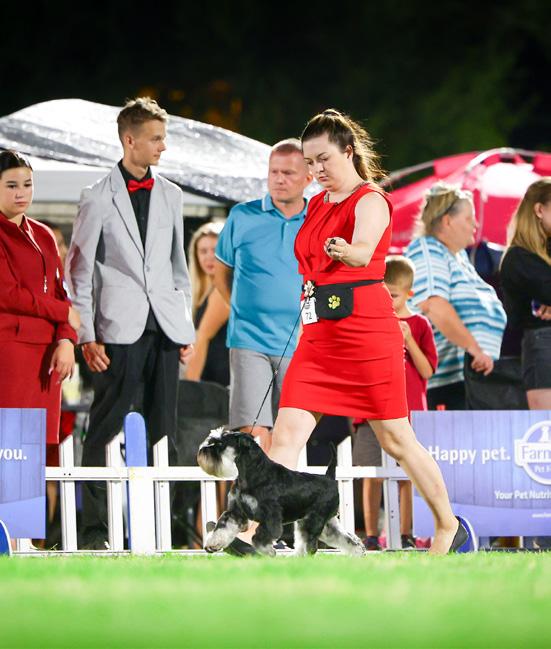
RAISTAR AFFAIR TO REMEMBER (IRISH RED SETTER)
ADVENTURER’S DORIAN GRAY BY ALEX (CAO DE AGUA PORTUGUES)
TI LA SHU PS I LOVE YOU (TIBETAN TERRIER)
TOUTÊMES COSMOPOLITAN (PICCOLO LEVRIERO ITALIANO)


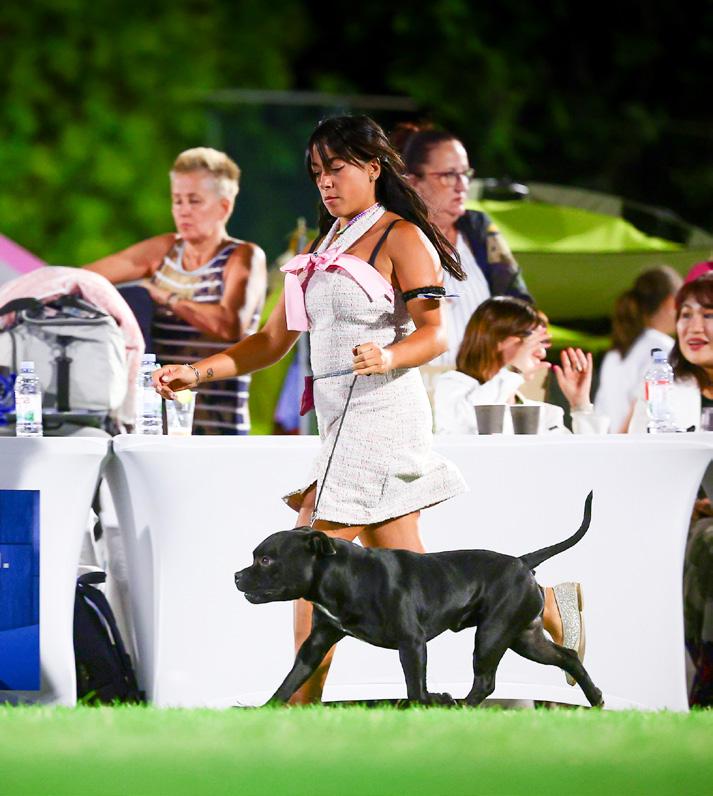



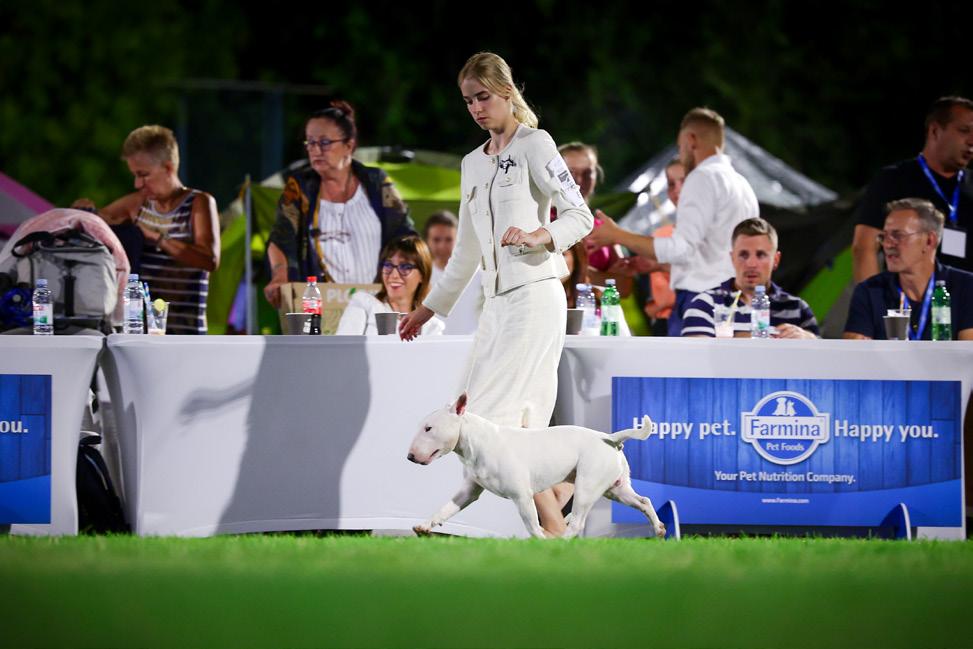
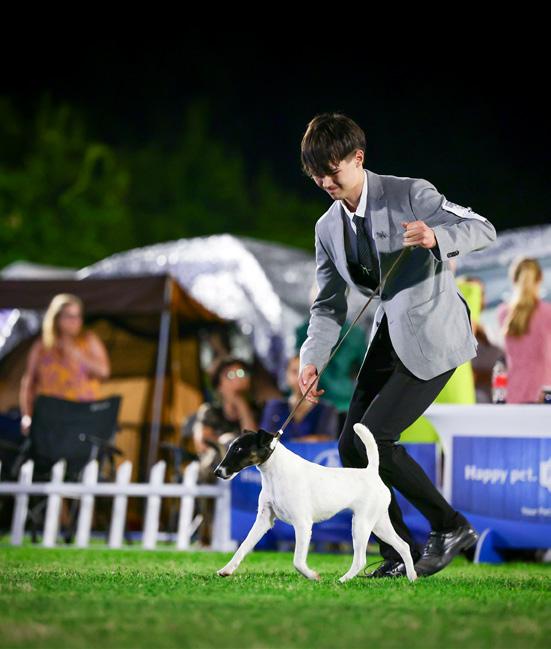
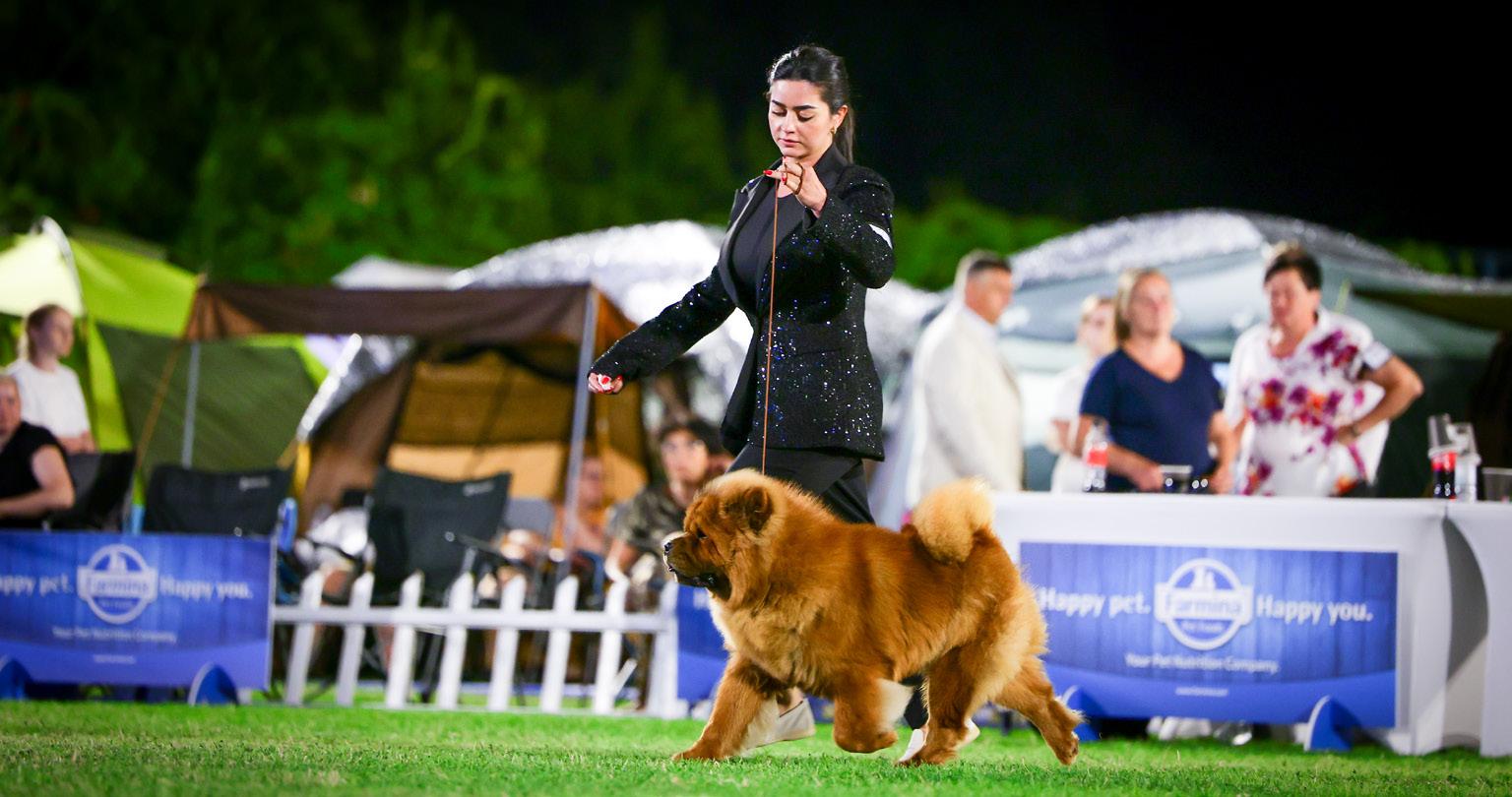

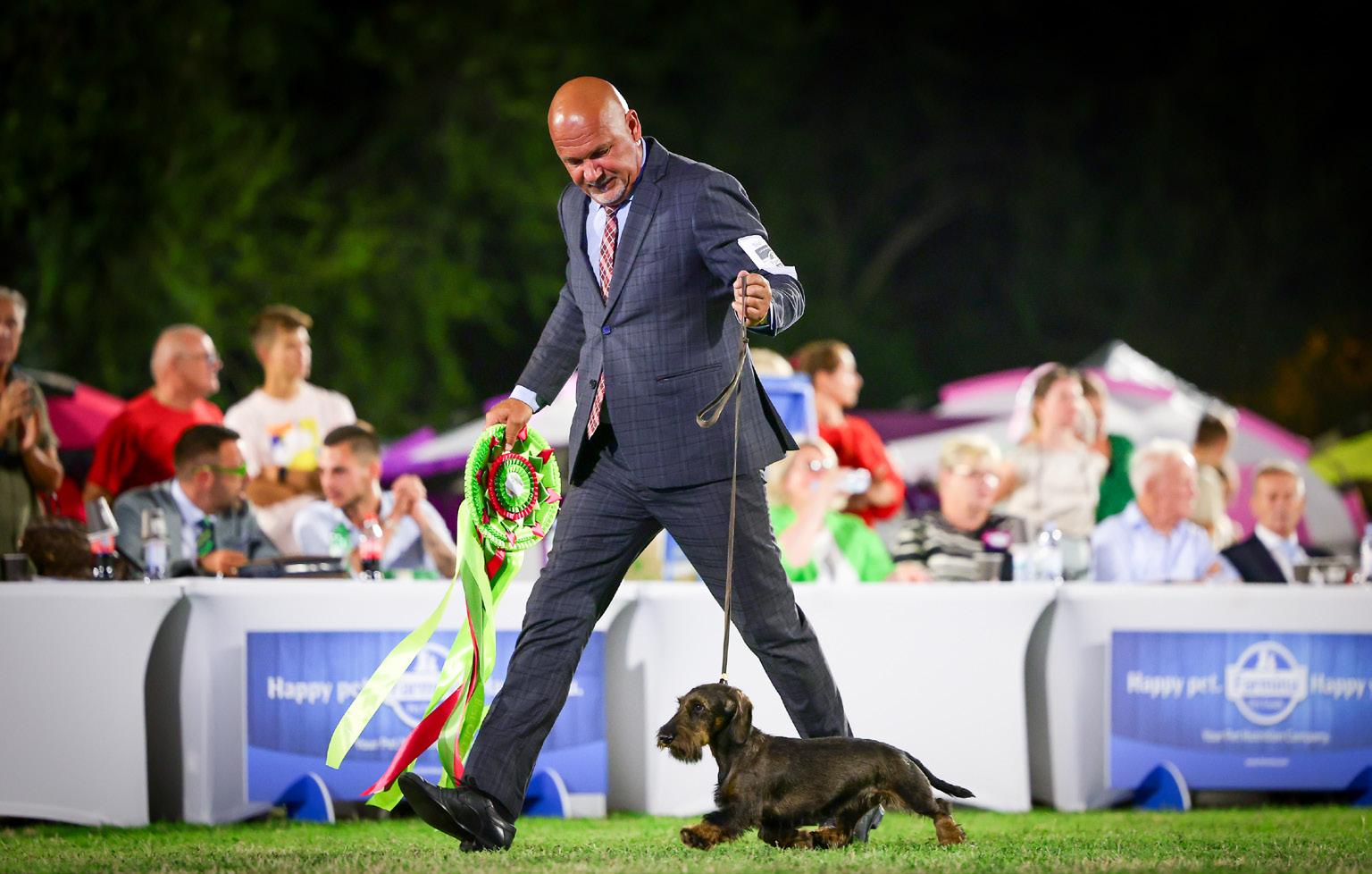





GROUP 1 WINNER
LUNAR LAKES PRIMADONNA
COLLIE ROUGH
JUDGE: PAUL LAWLESS (IE)
GROUP 2 WINNER
WHY NOT BABYNOU BULL BULLDOG
JUDGE: BRUNO NODALLI (IT)
GROUP 3 WINNER
PAPERMAN ARTEON
WELSH TERRIER
JUDGE: JORGE NALLEM (UY)
GROUP 4 WINNER
MEGLINE CANDY QUEEN
DACHSHUND STANDARD WIRE-HAIRED
JUDGE: IGOR SELIMOVIĆ (HR)
GROUP 5 WINNER
LILONGWE LIGHTS KITTEN JAZZ
BASENJI
JUDGE: CHIE YAMAKADO (JP)

GROUP 6 WINNER
LEGOLAND FACE TO FACE
PETIT BASSET GRIFFON VENDEEN
JUDGE: ALBERTO CUCCILLATO (IT)
GROUP 7 WINNER
FORESTER’S IGNOTUS PEVERELL OF DARKMOOR
GORDON SETTER
JUDGE: HELEN TONKSON (EE)
GROUP 8 WINNER
MAJESTIC WINNER RONALDO LABRADOR RETRIEVER
JUDGE: NEMANJA JOVANOVIĆ (RS)
GROUP 9 WINNER
NIZHEGORODSKOE OCHAROVANIE YOUNG LUCKY STAR
GRIFFON BRUXELLOIS
JUDGE: BORIS CHAPIRO (FR)
GROUP 10 WINNER
TOUTÊMES COSMOPOLITAN
PICCOLO LEVRIERO ITALIANO
JUDGE: JEAN LAWLESS (IE)
MAJESTIC WINNER RONALDO LABRADOR RETRIEVER
LEGOLAND FACE TO FACE
PETIT BASSET GRIFFON VENDEEN
NIZHEGORODSKOE OCHAROVANIE
YOUNG LUCKY STAR
GRIFFON BRUXELLOIS





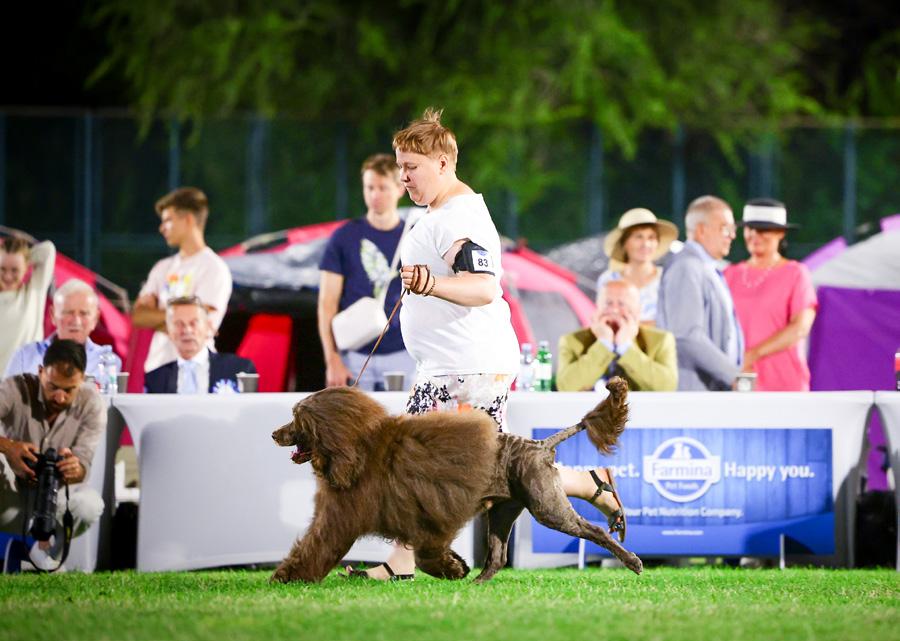

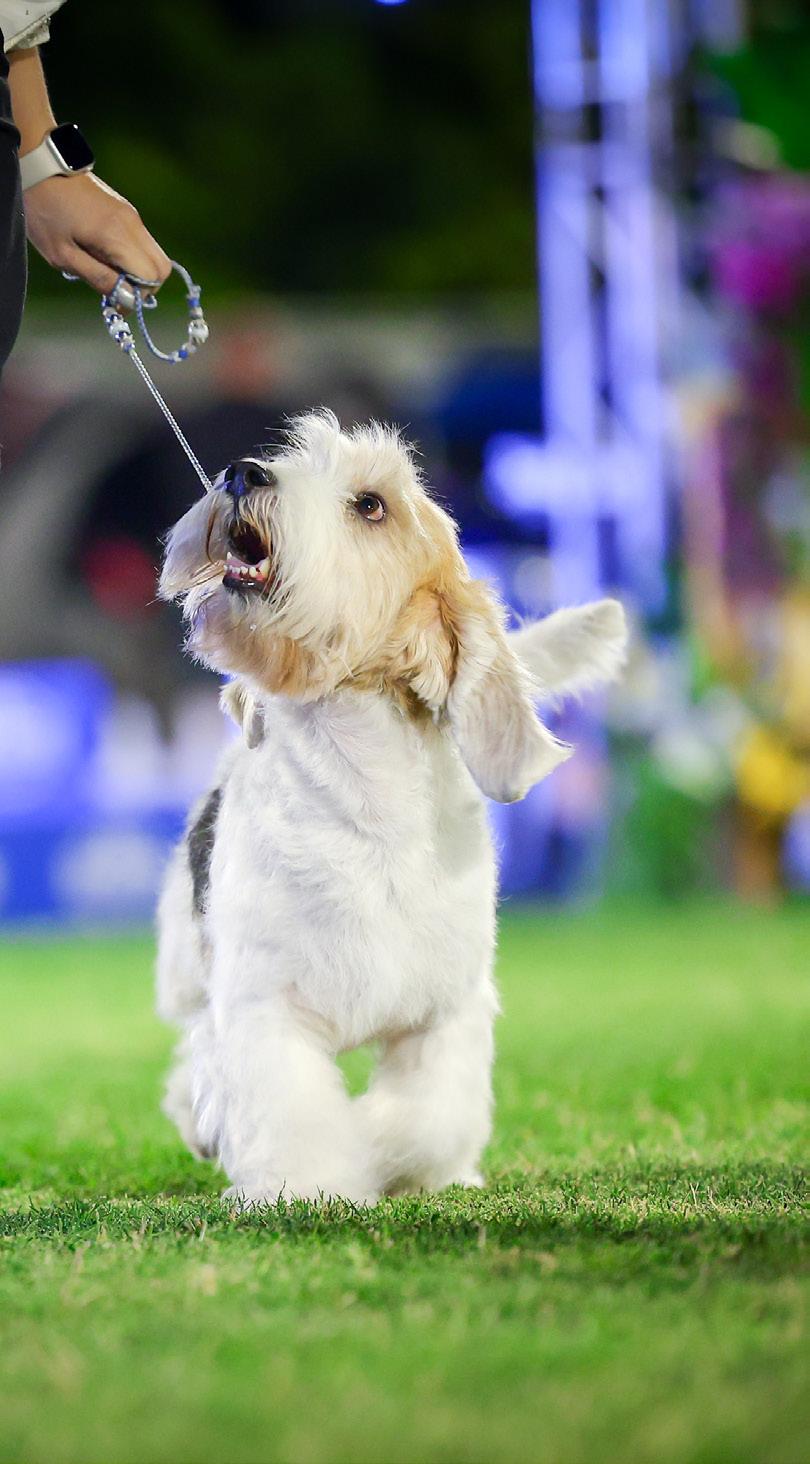







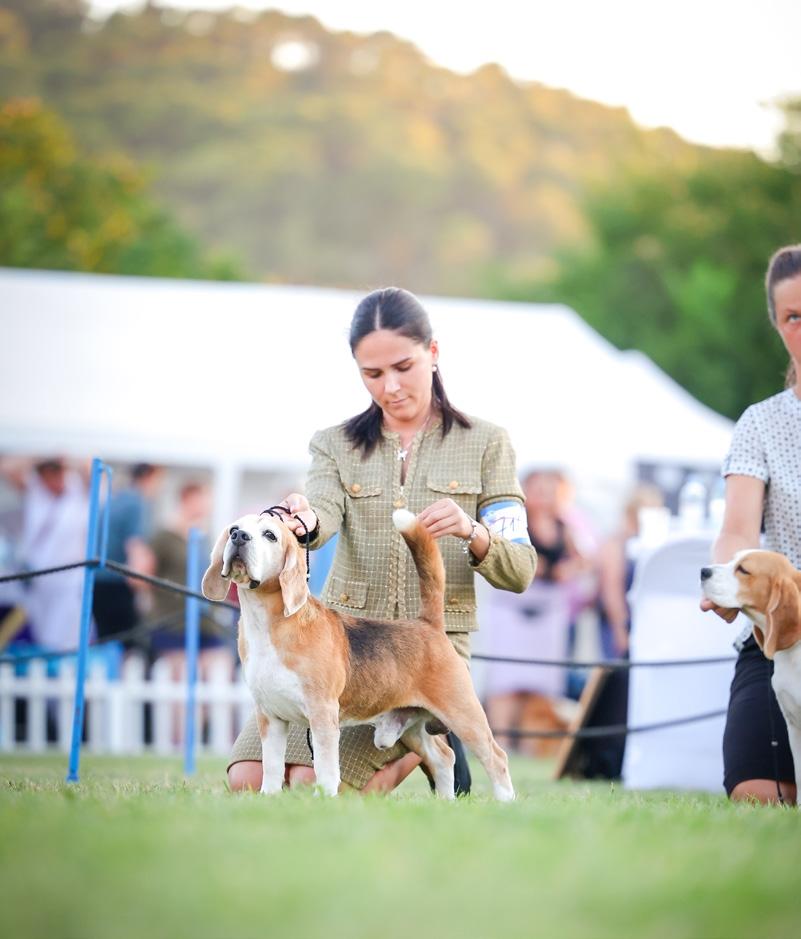
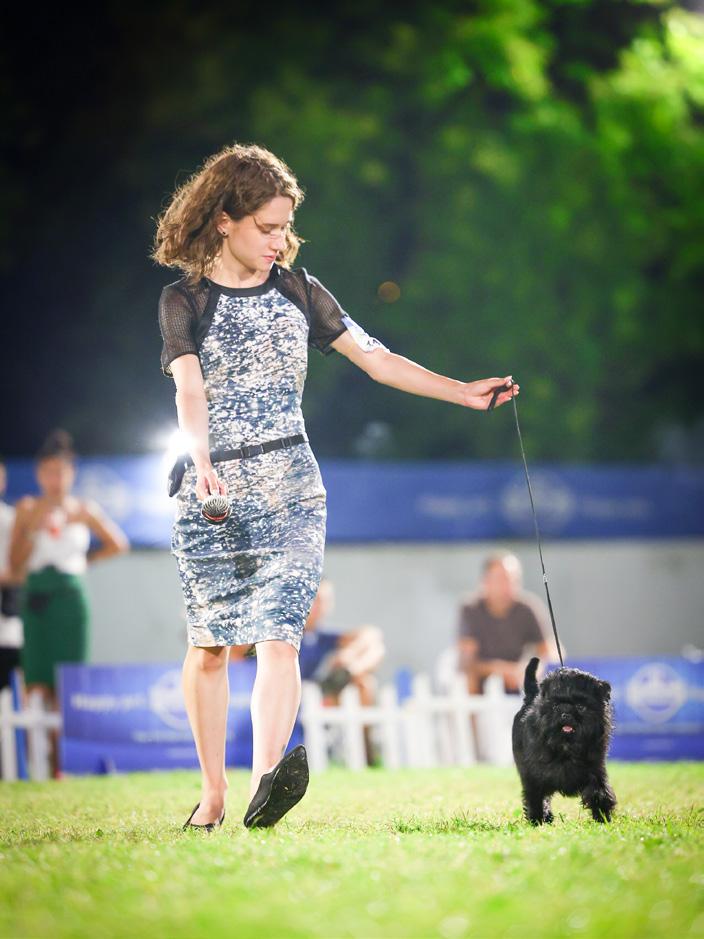

GROUP 1 WINNER
ALBA DOMINUS BORNED FROM SWEET WORLD
AUSTRALIAN SHEPHERD
JUDGE: BORIS CHAPIRO (FR)
GROUP 2 WINNER
ST. HONORE SKIP TO MY LOU TANI KAZARI
AFFENPINSCHER
JUDGE: NEMANJA JOVANOVIĆ (RS)
GROUP 3 WINNER
NORDLICHT VON DEN SCHÖNEN BERGEN
LAKELAND TERRIER
JUDGE: SAIJA JUUTILAINEN (FI)
GROUP 4 WINNER
MEGLINE CANDY QUEEN
DACHSHUND STANDARD WIRE-HAIRED
JUDGE: JEAN LAWLESS (IE)
GROUP 5 WINNER
LUPITA ITAPUCA
BASENJI
JUDGE: NIKOLA SMOLIĆ (HR)

GROUP 6 WINNER
COFFEE CHMIELNA ZAGRODA
GONCZY POLSKI
JUDGE: HELEN TONKSON (EE)
GROUP 7 WINNER
HELVÉCIA-VADÁSZ JOGÁSZ
MAGYAR VIZSLA
JUDGE: HANS VAN DEN BERG (NL)
GROUP 8 WINNER
AMADEUS FLORA DIAMOND FLAME
GOLDEN RETRIEVER
JUDGE: IGOR SELIMOVIĆ (HR)
GROUP 9 WINNER
EDIVETTE TAMBOTI WILD CAMP
STANDARD BLACK POODLE
JUDGE: BRUNO NODALLI (IT)
GROUP 10 WINNER
I LLA-BEREK FANNI
MAGYAR AGAR
JUDGE: JORGE NALLEM (UY)
EDIVETTE TAMBOTI WILD CAMP
STANDARD BLACK POODLE
NORDLICHT VON DEN SCHÖNEN BERGEN
LAKELAND TERRIER
LUPITA ITAPUCA BASENJI

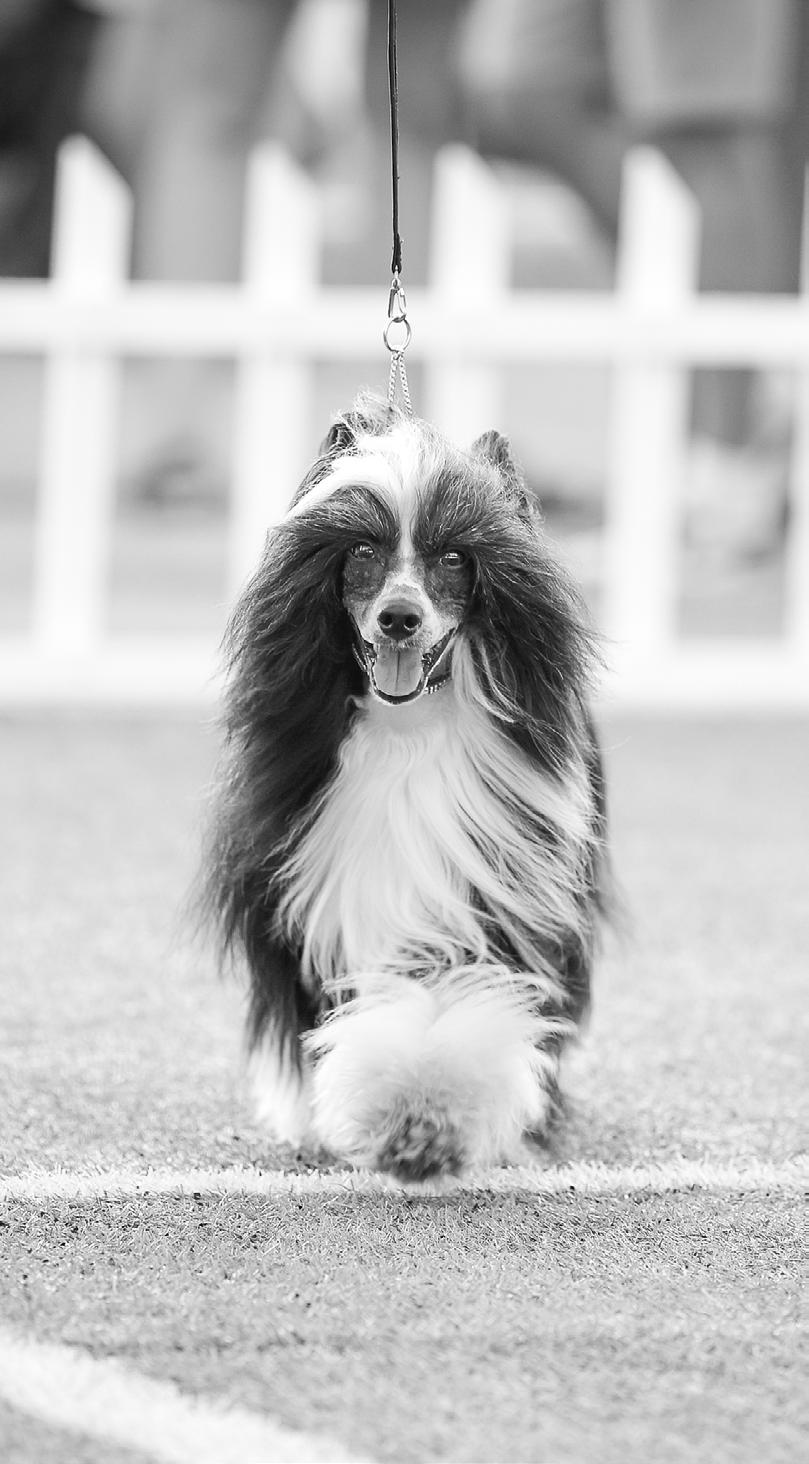
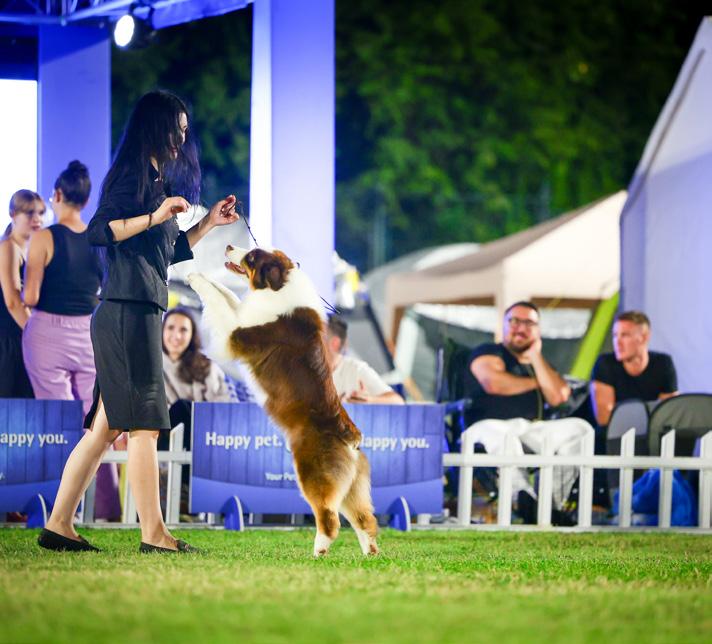
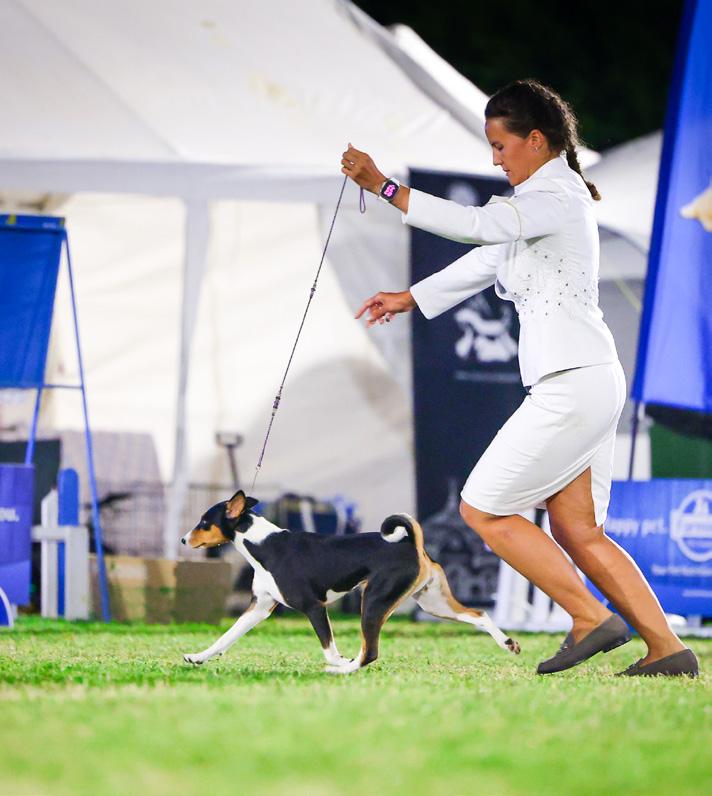
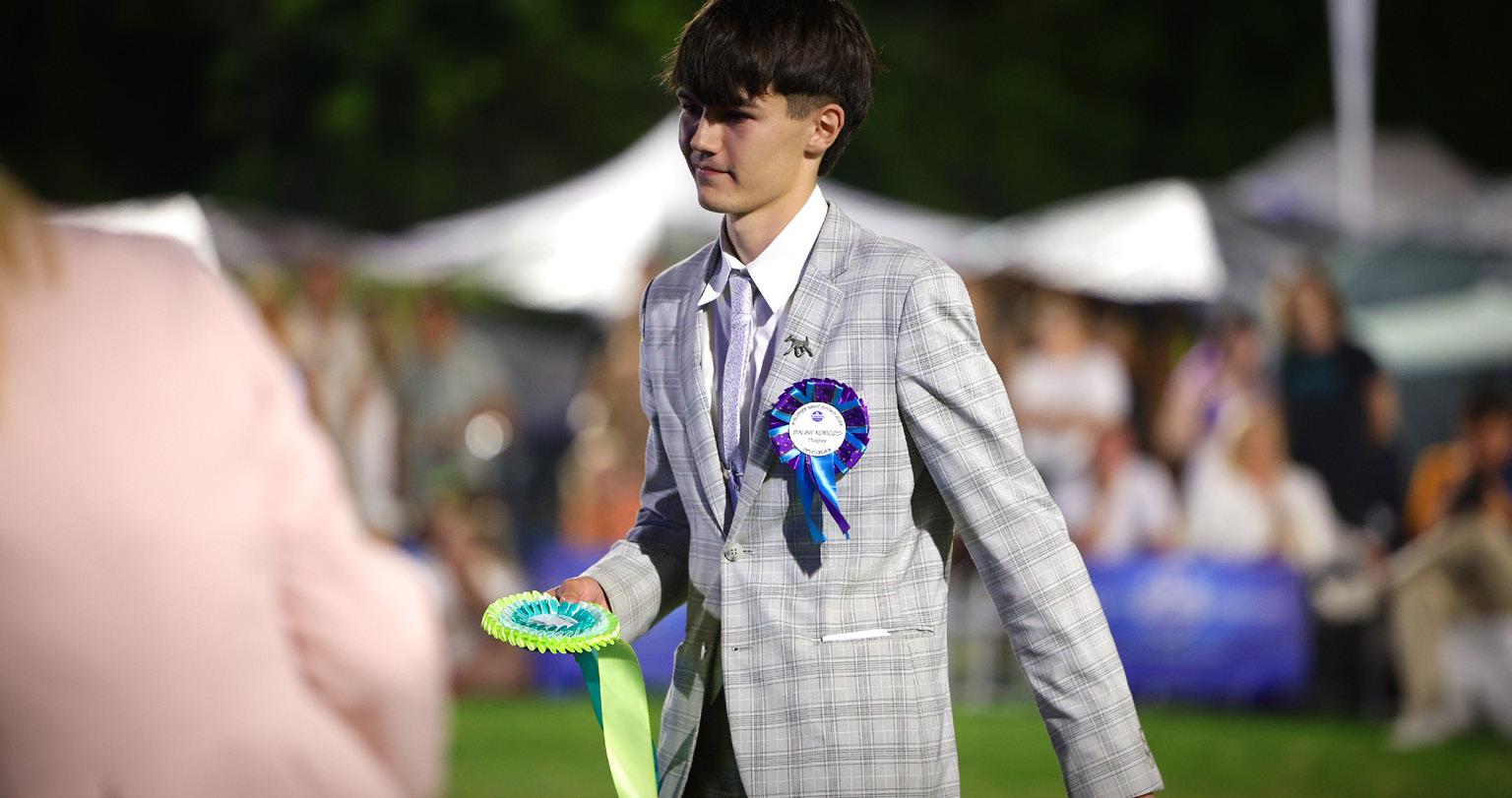


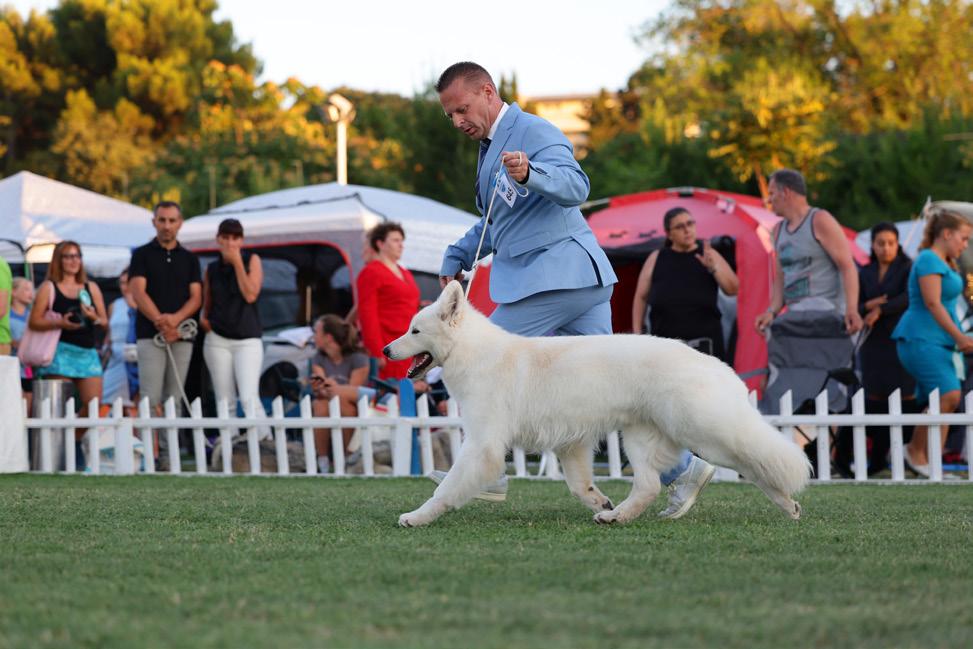

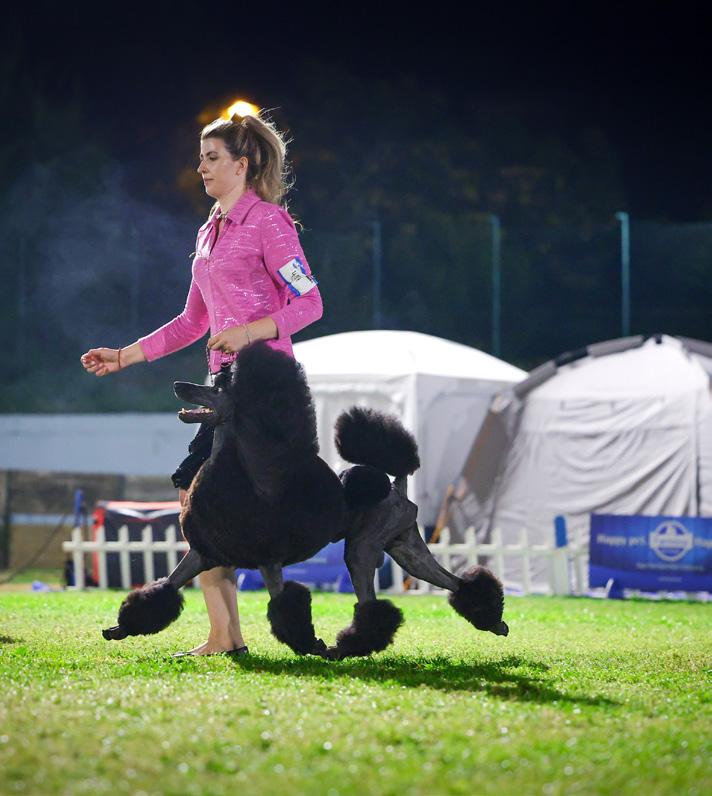
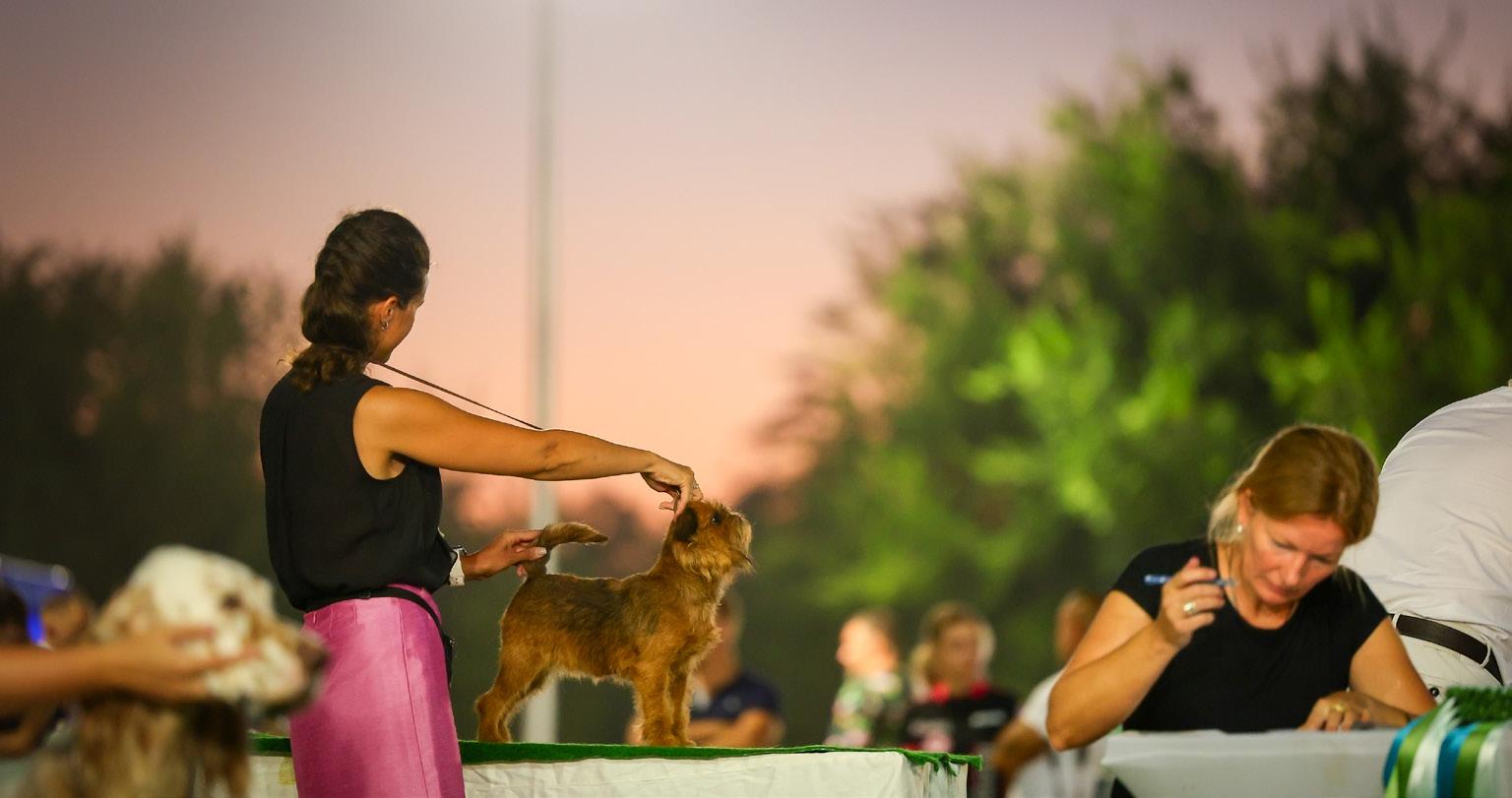


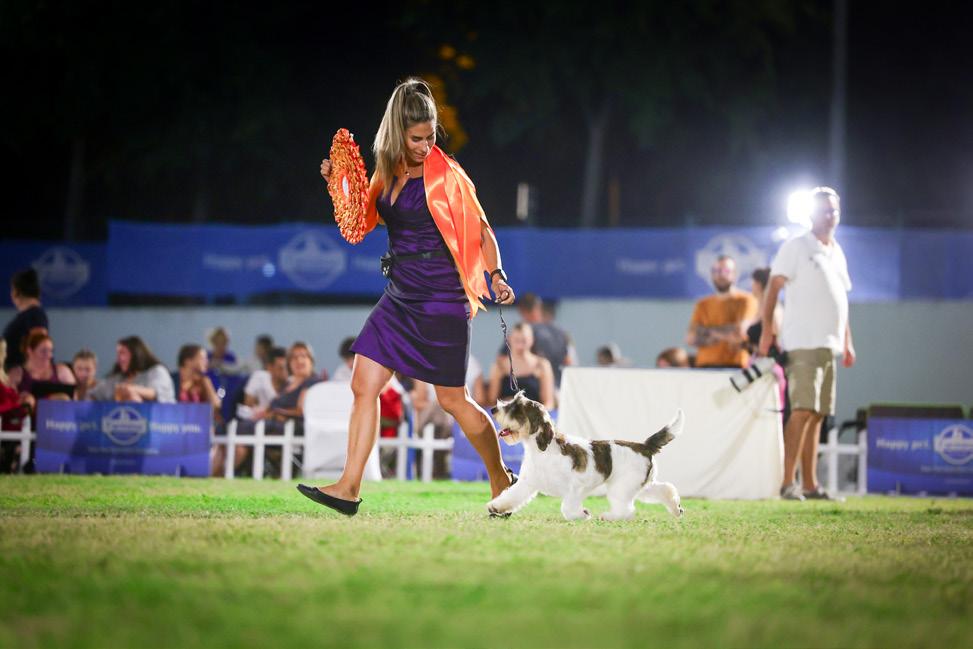
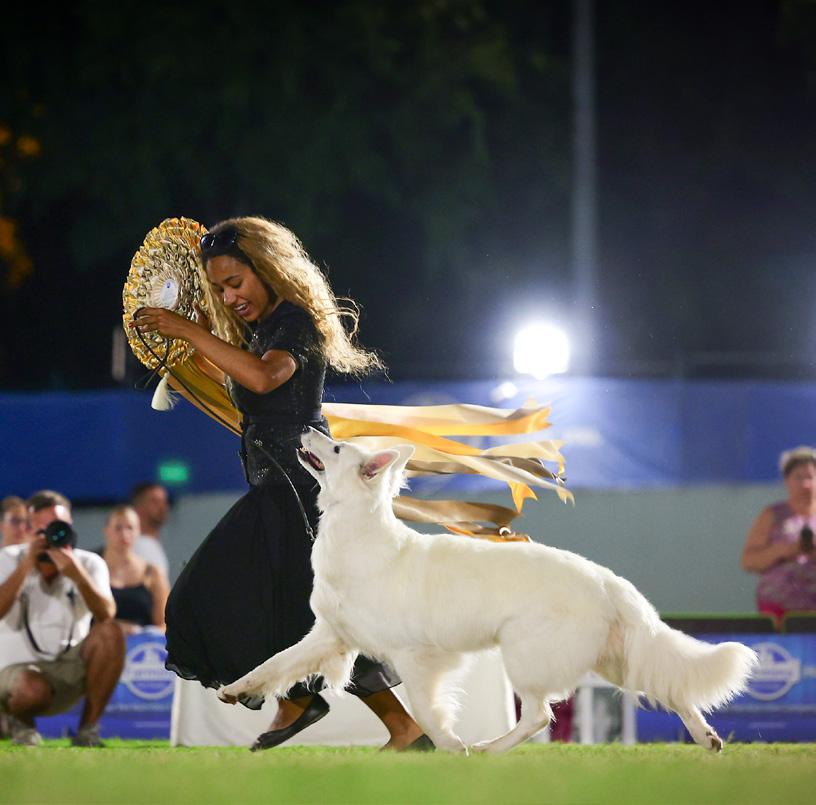



GROUP 1 WINNER
LIMABAND CAN SAY PALIANYTSIA
AUSTRALIAN CATTLE DOG
JUDGE: IGOR SELIMOVIĆ (HR)
GROUP 2 WINNER
ST. HONORE SKIP TO MY LOU TANI KAZARI
AFFENPINSCHER
JUDGE: BORIS CHAPIRO (FR)
GROUP 3 WINNER
AGRIA ZARINA
FOX TERRIER SMOOTH
JUDGE: NEMANJA JOVANOVIĆ (RS)
GROUP 4 WINNER
OLYMPIC SUN ENCANTADOR
DACHSHUND MINIATURE SMOOTH-HAIRED
JUDGE: HANS VAN DEN BERG (NL)
GROUP 5 WINNER
AYAX NIKE’S STORYBOOK
SIBERIAN HUSKY
JUDGE: BRUNO NODALLI (IT)
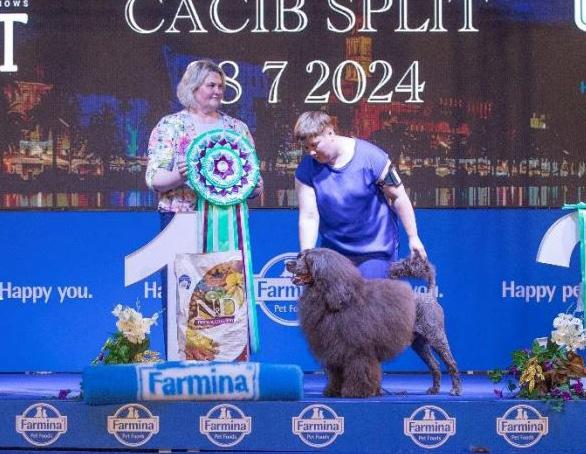
GROUP 6 WINNER
FANTA’S BRAND MAKES PEOPLE TALK
BEAGLE
JUDGE: NIKOLA SMOLIĆ (HR)
GROUP 7 WINNER
RAINHA DELLA MAGNA SILA
IRISH RED SETTER
JUDGE: PAUL LAWLESS (IE)
GROUP 8 WINNER
ADVENTURER’S DORIAN GRAY BY ALEX CAO DE AGUA PORTUGUES
JUDGE: SAIJA JUUTILAINEN (FI)
GROUP 9 WINNER
NUMMENPÄÄN BORN TO DREAM HIGH TOY POODLE
JUDGE: JORGE NALLEM (UY)
GROUP 10 WINNER
BOUDICA FLY ME TO THE MOON WHIPPET
JUDGE: ALBERTO CUCCILLATO (IT)
ADVENTURER’S DORIAN GRAY BY ALEX CAO DE AGUA PORTUGUES
NUMMENPÄÄN BORN TO DREAM HIGH TOY POODLE
AGRIA ZARINA
FOZ TERRIER SMOOTH


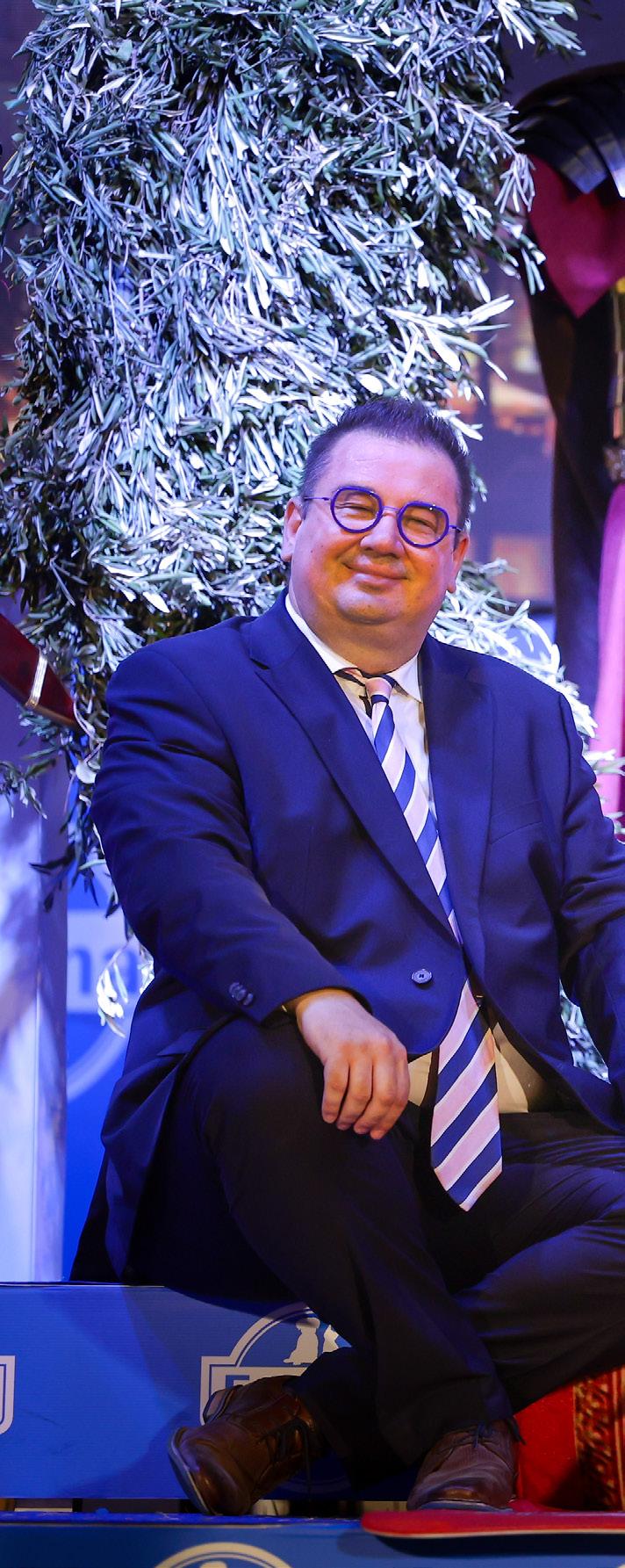

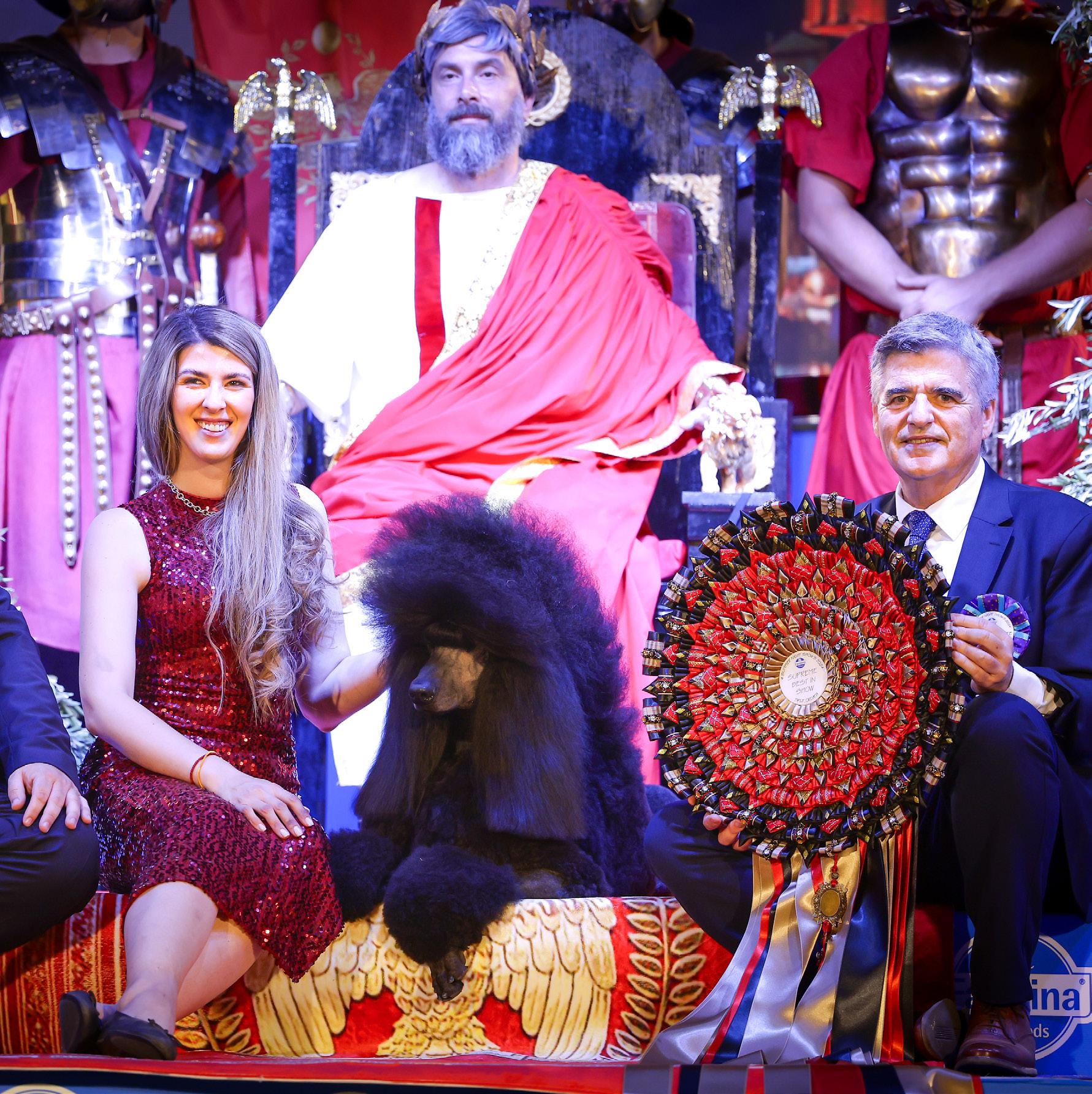

by Andrew Brace
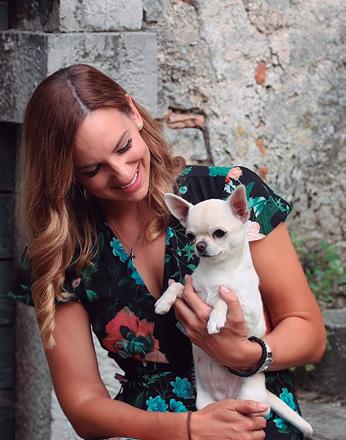
It seems that these days, wherever you happen to be in the world, there is a top winning show dog whose owner is one, Victor Malzoni Jr. That might be a slight exaggeration but to those of us who live in the UK, Europe or the USA it seems that Mr Malzoni is associated with one or more of the top ranked dogs. Yet many people see Victor Malzoni merely as a name in a catalogue or advertisement. I had met him briefly on a few occasions previously, but I was fascinated to discover what actually motivated this enigmatic gentleman, who is possibly the last of the great “fanciers”, and our presence in Helsinki for the 2014 FCI World Dog Show gave me the opportunity to spend some time with him and find out a little more about his life, his hopes and his dreams.
As I expected Mr Malzoni – he actually prefers his acquaintances to address him simply as Victor – was not easy to track down. He is a very busy businessmen and his time is precious, but going through his indispensable PR Livia Krainer we
I am truly grateful to have had the opportunity to meet Victor many years ago; he was the epitome of a gentleman. His kindness and generosity were evident in every interaction, and it’s deeply saddening that he left us in September this year. Victor’s contributions to our sport were immense, and his dedication will always be remembered. We should all be forever thankful for the lasting impact he made on our community and the inspiration he provided to so many. To truly honor Victor’s remarkable character and the profound impact he had on our community, I’d like to share an article that captures his contributions and spirit beautifully.
were able to meet in Helsinki for a few hours.
To those who have never met him, but who may have built up a mental image of this man who finances the careers of so many show dogs in various countries, he may come as something of a surprise. He is quite happy wearing an opennecked shirt and jeans, he is quiet and selfeffacing and possibly even a little shy at first.
Logically the best place to start was at the beginning. Victor was born in 1950 in Sao Paulo, Brazil, from parents who owned a bank and were major exporters of that Brazilian staple, coffee.

It seems that these days, wherever you happen to be in the world, there is a top winning show dog whose owner is one, Victor Malzoni Jr. That might be a slight exaggeration but to those of us who live in the UK, Europe or the USA it seems that Mr Malzoni is associated with one or more of the top ranked dogs. Yet many people see Victor Malzoni merely as a name in a catalogue or advertisement. I had met him briefly on a few occasions previously, but I was fascinated to discover what actually motivated this enigmatic gentleman, who is possibly the last of the great “fanciers”, and our presence in Helsinki for the 2014 FCI World Dog Show gave me the opportunity to spend some time with him and find out a little more about his life, his hopes and his dreams.
As I expected Mr Malzoni – he actually prefers his acquaintances to address him simply as Victor – was not easy to track down. He is a very busy businessmen and his time is precious, but going through his indispensable PR Livia Krainer we were able to meet in Helsinki for a few hours.
To those who have never met him, but who may have built up a mental image of this man who finances the careers of so many show dogs in various countries, he may come as something of a surprise. He is quite happy wearing an open-
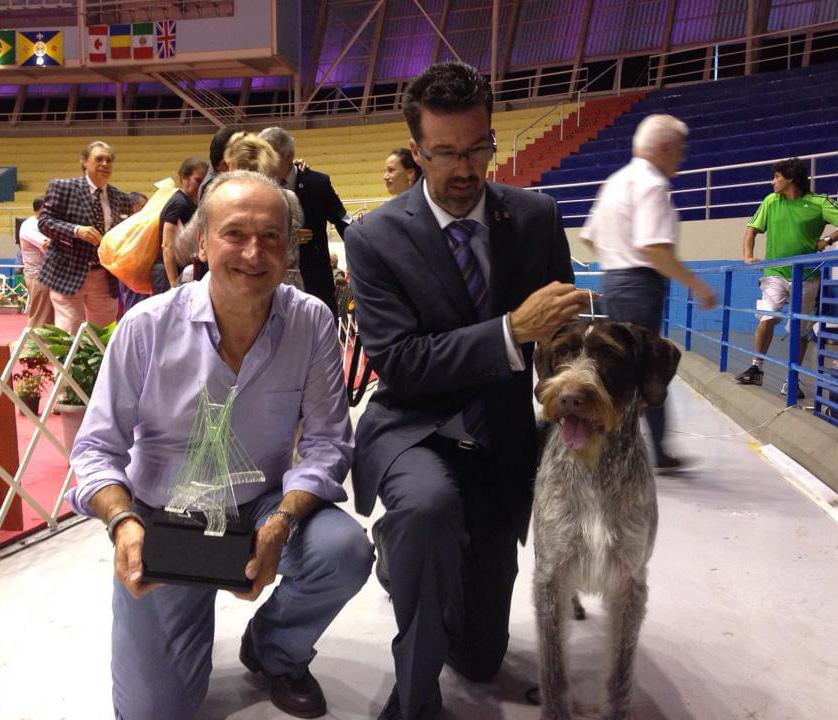
necked shirt and jeans, he is quiet and selfeffacing and possibly even a little shy at first.
Logically the best place to start was at the beginning. Victor was born in 1950 in Sao Paulo, Brazil, from parents who owned a bank and were major exporters of that Brazilian staple, coffee. He graduated from Mackenzie University where he studied Economics.
So how did the interest in purebred dogs begin?
“My first contact with show dogs was in 1957, when my father bought a Rough Collie from a kennel in Italy. The kennel is still active today under the name Canil di Cambiano and many British Collie breeders will be familiar with Maria Teresa Garabelli, the owner of the kennel, as she has bred many beautiful Collies, some of whom distinguished themselves in Britain. Then in 1965 my brother had bought a Saint Bernard from the Saint Bernard Monastery in Switzerland. This was the first dog that we took to dog shows in 1968. My first terrier arrived in 1992, when I bought my first Wire Fox, bred in Brazil. That is when my passion for terriers began.”
I was keen to discover who it was that fostered the young Victor’s interest in dogs. It seems quite clear that this was Jaime Martinelli who was a leading Brazilian handler at the time.
“My first contact with Jaime came about because we wanted our Saint Bernard trained. Jaime’s father had trained a famous dog for television named “Duque”. After Jaime, who was a handler, saw our dog he convinced us the dog needed to be shown. He taught me all about dog shows and what I needed to know to present my Saint Bernard effectively. We have been great friends ever since; he is now well into his ‘seventies. Jaime started in German Shepherds, showing his own dogs. He later became a handler who made a big impact on Brazilian Dog Shows. Jaime brought many

American ideas, handling skills and types of trimming to Brazil.”
As a young man Victor did not have a large amount of time to spend at dog shows. With his brothers, he cared for the family’s construction and development company. On a day to day basis it meant a lot of travelling, meeting with clients and constant care in order for the company to grow.
Yet all the time dog shows were in the back of Victor’s mind.
He recalls “Many times I was in Miami when I would watch the famous Westminster Kennel Club show on TV and I think that is was sparked my interest again. It was such an amazing show with always such top quality dogs being presented.”
In due course Victor established his Hampton Court kennel outside Sao Paolo. Contrary to what some may mistakenly assume there was no great British connection behind the choice of kennel name; it was merely the name of Victor’s home in Florida.
Needless to say Victor wanted nothing but the best for his dogs and he set about designing and building a state-of-the-art purpose-built kennel. This was done in association with Antonio Porcari, Victor’s long term employee, and the dream kennel was constructed on Victor’s farm in Itatiba, outside Sao Paolo.
“I began with a few Cairns that I had bought from my good friend Anna Claudia Torrealvo – Canil Astoria Bay, here in Brazil. I knew I wanted to start a breeding programme and hired Dedè who worked for Ana Claudia as my first handler. Afterwards I began attending more shows, I met Max and Livia Krainer who helped me acquire my first Bedlingtons. Then came Mario Duarte and Jerson Vale who peaked my interest in other terriers. After

that, I began to breed more and hire more handlers, including Divonney Rasera and Daniel and Silvia Beloff. Then after meeting Leonardo Bustamante he became my kennel manager at Hampton Court, and he is still with me today. Leonardo started working for me in 2009. He had apprenticed many years under great handlers such as Flavio Werneck and Daniel Beloff. Leo takes care of my kennel, whelping litters, raising puppies and training young dogs. He is responsible for finishing national championships on most of my homebred dogs. ”
I asked Victor what first attracted him to the Cairn Terrier as a breed.
“I think are very fun and cute. They have such active personalities and yet make great house dogs. They are so goofy, I just fell in love with the breed. I could

never imagine being without a Cairn and always have a few living with me indoors – I have three with me in my apartment at all times – but as a breed they are not perceived to be big winners.”
When Anna Claudia Torrealvo decided to finish showing and breeding, Victor took over all her Cairns and Wires. By then he had the kennel facility to do so, his kennels easily accommodating 60 or more dogs. He began breeding Cairns and Wires in a modest way.
His first big winner came when, with the help of well-known American handler Gabriel Rangel who he had now met, he bought the Smooth Fox Terrier, High River Mountain Run.
“With the help of Gabriel Rangel in 2006 I was looking for a really good dog to campaign in Brazil. Gabriel knew River’s breeder for many years before, and he had seen River at the shows in the US and liked him a lot. He came to me and won the America and Caribes Show in Uruguay. He was my first really big winner as the Cairns and Wires I were producing were slowly being built up but I hadn’t at the time produced anything spectacular.”

Then began Victor’s journey in Wires, which has been a remarkable one.
“One of my earliest winning Wires was Buster – UK Ch Tamedale Orinoco – who was a UK and Brazilian champion, Panamerican and International Çhampion . He became the winner of 33 Bests in Show in Brazil, and was Number One All Breeds of the Imported Dogs in Brazil. Then there was Arepa – Sanherpinc Arena who was an American and Brazilian champion, Panamerican and International Champion, winner of 38 BIS in Brazil and won Third Place at one of the early Eukanuba World Challenges.”
Victor had established contact with several British breeders, one of which was Bill Browne-Cole who has become a close friend over the years. Victor’s first Travella import was Stage Star. Valken Violet was a bitch who was bought from the Westwood family who produced well. His next significant Travella was Star Lord who had won the group at Crufts in 2011 before he went to South America where he continued his successes being handled by Rasera. He was Number One All Breeds in Argentina in 2011, picked up 53 BISs, won the Group at the World Dog Show in Budapest, going on to Third BIS.
However Victor was by now beginning to produce noteworthy homebred stock and his Hampton Court’s Monte Cristo was Number One National Bred Dog in Brazil in 2013, having achieved his American, Brazilian , Panamerican and International championships.
Victor had first met Gabriel Rangel in 2004 at the Westminster Kennel Club show on New York. “He was back at the set ups grooming the Sealyham terrier, “Ben” Ch Stonebroke Right On The Money. Gabriel noticed I was standing close looking at him working on the dog. I told Gabriel I was from Brazil, was a Cairn Terrier breeder and I admired how he worked. I told him I had hoped that someday he could show a Cairn for me. Then a few years later that Gabriel showed the first Cairn for me!”

A few years later Gabriel introduced Victor to Diane Ryan who had a Wire bitch that Gabriel clearly rated and who was being campaigned by Torie Steele. Gabriel had agreed to handle Wires exclusively for Torie for a year but an association developed and Victor became co-owner of the famous Afterall Painting in the Sky.
“She was a really beautiful bitch, Number One All Breeds in 2013 in the USA, won an incredible 128 Bests in Show and was a World, French and American Champion. She was the 2012 AKC/ Eukanuba National championship BIS winner, 2012 the NATIONAL dog show best in show Champion – Philadelphia KC, 2012 Great Western Terrier Association BIS winner, 2013 International Kennel club of Chicago BIS winner, 2013 Montgomery County Kennel Club BIS winner.” She has subsequently been mated to Star Lord.
Then of course we come to the famous Wire rivals of the moment in the UK – Oliver and King. At Crufts 2014 Open Dog in Wires pulled a packed ringside to see which of these two much admired dogs would win the day under Alan Davies. Ultimately it was King who won –Ch King Arthur van Foliny Home – bred in the Netherlands by owners Rony and Dieny Munter and handled by young Welshman Warren Bradley. Richard Allen had to play bridesmaid that day with Oliver – Ch Travella Striking Steel – then still in the ownership of Sue Browne Cole. As is typical of the dog world, rumours were flying around as to who had bought what and where they were going but as time went on Victor bought both males. King of course went on to win the group at Crufts and later in the year at the World Dog Show in Helsinki. Oliver ended 2014 as the Top Dog of All Breeds in the UK.
“Gabriel had told me about King and so I telephoned Rony and asked him what his plans were for the dog. He wanted him to stay with Warren until at least after the European show in Czechia. I had already agreed to buy Oliver with
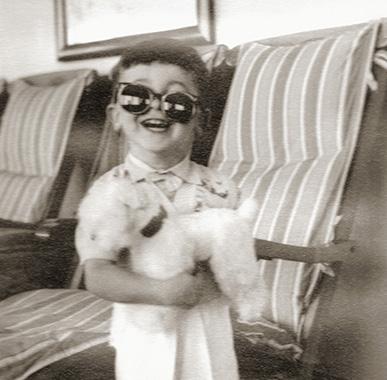
a view to bringing him to Brazil but Bill wanted him to stay in the UK for some time as he was on something of a winning roll. Ultimately King will go to Gabriel to be campaigned in the US whilst Oliver will as planned come to Brazil.”
It is highly likely that when Oliver does arrive in Brazil he will do so as the winner of more all-breed BISs in the UK than any other dog in history.
Whilst Sky was Number One All Breeds in the USA for 2013, the previous year Victor had also owned the Number One dog in the German Wirehaired Pointer, Brazilian & GCh Mountain View Ripsnorters Silver Charm. He was also a Westminster group winner and won the GWPCA National three times.
Then were other big winning Terriers. Another that came from Rony and Dieny was World, French & American Ch Iron von Foliny Home, who won the National Specialty, BIS at the legendary Montgomery show under Paolo Dondina and who was handled by Gabriel Rangel to take G2 at Crufts in 2013.
We should not however neglect Victor’s first love, the Cairns. Of special note is the homebred bitch,

Hampton Court’s Ashley who was the top winning Cairn bitch in the USA for 2009, 2010 and 2011, and who topped the breed at Westminster in 2011.
Victor points out with justifiable pride “She was the 2010 National Roving Specialty Winner in the US and is the winner of multiple BIS, multiple BISS, and is an American grand Champion, Brazilian, Panamerican and International Champion.”
Another Cairn of whom Victor is immensely proud is the top winning Cairn in Sweden for 2012, Hjohoo’s Save Hjour Love For Me, who was the Number One Cairn in the USA for 2013 and at the time of writing 2014. This is another dog with an incredible string of titles – 2013 World Champion & Group 2, 2013 Interra Dog Show Best in Show Winner,
International Beauty Champion, American Champion, Swedish Champion, Norwegian Champion, Netherlands Champion, Italian Champion, Romanian Champion, European Winner 2012, Junior European Winner 2011, BOB European Winner 2011, Interra Winner 2012, Bucharest Winner 2012, Swedish Winner 2012, Norwegian Winner 2012.
We should not forget Hjohoo’s Just The Way Hjo Are who is an American, Swedish, Netherlands and Slovenian Champion and won BOB at the World Show in 2012 as as well as countless Specialty BISs and BOB at the AKC/Eukanuba National Championship and Montgomery in 2011.
There have also been involvements with Skye and Irish Terriers and presently Larry Cornelius and Marcelo Veras are successfully campaigning the Skye, Am Ch Cragsmoor Good Time Charlie in the USA for Victor. (Since the DOG WORLD ANNUAL went to print Charlie has won BIS at the AKC/Eukanuba National Championship show, repeating Sky’s win of a few years earlier.)
Victor points out “I have been lucky enough to be included in some great dogs’ careers because
sometimes a handler comes to me with a great opportunity. Because of this, I have been lucky enough to be surrounded and included with great some great breeders.”
Victor has used many different professional handlers – so what does he require of a handler and what makes a relationship with a handler really work for him?
“I have used many different handlers because every dog under each specific circumstance is different. Whether it is because of the breed or a co-owner’s wishes, I have strived to make the right decision for each specific dog.”
In Victor’s position he must be approached by various people to back dogs’ campaigns. On what is his decision to do so based? Is he guided by handlers, judges or whom?
Victor seems quite clear on this, “The first thing is, I have to like the breed, whether it is to breed them or not. Second, it has to be a quality dog. Of course, I have handlers, friends and judges that I trust and ask their advice. But, as the years go on I am feeling more confident in my own judgement and understanding breeds to decide on my own. Now most importantly I want to show the dogs that I am breeding. In the beginning of course I had to back more dogs however, now I hope to always prioritise to my Hampton Court dogs.”
In recent years Victor has travelled extensively to dog shows around the world – which shows have particularly impressed him and why?
“Every year I look forward to attending Westminster, Crufts, the World Dog Show, Eukanuba and Montgomery. They are all so different but every one of them is fantastic! Each one has their own specific air every year and that is why I always attend all of them.”
Along the way Victor has also owned Welsh and Norwich; “I tried to breed Norwich but they are

notoriously difficult to breed so I decided to concentrate on my other loves.”
When we were speaking in Helsinki it fascinated me that the win of Best Junior Male by Victor’s Cairn at the World Dog Show obviously gave him as much pleasure as his Number One all breeds successes in the USA, his delight was obvious and refreshing.
With his name on so many dogs I wondered what happened to these dogs when they had finished their show careers.
“Some dogs live in my homes in Miami and Sao Paulo. Some retire to the kennel with Leo. Others live with Max and Livia. We also have many that return to the breeders or co-owners. I always try my hardest to make sure they live out their lives comfortably. At heart I am as big a dog lover as anyone else with the same passion. What better could I be doing with my money?” Victor quips. “I am learning all the time and I have made so many wonderful friends through the sport of purebred dogs all around the world.”
Victor had intimated earlier on in our conversation that he had no desire to ever become I judge. I wondered why.
“I just have never had the desire to become a judge because of the responsibility that comes with any decision a judge makes. I am at heart a breeder and the fact that in 2013 I was the Number One Breeder in Brazil gave me enormous pleasure.”
Victor Malzoni has had a great influence on the present day dog world as the owner of many stellar terriers who have won major awards around the world, yet he is resolute as to how he wishes to be remembered. With typical modesty and candour he says, “I hope in years to come I will be remembered as the gentleman from Brazil who bred great dogs, not just the gentleman from Brazil who bought great dogs.”
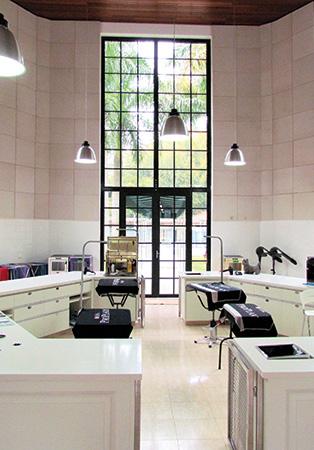
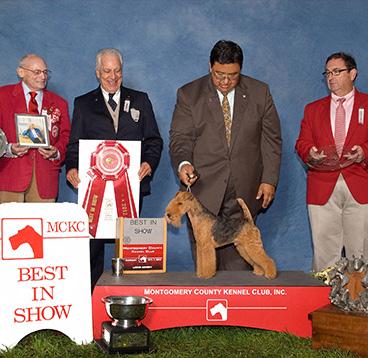
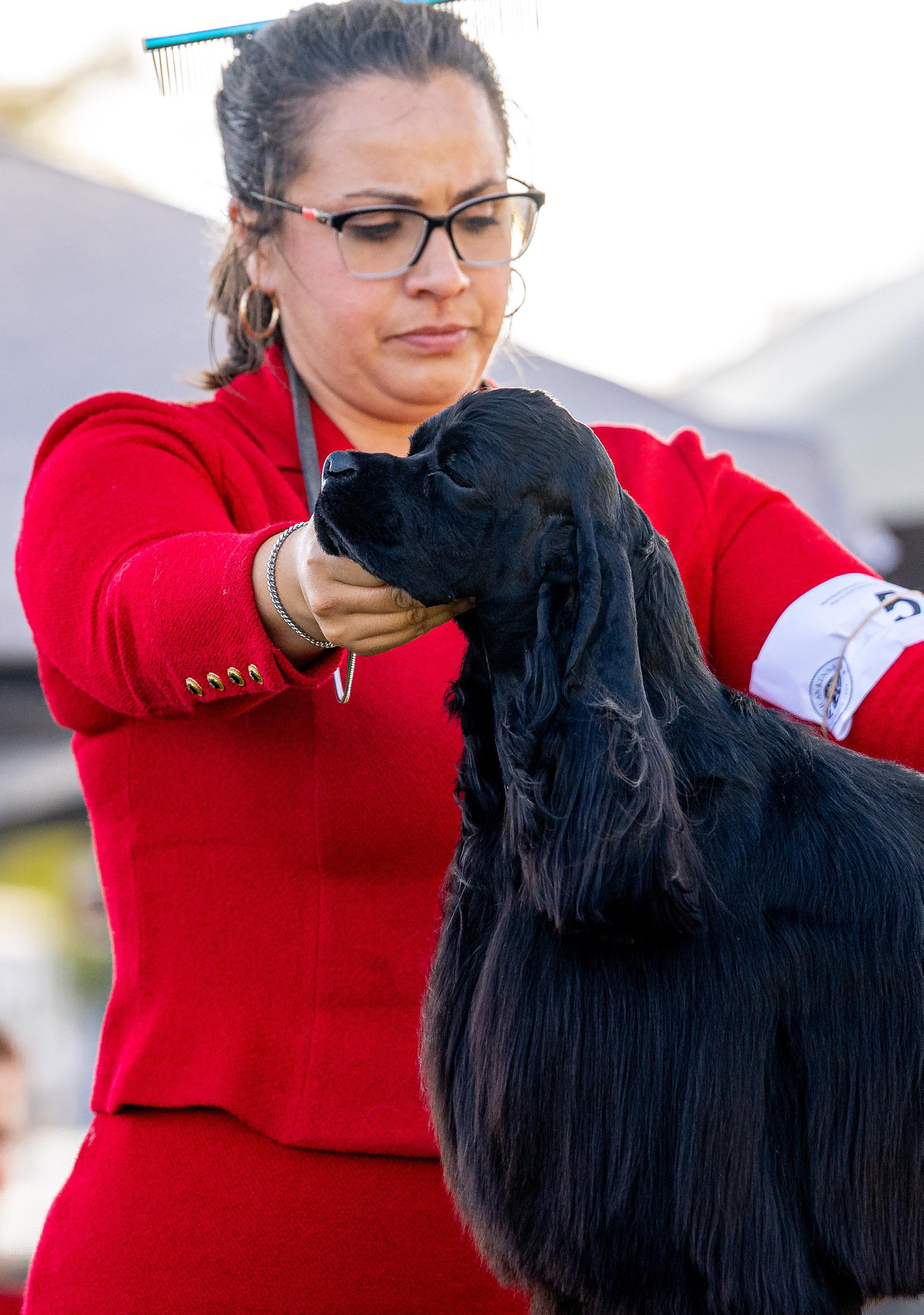
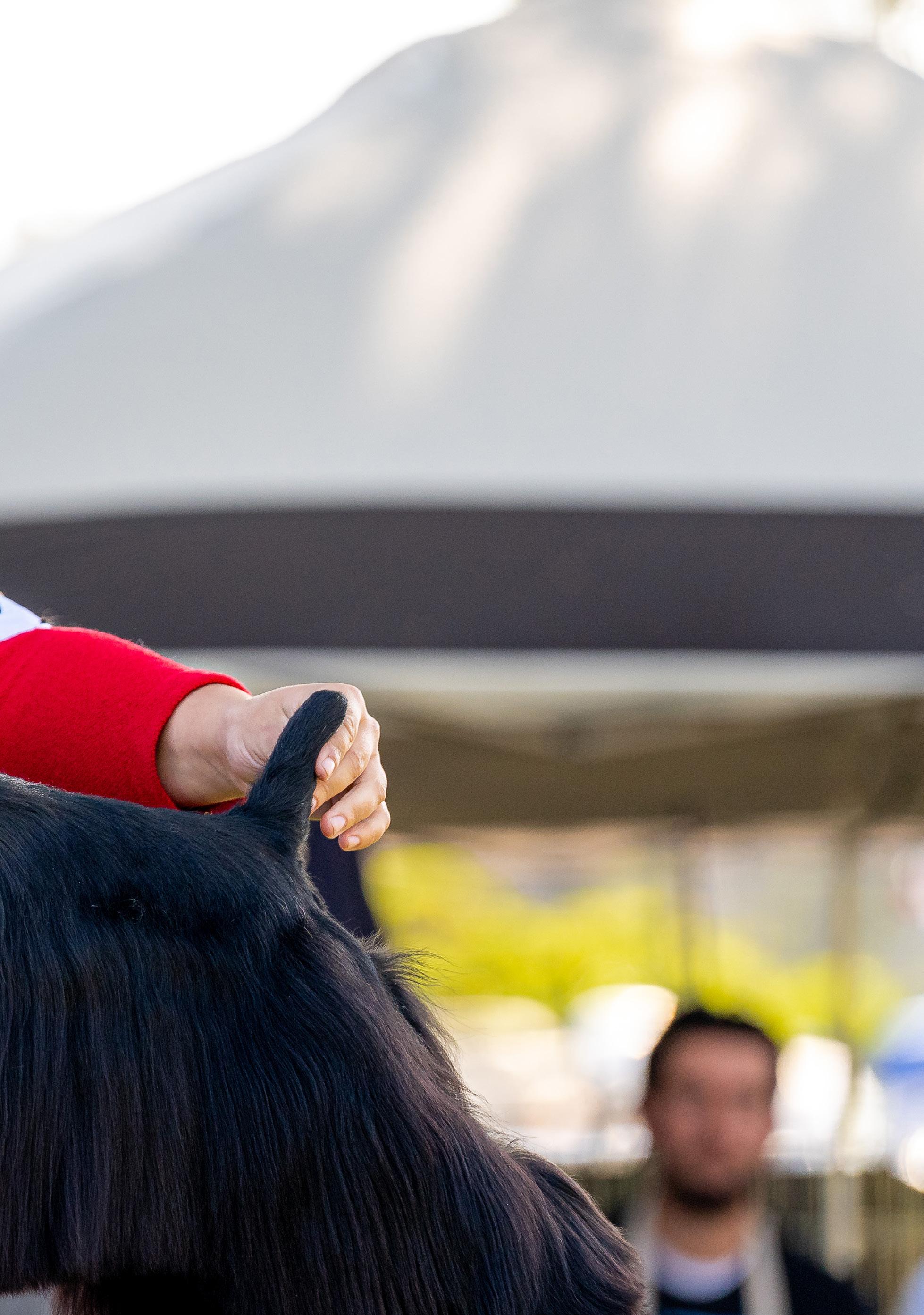
photo credits: Frank Horvath
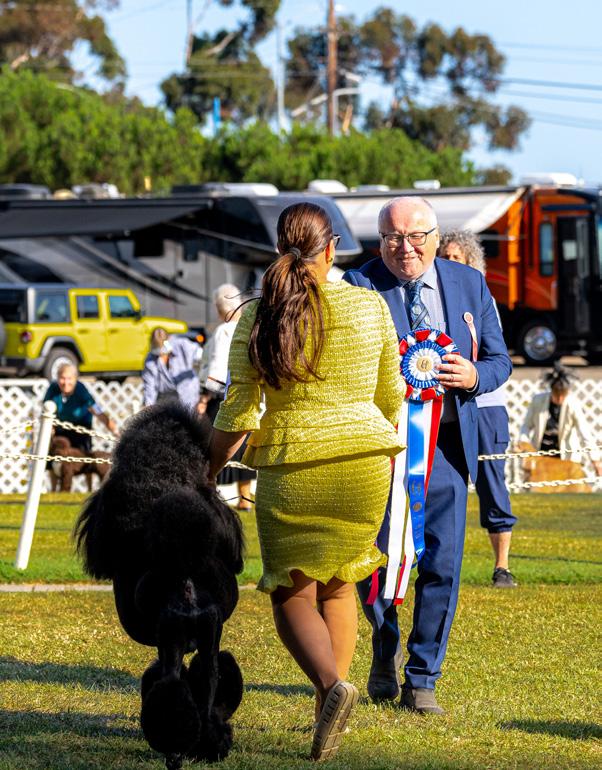

Santa Barbara is renowned not only for its stunning backdrop, which provides an extraordinary setting for dog enthusiasts, but also for being home to one of the oldest and most esteemed dog shows.
The inaugural show in Santa Barbara took place in 1919 at the Palm Ring of the Belvedere Hotel (the Potter Hotel was renamed the Belvedere that same year after its sale). This first event attracted 272 entries, with the Best in Show awarded to Mission Silvie, a Cocker Spaniel owned by Mission Kennels.
The following year marked the first show officially sponsored by the Santa Barbara Kennel Club, boasting over 500 entries. An article in “Field and Stream” from November 6, 1920, praised the event: “The annual show of the Santa Barbara Kennel Club, held in the famous Palm Arena on the beautiful grounds of

Field and Stream, November 6, 1920
the Ambassador Hotel, may well go down in history as the most picturesque dog show ever assembled. Picture a perfect lawn encircled by towering palms over 30 feet tall, along with an abundance of semitropical plants such as acacia, oleander, heliotrope, and verbena. The dogs were benched on a shaded terrace, and the ring was large enough for a horse show. It far surpassed all expectations.”
Over the years, Santa Barbara has enjoyed several beautiful show venues along the West Coast, ranging from the exclusive Hope Ranch Park to the Santa Barbara Polo Club, and in the 1980s, to Robertson Field at the University of California. Attendees can admire exceptional dogs and, if they look closely enough, spot movie, sports, or television stars— either in or out of the ring.
The driving force behind the Santa Barbara Kennel Club was Sidney Heckert, Jr., who led it to become the largest dog show in the country. When he decided to retire and step back from the club, the AKC reached out to Tom and Ann Stevenson, who were living in Carmel at the time. They agreed to relocate to Santa Barbara and took over the organization of the dog show.
Today, the Santa Barbara Kennel Club hosts back-to-back shows in August at the Earl Warren Showgrounds, conveniently located just off Highway 101. While the shows are smaller, they remain just as thrilling. The venue offers ample space for dogs, motorhomes, and spectators alike.

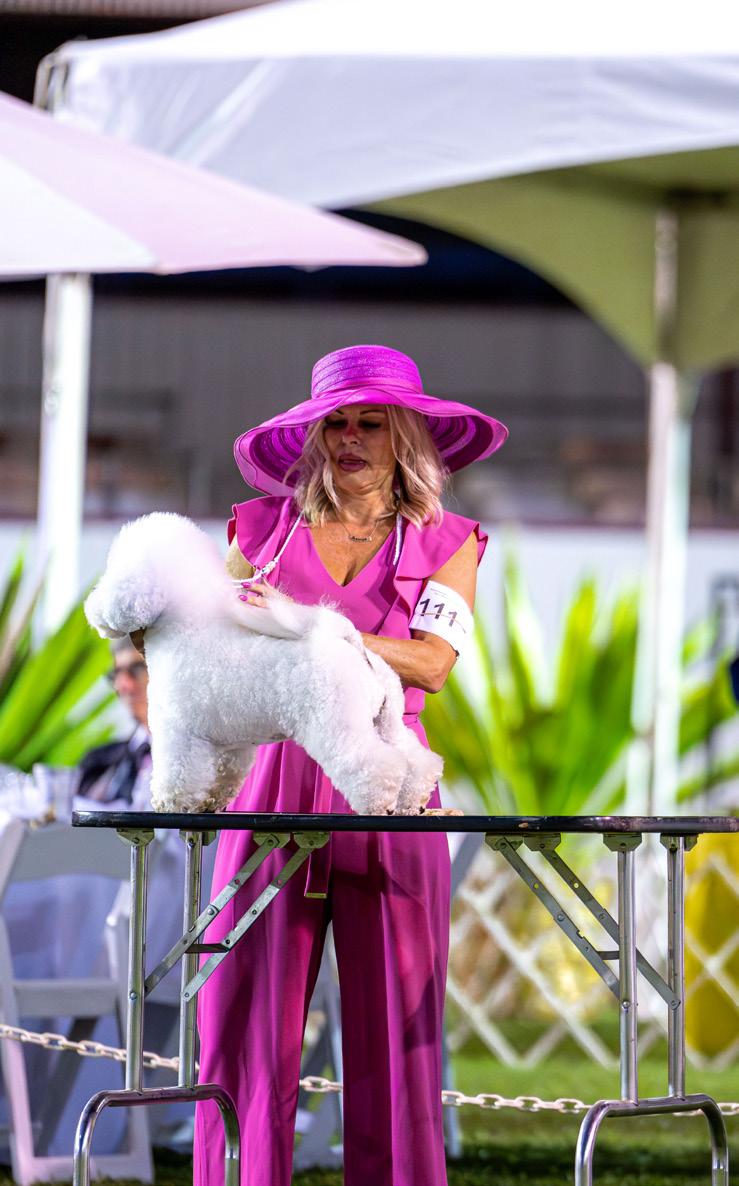
solidifying its status as one of the largest dog shows in California. Even Sunday maintained strong participation, contributing to a successful weekend overall. This level of engagement highlights the show’s significance on the national stage, making it one of the rare events in the USA that consistently features international judges.
The judging panel this year included esteemed figures from around the world, such as Mr. Frank Kane from the UK, Arne Foss from Norway, and Laurent Pichard from Switzerland. Frank Dyson from England also took the reins to judge the Bull Terriers on Sunday, alongside Darle Heck and Carol Graham from Canada. Their expertise brought a diverse perspective to the judging process, enhancing the overall experience for participants.
What makes Santa Barbara particularly special to me—and one of my favorite shows in the USA—is the commitment it shows to the world of purebred dogs. In addition to the four all-breed shows (Simi Valley KC on Thursday and Friday, and Santa Barbara KC on Saturday and Sunday), the event encompasses a variety of activities and showcases that celebrate the beauty and quality of purebred dogs.
Every year, the Santa Barbara Kennel Club dog shows promise an unforgettable experience for exhibitors and spectators alike, and this year’s event, held from August 22 to 25, was no exception. With beautiful weather that typically graces the Santa Barbara weekend, attendees enjoyed picture-perfect conditions—temperatures peaked at a comfortable 75 degrees with low humidity, creating an ideal environment for the dogs and their handlers.
This year, the event showcased impressive participation, starting with nearly 1,000 entries on Thursday, followed by 1,046 entries on Friday. Saturday saw a remarkable 1,228 dogs,
Beyond the competition, the weekend serves as a gathering point for dog lovers and breeders, fostering a sense of community. The scenic backdrop of Santa Barbara adds to the allure, allowing attendees to enjoy both the show and the breathtaking surroundings.
In conclusion, the Santa Barbara Kennel Club dog shows continue to shine as a premier event in the dog fancy world. With its blend of exceptional weather, high entry numbers, and an international panel of judges, it’s a celebration of purebred dogs that leaves a lasting impression on all who attend. I look forward to next year’s festivities and the continued support for purebred dog excellence.

On Thursday, following the Best in Show competition of the all-breed show, the Foreign Bred Dog Competition took center stage, expertly judged by Darle Heck from Canada and Lynda Clark from the USA. This great event is meant to all dogs bred outside the United. The standout winner of the competition was GCHG Zaida Bint Muti Von Haussman, an exceptional Afghan Hound owned by R. Podesta, S. Pfeil, J. Donahue, and A. Sobrado, and presented by Willy Santiago.
A total of four placements and four Awards of Merit were awarded, with all eight winners receiving cash prizes and stunning ribbons. With an entry fee of just $10, approximately 30 enthusiastic participants eagerly took part.
The Bullyganza is celebration of the bully breeds, drawing enthusiasts and breeders alike to witness the remarkable qualities of these canines. This year’s competition featured a diverse lineup that included American Staffordshire Terriers, Boston Terriers, Bullmastiffs, Bull Terriers (Colored & White), Dogues de Bordeaux, Dogo Argentino, Miniature Bull Terriers, Staffordshire Bull Terriers, Bulldogs, and French Bulldogs. Eligibility for the Bullyganza is granted to all Best of Breed, Best of Winners, and Best of Opposite Sex winners at the Santa Barbara Kennel Club shows. Additionally, winners of the Select Dog and Bitch titles from the concurrent specialties of American Staffordshire Terriers, Bull Terriers, Miniature Bull Terriers, and French Bulldogs are also eligible. These exceptional dogs compete together in a single class.

On Sunday afternoon, just before the Best in Show began, the Bullyganza unfolded under the watchful eye of judge Peggy BeiselMcIlwaine. The standout of the day was Bull Terrier Ch. Grabo Frankie Goes to Magor, who has already made a name for himself by winning the Terrier Group at Westminster this year, owned and presented by Sarah Byzewski.

The Sighthound Spectacular is an exquisite showcase of some of the most elegant and graceful breeds in the canine world. Held annually, this event attracts the finest sighthounds to compete for top honors, drawing in dog lovers and breeders alike. This year’s competition featured a stunning array of breeds, including the Afghan Hound, Azawakh, Basenji, Borzoi, Cirneco dell’Etna, Greyhound, Ibizan Hound, Italian Greyhound, Irish Wolfhound, Peruvian Inca Orchid, Pharaoh Hound, Portuguese Podenga, Portuguese Podenga Pequena, Rhodesian Ridgeback, Scottish Deerhound, Saluki, Sloughi, and Whippet. To compete in the Sighthound Spectacular, dogs must be winners of specific titles. Each participant must have secured a Best of Breed, Best of Winners, or Best of Opposite Sex title at the Santa Barbara Kennel Club shows on Saturday and Sunday. Furthermore, Select Dog and Select Bitch
winners from supported and specialty breeds also qualify for this prestigious event. These outstanding canines come together in a single class, showcasing their beauty and agility in a competitive atmosphere that celebrates the unique qualities of sighthounds.
This year’s Sighthound Spectacular took place in the main arena on Sunday afternoon, preceding the Best in Show all-breed competition. The judge was Gretchen Bernardi, a respected figure in the dog show community known for her keen eye and appreciation of breed standards. The highlight of the day was the announcement of the first-place winner: Ch. Bohem N Lishima’s Alluring, a charming 9-month-old Whippet named Vixen. Owned by Libby de Mille and Bo Bengtson and expertly presented by Paul Lepiane, Vixen captured the hearts of both the judges and the audience with her poise and grace.



A Night to Remember: The Breeder’s Showcase
Every year, the Breeders’ Showcase competition brings together some of the finest dogs and breeders in the industry. Held under the stars after Saturday’s Best in Show Judging, this event is a true celebration of exceptional breeding programs. The competition begins at the group level, where participants present two or more dogs (and/or bitches) of the same breed, all of whom share a common breeder. What makes this event truly unique is the spirit of inclusion—anyone can handle the dogs, and entrants don’t have to be registered in the regular classes of the Santa Barbara Kennel Club (SBKC). However, all dogs must belong to an AKC Recognized Breed and follow AKC Sanctioned Show rules.
Monetary prizes are awarded to the common breeder of record, and a separate entry form for
this competition is included in the Premium List or available through Jack Bradshaw Dog Show Superintendents. What makes the Breeders’ Showcase even more special is the club’s “Dinner at the Dog Show,” where attendees are invited to enjoy a meal with a suggested donation of $10—creating a perfect blend of camaraderie, good food, and love for dogs.
The Breeders’ Showcase is not just a competition; it’s an experience. Taking place in the main arena on Saturday night, the spectacle is awe-inspiring. The combination of the beautifully lit arena, an array of stunning dogs, and the palpable excitement in the air creates a magical ambiance. It’s a night where owners, breeders, and visitors come together, seated around the rings, enjoying a delightful dinner served by the club. The atmosphere is one of romance and refinement, with fascinators adorning heads, laughter echoing in the background, and an undeniable sense of joy all around.
Each group is judged by a different expert, adding to the variety and excitement of the competition. This year, the Sporting Group was judged by Loran Morgan, the Hound Group by Susan LaCroixHamil, the Working Group by Linda Clark, the Terrier Group by Peggy Brown, the Toy Group by Patty Proctor, the Non-Sporting Group by Arne Foss, and the Herding Group by Dale Heck.


The competition saw many deserving winners, with ribbons and monetary prizes awarded across the groups. Here’s a quick look at the stand-out champions:
Sporting Group: Nova Scotia Duck Tolling Retrievers, GCHB Redmoon’s Sexy Son of a Duck and GCHS Redmoon’s What The Duck, presented by Kendyl Schultze and Jorda Confer.
Hound Group: Whippets, Bohem N Lishima’s Alluring and Virtuoso de Vitruvius, presented by Paul Lepiane and Debra Stafford.
Working Group: Boxers, GCHP2 Irondale’s The Legend Exists and GCH Irondale’s You’re It, presented by Kimberly and Lexi Steele, who not only won the group but also clinched Best in Show.
Terrier Group: Bull Terriers, CH Action Divine Goddess by Old Forge and CH Action Simply Divine from Old Forge, owned by Sarah Bryzewski, Franne Berez, MD, and Dale Scur, DDS, and who went on to win Reserve Best in Show.
Toy Group: Japanese Chins, GCH Kalor Panic at the Disco and Kalor Hot Rod Lincoln, owned by Kathleen Sepulveda and Maria Moody.
Non-Sporting Group: English Bulldogs, GCH MBK-A&J Sunshine and CH MBK ANJ Sunshine to Infinity and Beyond, owned by Jackie Basagoitia, Kylie Compton, Abraham Silva, Jazmin Romero, and Dulce Castro.
Herding Group: Bearded Collies, CH Scott’s Rebel Without a Cause and GCHS Scott’s Georgia on My Mind, owned by Carol and Thomas Wathan, and presented by Jorge and Susan Olivera.
From Awards of Merit to Best in Show, each participant walked away with a prize, with cash awards ranging from $50 to $1000.
What an incredible evening it was! From the beautiful dogs to the fantastic atmosphere, the Breeders’ Showcase was truly a night to remember. We can’t wait to see what next year brings. Until then, we’ll be reflecting on this magical night, filled with love for dogs, great company, and unforgettable memories.
Until Next Year!


SPORTING GROUP
#1- GCHG Vjk-Myst Heir To The Throne JH FDC
CGCA CGCU TKN BN-V
Breed: Pointer (German Shorthaired)
Handler: Valerie Nunes-Atkinson
Owner: Y Deterding, V Atkinson & S Stutz
Breeder: S Stutz, Y Deterding & V Atkinson
HOUND GROUP
#1-GCHG Zaida Bint Muti Von Haussman
Breed: Afghan Hound
Handler: Willy Santiago
Owner: R Podesta, S Pfeil, J Donahue & A Sobrado
Breeder: R Podesta
WORKING GROUP
#1-GCH Tybrushe Livin On The Edge Of X-Cellence
Breed: Boxer
Handler: Michael Shepherd
Owner: B Tan
Breeder: B Tan
TERRIER GROUP
#1- GCHS Maystar’s Shonleh Michan Ruddy Duck
Breed: Norwich Terrier
Handler: Amy Rutherford
Owner: L Marshall, Dr. FJ Bossong & S Curry
Breeder: Dr. FJ Bossong, S Curry & S Hamilton
TOY GROUP
#1- GCH Kick Em Kenny V. Tani Kazari
Breed: Affenpinscher
Handler: Ethan Coye
Owner: Y Savard, P Kanan & C Huggins
Breeder: M Cooijmans
NON-SPORTING GROUP
#1- GCHG Lakeridge Challenger
Breed: Poodle (Standard)
Handler: Young Choi
Owner: D Ferguson-Jones
Breeder: D Ferguson-Jones
HERDING GROUP
#1- GCHS Scott’s Georgia On My Mind
Breed: Bearded Collie
Handler: Susie Olivera
Owner/Breeder: C & T Wathen & J & S Olivera

JUDGE: Mr. Frank Kane
GCHG Zaida Bint Muti Von Haussman
Breed: Afghan Hound
Handler: Willy Santiago
Owner: R Podesta, S Pfeil, J Donahue & A Sobrado
Breeder: R Podesta
GCH Tybrushe Livin On The Edge Of X-Cellence
Breed: Boxer
Handler: Michael Shepherd
Owner: B Tan
Breeder: B Tan
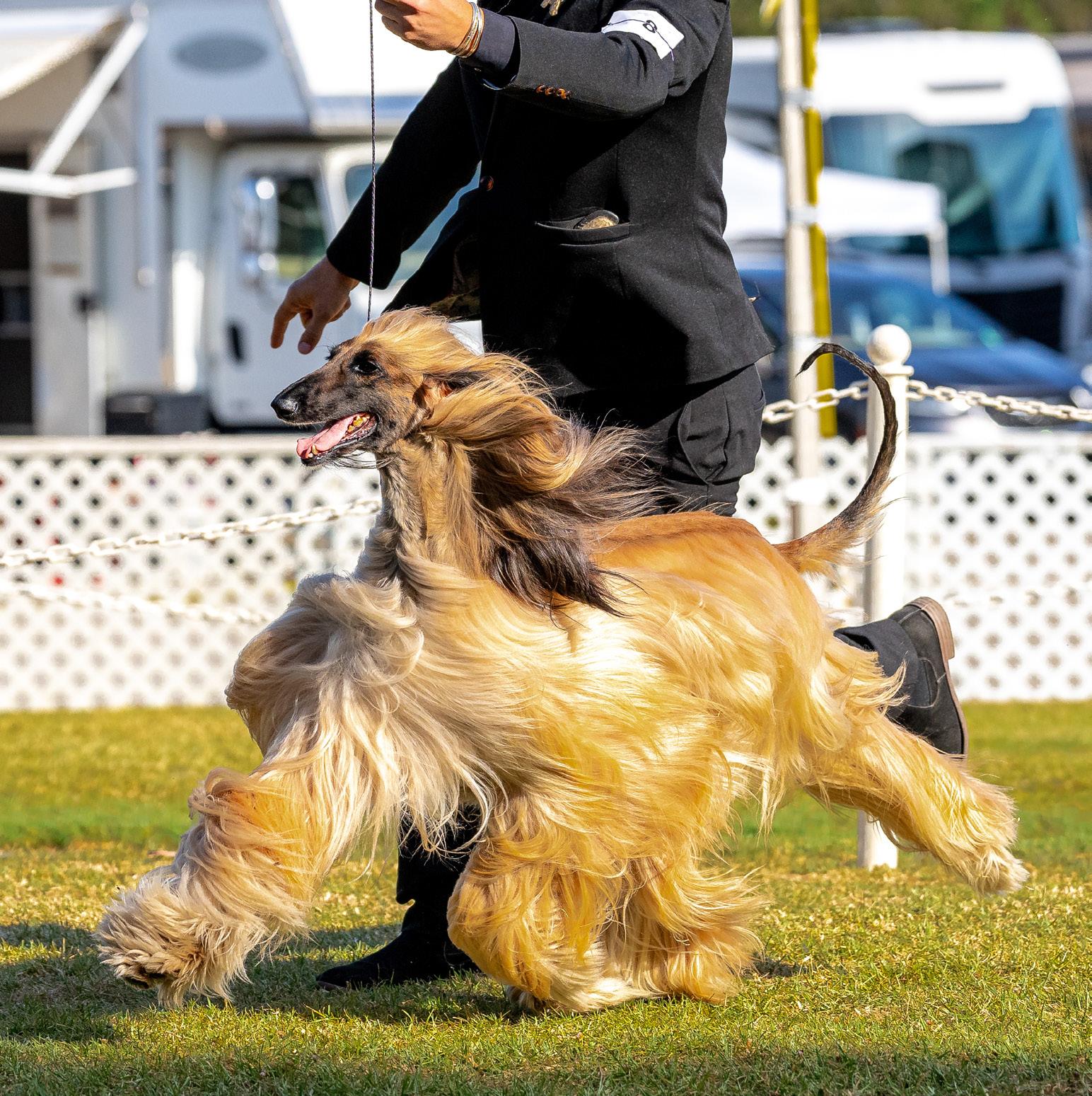

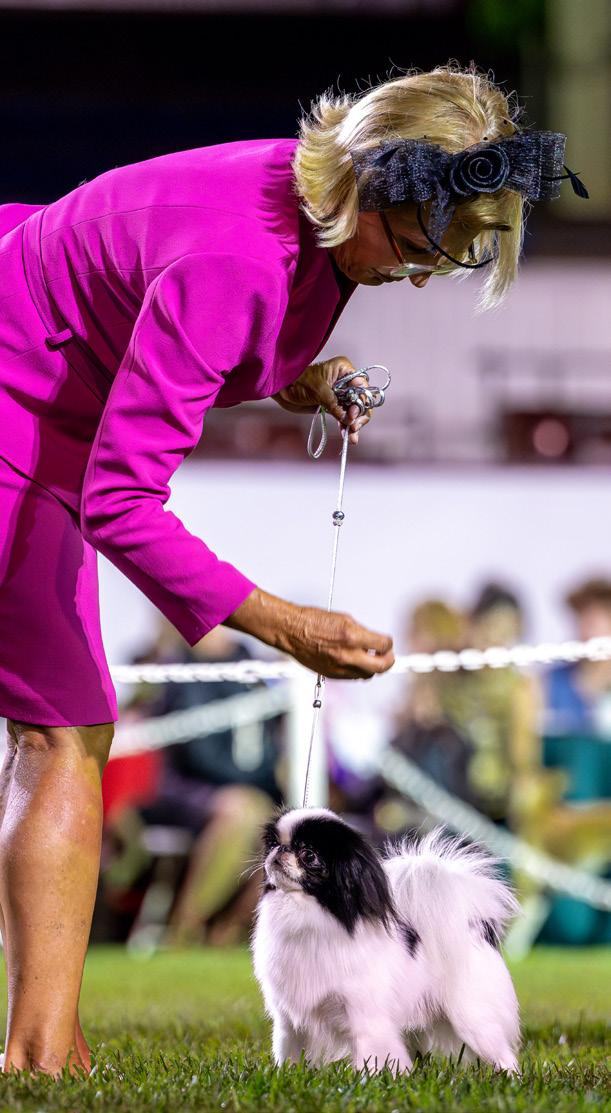
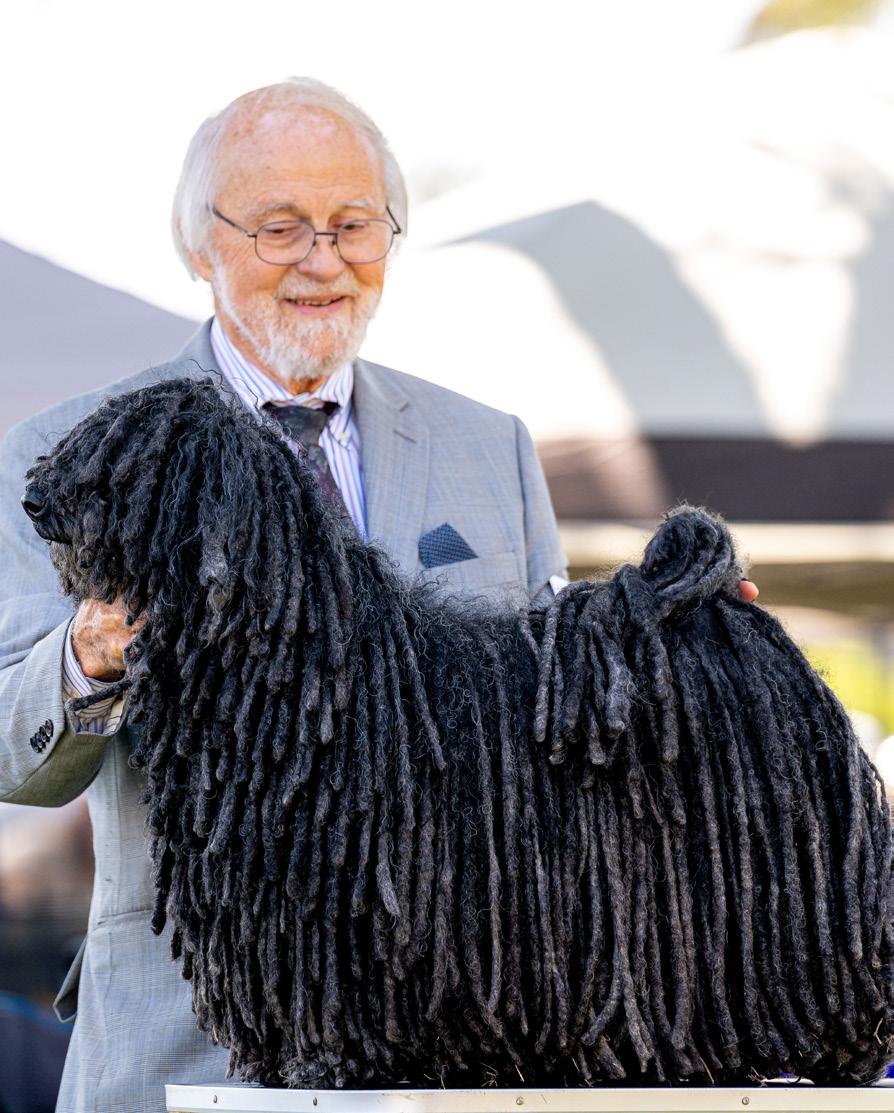
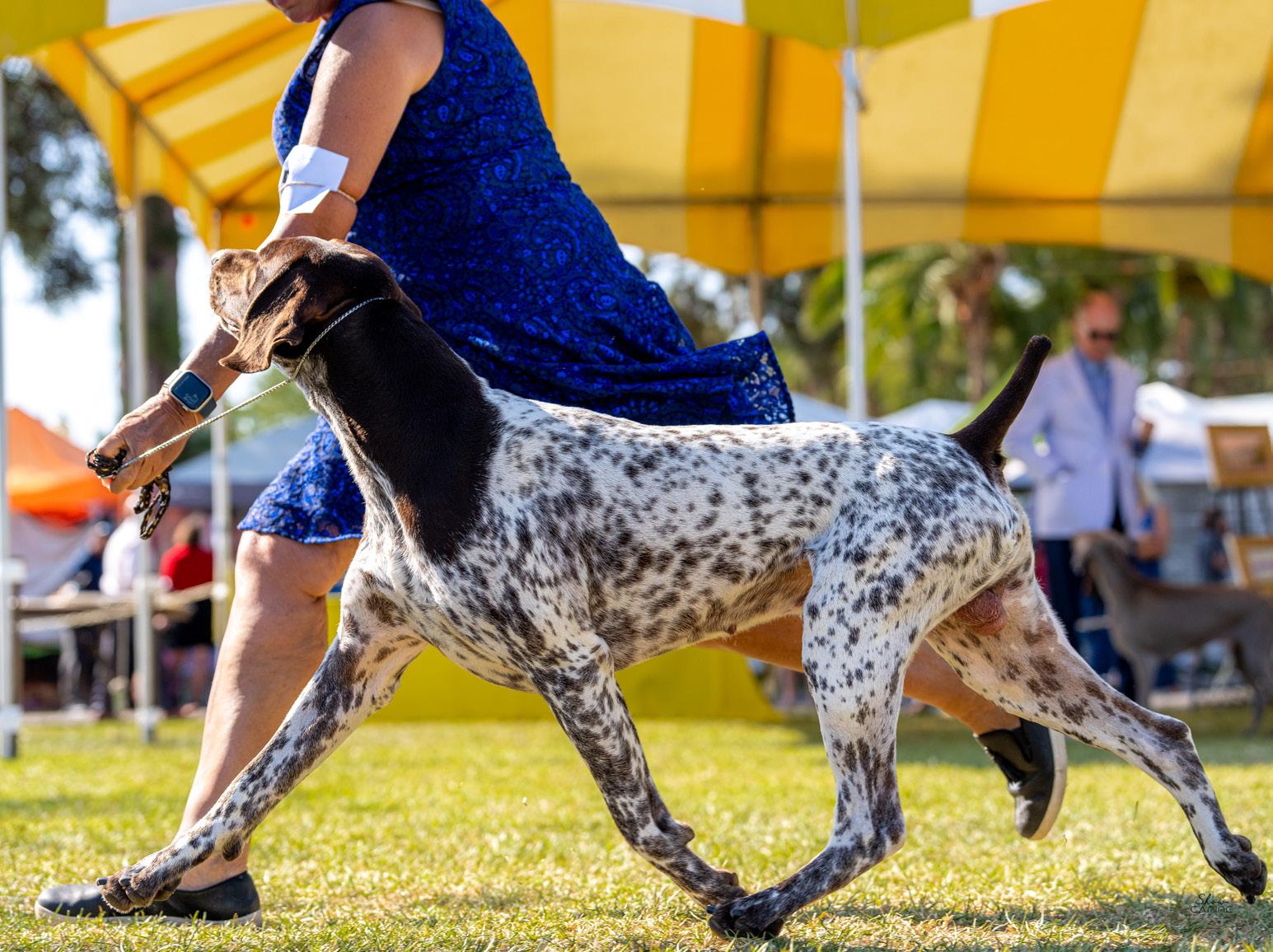

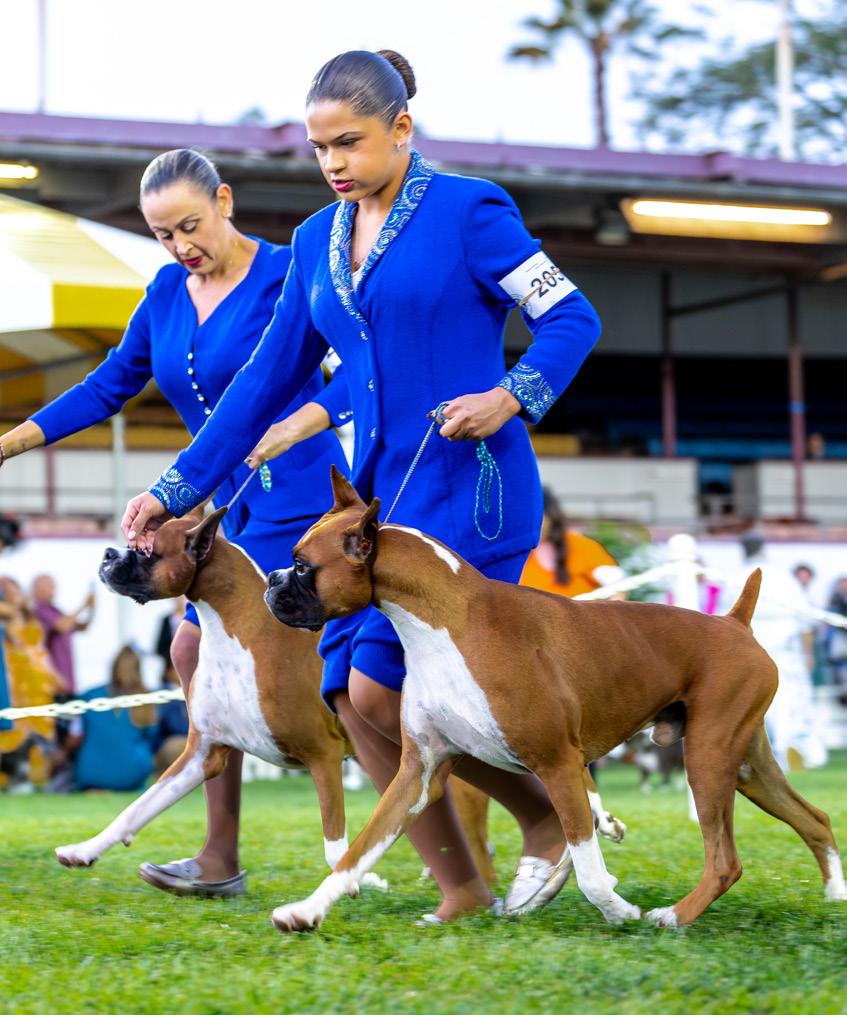
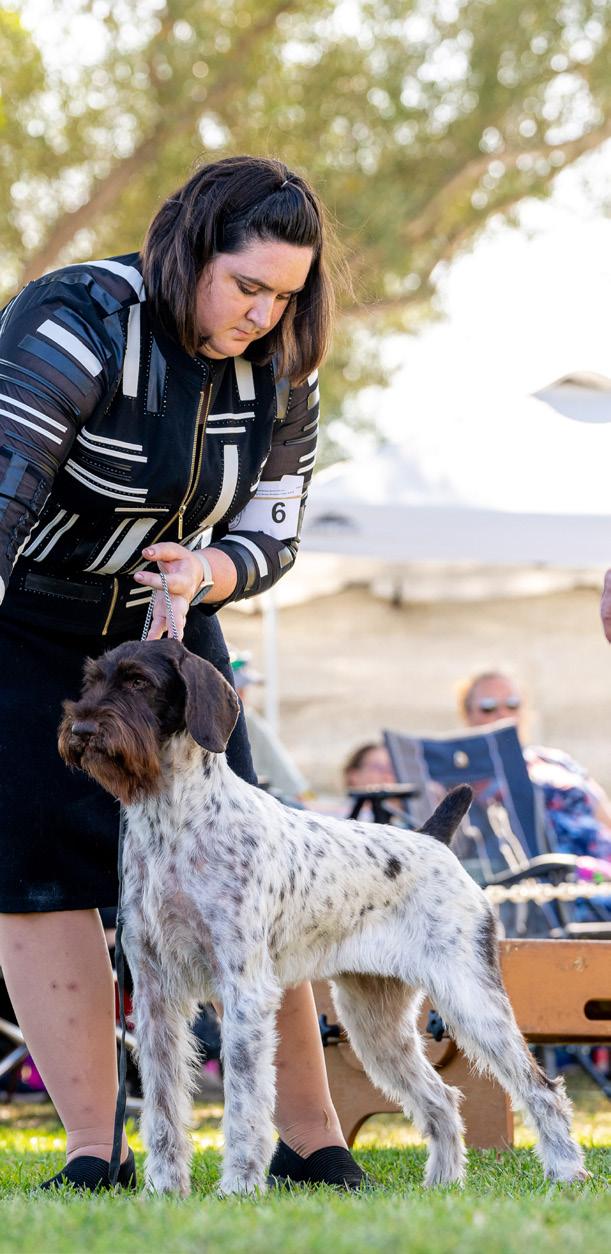
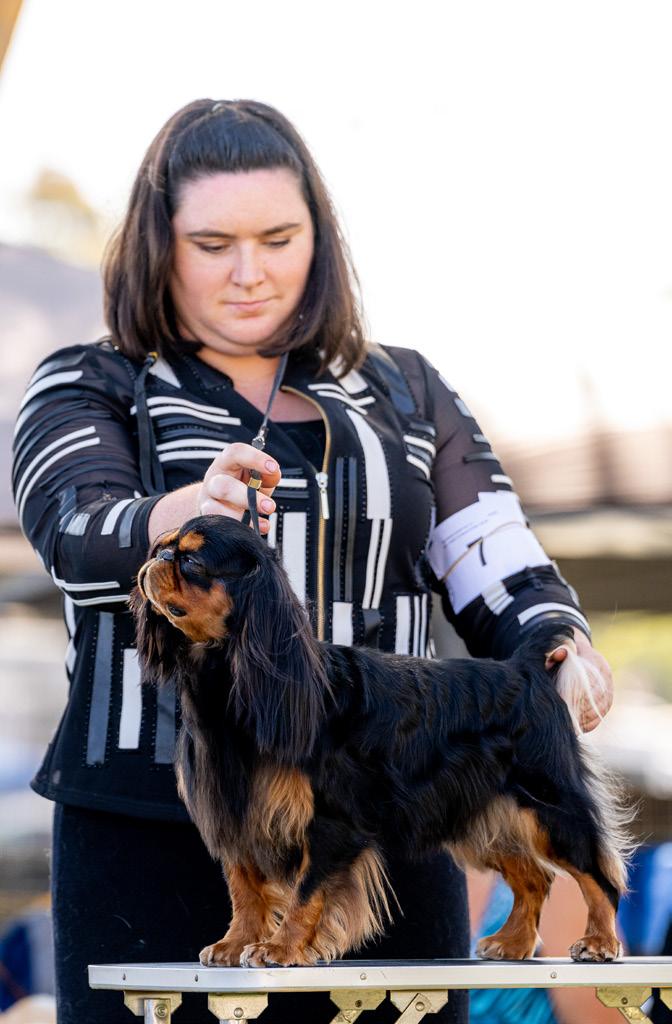

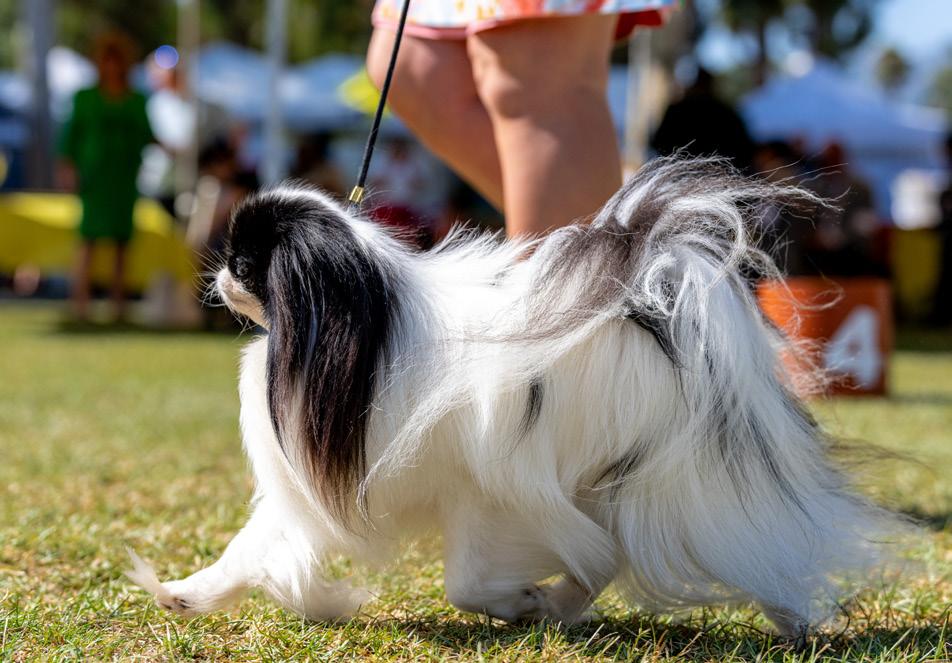

SPORTING GROUP
#1- GCHG Vjk-Myst Heir To The Throne JH FDC
CGCA CGCU TKN BN-V
Breed: Pointer (German Shorthaired)
Handler: Valerie Nunes-Atkinson
Owner: Y Deterding, V Atkinson & S Stutz
Breeder: S Stutz, Y Deterding & V Atkinson
HOUND GROUP
#1-GCHG Zaida Bint Muti Von Haussman
Breed: Afghan Hound
Handler: Willy Santiago
Owner: R Podesta, S Pfeil, J Donahue & A
Sobrado
Breeder: R Podesta
WORKING GROUP
#1-GCH Tybrushe Livin On The Edge Of X-Cellence
Breed: Boxer
Handler: Michael Shepherd
Owner: B Tan
Breeder: B Tan
TERRIER GROUP
#1- CH Grabo Frankie Goes To Mabor
Breed: Bull Terrier (Colored)
Handler: Sarah Byzewski
Owner: S Byzewski
Breeder: G & R Thomas
TOY GROUP
#1- GCHP Wynmark’s Les Bijoux’s RockN Rolz At Reverie
Breed: Havanese
Handler: David Murray
Owner: F Holt, M Coombs, B & C Hewlett & B
White
Breeder: M Coombs & F Holt
NON-SPORTING GROUP
#1- GCHG Lakeridge Challenger
Breed: Poodle (Standard)
Handler: Young Choi
Owner: D Ferguson-Jones
Breeder: D Ferguson-Jones
HERDING GROUP
#1- GCHB Northbay Xsell Tryin’ To BSerious
Breed: Australian Shepherd
Handler: Larry Fenner
Owner: L Leach, K Kirtley, H Sells & H Herron
Breeder: H Sells

JUDGE: Mrs. Polly (Mrs. Robert) D Smith
GCHG Zaida Bint Muti Von Haussman
Breed: Afghan Hound
Handler: Willy Santiago
Owner: R Podesta, S Pfeil, J Donahue & A Sobrado
Breeder: R Podesta
GCHP Wynmark’s Les Bijoux’s RockN Rolz At Reverie
Breed: Havanese
Handler: David Murray
Owner: F Holt, M Coombs, B & C Hewlett & B White
Breeder: M Coombs & F Holt


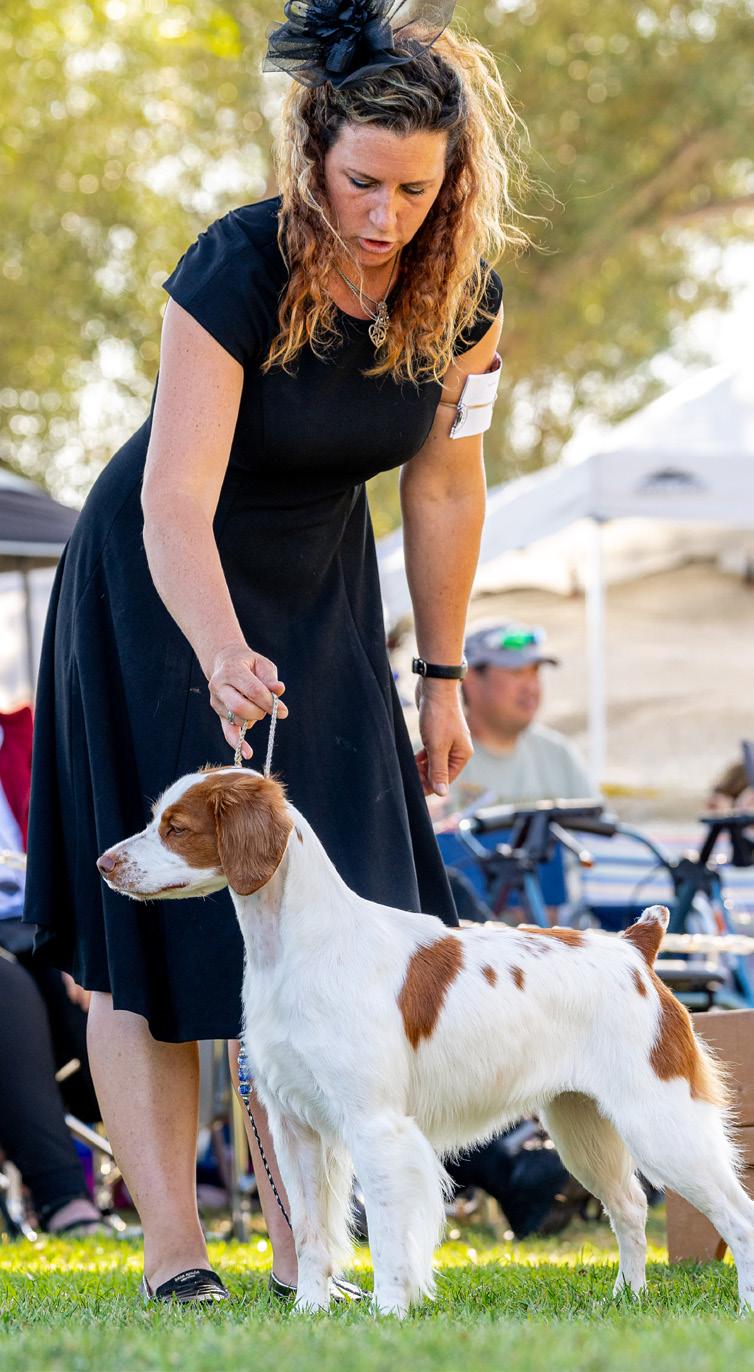
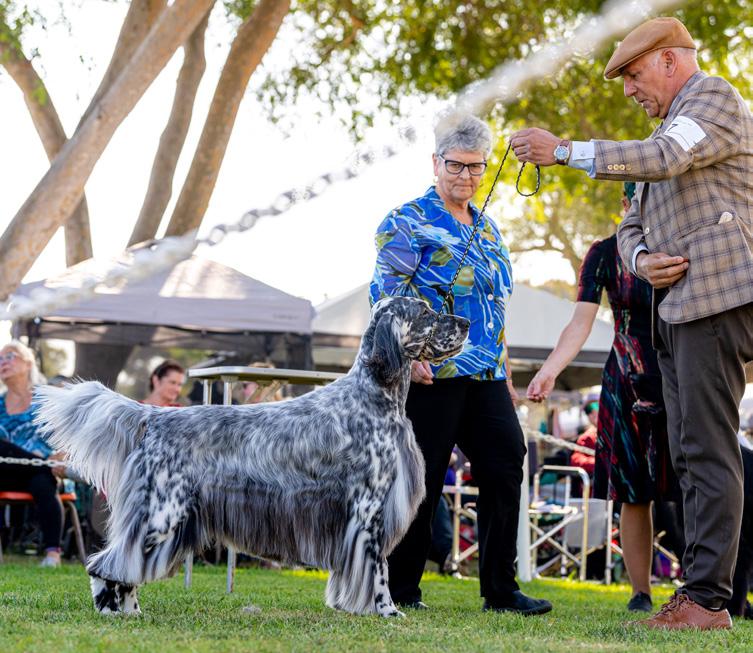



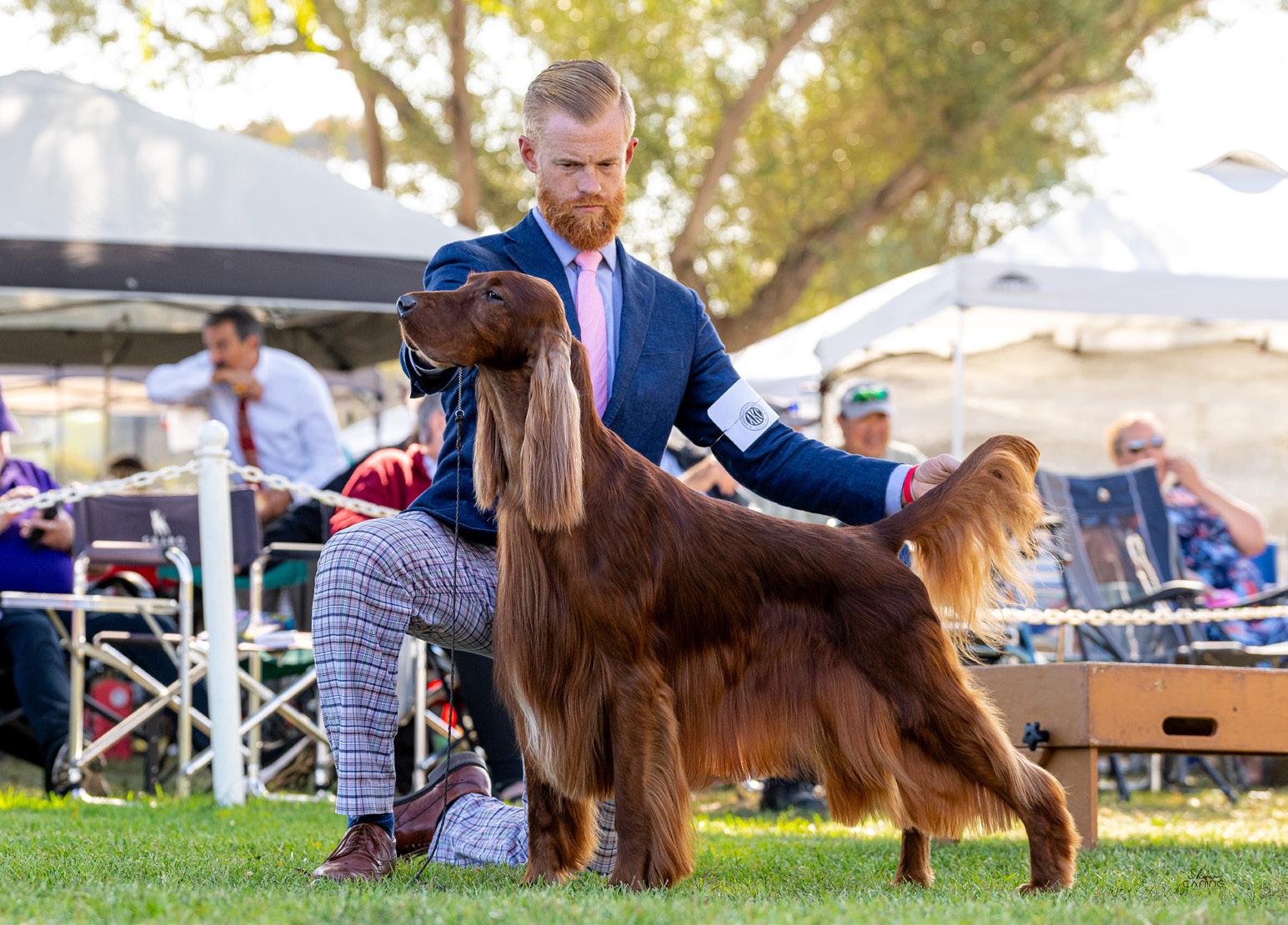

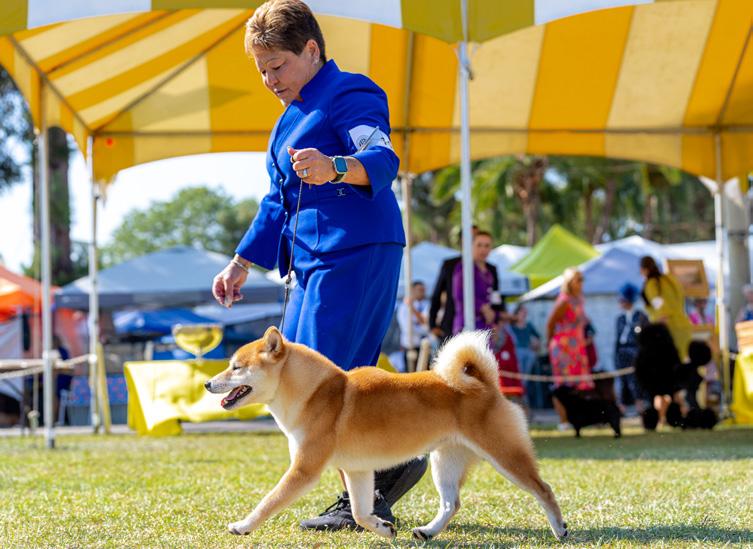
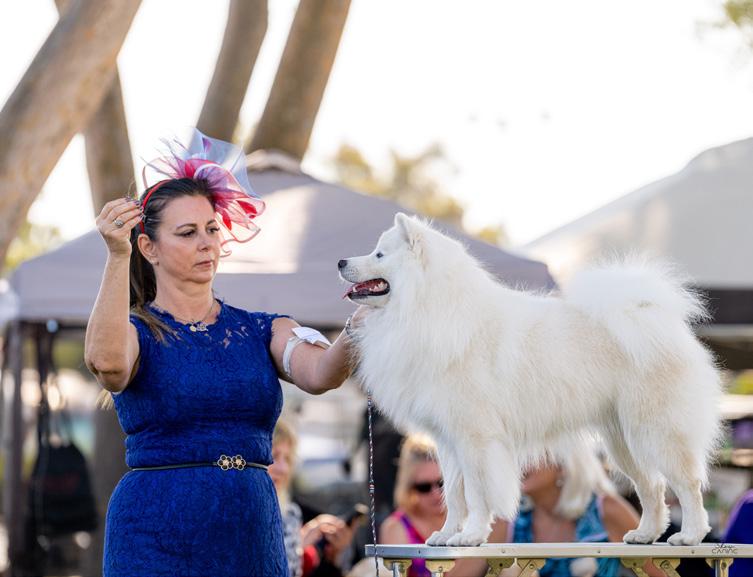

Saturday, August 24th
SPORTING GROUP
#1- GCHG Vjk-Myst Heir To The Throne JH FDC
CGCA CGCU TKN BN-V
Breed: Pointer (German Shorthaired)
Handler: Valerie Nunes-Atkinson
Owner: Y Deterding, V Atkinson & S Stutz
Breeder: S Stutz, Y Deterding & V Atkinson
HOUND GROUP
#1-GCHG Zaida Bint Muti Von Haussman
Breed: Afghan Hound
Handler: Willy Santiago
Owner: R Podesta, S Pfeil, J Donahue & A
Sobrado
Breeder: R Podesta
WORKING GROUP
#1-GCH Tybrushe Livin On The Edge Of X-Cellence
Breed: Boxer
Handler: Michael Shepherd
Owner: B Tan
Breeder: B Tan
TERRIER GROUP
#1- CH Grabo Frankie Goes To Mabor
Breed: Bull Terrier (Colored)
Handler: Sarah Byzewski
Owner: S Byzewski
Breeder: G & R Thomas
TOY GROUP
#1- GCHP Wynmark’s Les Bijoux’s RockN Rolz At Reverie
Breed: Havanese
Handler: David Murray
Owner: F Holt, M Coombs, B & C Hewlett & B
White
Breeder: M Coombs & F Holt
NON-SPORTING GROUP
#1- GCHB Rock’N’Rolla Black Obsidian
Breed: Poodle (Standard)
Handler: Olivia Hodgkinson
Owner: O Fagenboym
Breeder: O Fagenboym
HERDING GROUP
#1- GCHS LoveN’ Stuff One For The Road [Dog]
Breed: Old English Sheepdog
Owner: M & K Marshall

JUDGE: Mr. Arne Foss
GCHB Rock’N’Rolla Black Obsidian
Breed: Poodle (Standard)
Handler: Olivia Hodgkinson
Owner: O Fagenboym
Breeder: O Fagenboym
GCHG Zaida Bint Muti Von Haussman
Breed: Afghan Hound
Handler: Willy Santiago
Owner: R Podesta, S Pfeil, J Donahue & A Sobrado
Breeder: R Podesta











Sunday, August 25th
SPORTING GROUP
#1- GCHS Russet Leather Soaring Pegasus Of Tamaron RN SWN SHDN CGC TKN ATT
Breed: Vizsla
Handler: Susie Olivera
Owner: J McClintock, R Graves, B Wanjon & C Woods
Breeder: C Woods & T & L Westerbeck
HOUND GROUP
#1-GCHG Zaida Bint Muti Von Haussman
Breed: Afghan Hound
Handler: Willy Santiago
Owner: R Podesta, S Pfeil, J Donahue & A Sobrado
Breeder: R Podesta
WORKING GROUP
#1-GCH Tybrushe Livin On The Edge Of X-Cellence
Breed: Boxer
Handler: Michael Shepherd
Owner: B Tan
Breeder: B Tan
TERRIER GROUP
#1- GCH Studio Be Curios JP Justice Hero
Breed: Welsh Terrier
Handler: Gabriel Rangel
Owner: J See, Y Iguchi & G & Y Rangel
Breeder: Y Iguchi
TOY GROUP
#1- GCHP Wynmark’s Les Bijoux’s RockN Rolz At Reverie
Breed: Havanese
Handler: David Murray
Owner: F Holt, M Coombs, B & C Hewlett & B White
Breeder: M Coombs & F Holt
NON-SPORTING GROUP
#1- GCHB Rock’N’Rolla Black Obsidian
Breed: Poodle (Standard)
Handler: Olivia Hodgkinson
Owner: O Fagenboym
Breeder: O Fagenboym
HERDING GROUP
#1- : GCHS Scott’s Georgia On My Mind
Breed: Bearded Collie
Handler: Susie Olivera
Owner: C & T Wathen & J & S Olivera
Breeder: C & T Wathen & J & S Olivera

JUDGE: Mr. Laurent Pichard
GCHB Rock’N’Rolla Black Obsidian
Breed: Poodle (Standard)
Handler: Olivia Hodgkinson
Owner: O Fagenboym
Breeder: O Fagenboym
GCHG Zaida Bint Muti Von Haussman
Breed: Afghan Hound
Handler: Willy Santiago
Owner: R Podesta, S Pfeil, J Donahue & A Sobrado
Breeder: R Podesta



